
- UPCOMING!
SARah 1
- Rocket: Falcon 9
- Launch pad: VAFB SLC 4E
- Launch date: April 1st 2022, 12:00 am
- Media:

- UPCOMING!
NROL-87
- Rocket: Falcon 9
- Launch pad: VAFB SLC 4E
- Launch date: February 2nd 2022, 4:37 pm
- Media:

- UPCOMING!
Starlink 4-7 (v1.5)
- Rocket: Falcon 9
- Launch pad: KSC LC 39A
- Launch date: January 29th 2022, 12:00 am
- Media:

- UPCOMING!
CSG-2
- Rocket: Falcon 9
- Launch pad: CCSFS SLC 40
- Launch date: January 27th 2022, 11:11 pm
- Media:

- SUCCESS
Starlink 4-6 (v1.5)
- Rocket: Falcon 9
- Launch pad: KSC LC 39A
- Launch date: January 19th 2022, 12:04 am
- Media:

- SUCCESS
Transporter-3
- Rocket: Falcon 9
- Launch pad: CCSFS SLC 40
- Launch date: January 13th 2022, 3:25 pm
- Media:
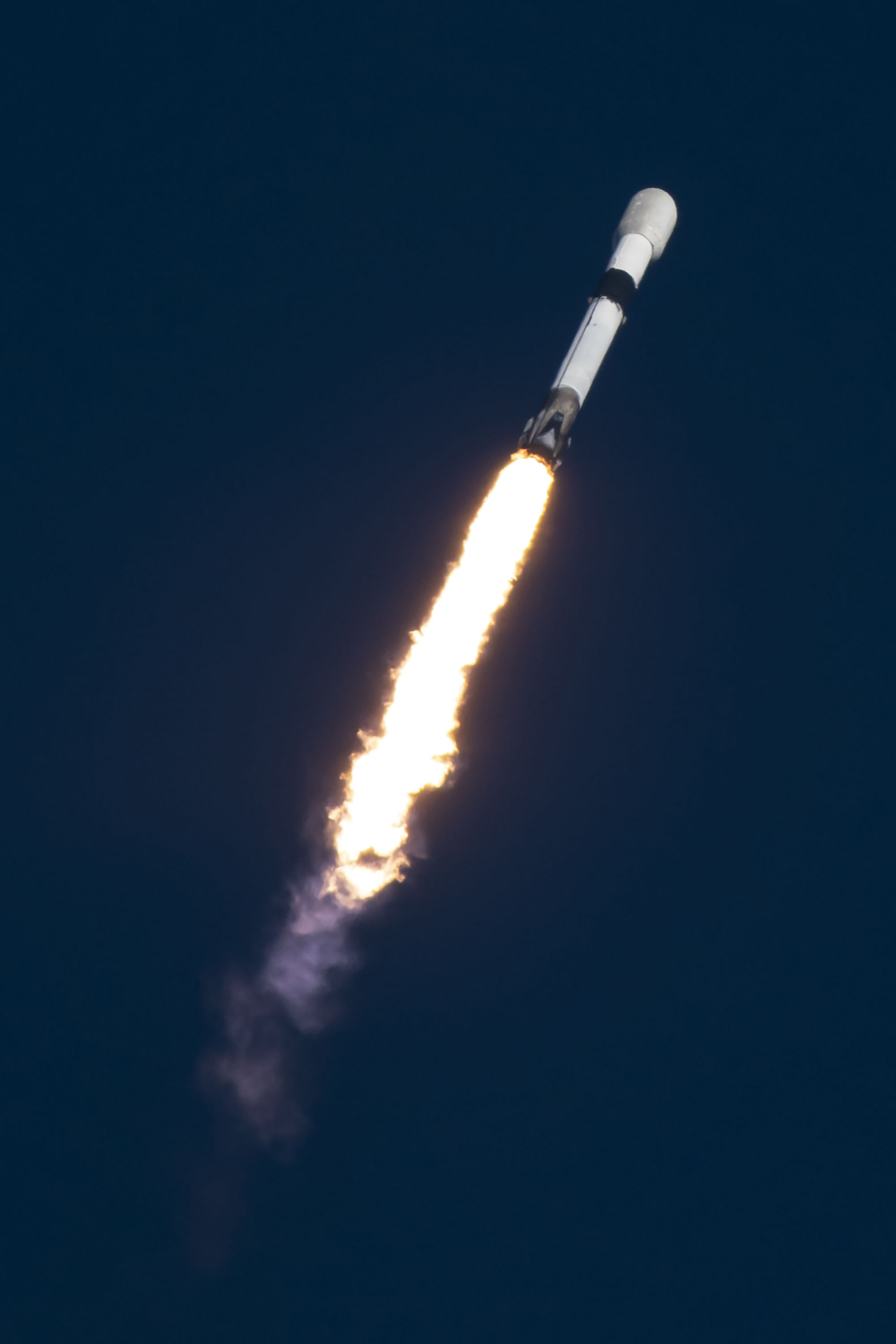
- SUCCESS
Starlink 4-5 (v1.5)
- Rocket: Falcon 9
- Launch pad: KSC LC 39A
- Launch date: January 6th 2022, 9:49 pm
- Media:

- SUCCESS
CRS-24
- Rocket: Falcon 9
- Launch pad: KSC LC 39A
- Launch date: December 21st 2021, 10:06 am
- SpaceX's 24th ISS resupply mission on behalf of NASA, this mission brings essential supplies to the International Space Station using the cargo variant of SpaceX's Dragon 2 spacecraft. Cargo includes several science experiments. The booster for this mission is expected to land on an ASDS. The mission will be complete with return and recovery of the Dragon capsule and down cargo.
- Media:

- SUCCESS
Türksat 5B
- Rocket: Falcon 9
- Launch pad: CCSFS SLC 40
- Launch date: December 19th 2021, 3:58 am
- The Türksat 5B communication satellite, which its construction work continues at Airbus Defense and Space's facilities in Toulouse, France, will soon be sent to the Cape Canaveral Space Launch Station located in Florida, United States. The satellite will be launched into space onboard the Falcon 9 rocket following pre-launch preparations. With an estimated in-orbit lifetime of 30 years and the aim of securing Turkey’s orbital and frequency rights, Türksat 5B will be launched into an orbital slot at 42 degrees East. With 12 kW power, Türksat 5B will provide TV broadcasting and data communication services over a wide coverage area that reaches the entire Middle East, the Persian Gulf, the Red Sea, the Mediterranean, North Africa, East Africa, South Africa and Nigeria. Apart from that, the satellite will also provide customized services for airlines and commercial ship operators around the world thanks to the fact that it operates in Ka-Band.
- Media:

- SUCCESS
Starlink 4-4 (v1.5)
- Rocket: Falcon 9
- Launch pad: VAFB SLC 4E
- Launch date: December 18th 2021, 12:41 pm
- The mission consists in launching 52 Starlink v1.5 satellites to Shell number 4 at 53.2°. This is unusual as the mission is launching from Vandenberg as these missions usually launch from the East Coast.
- Media:
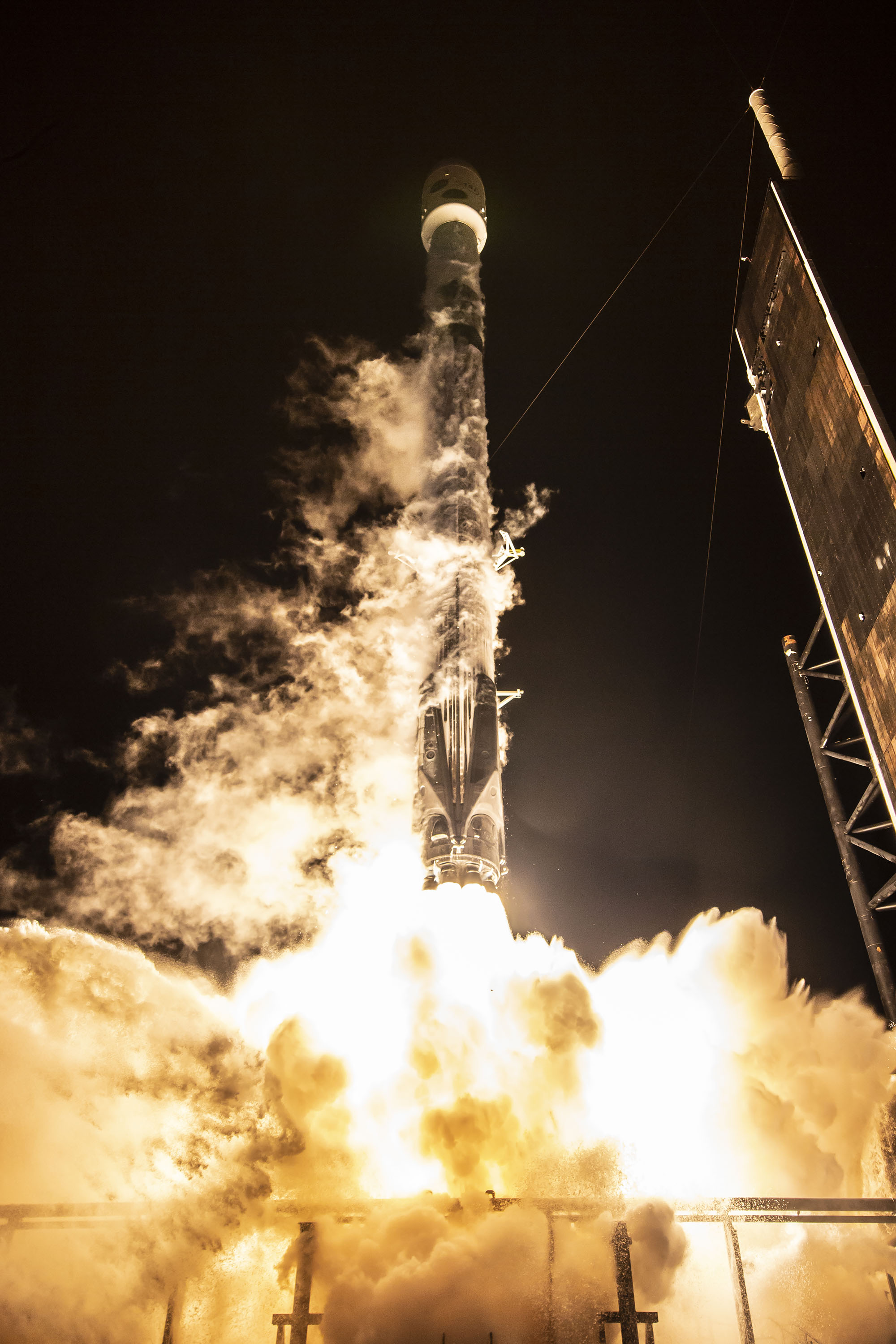
- SUCCESS
IXPE
- Rocket: Falcon 9
- Launch pad: KSC LC 39A
- Launch date: December 9th 2021, 6:00 am
- Media:

- SUCCESS
Starlink 4-3 (v1.5)
- Rocket: Falcon 9
- Launch pad: CCSFS SLC 40
- Launch date: December 1st 2021, 11:20 pm
- Media:

- SUCCESS
DART
- Rocket: Falcon 9
- Launch pad: VAFB SLC 4E
- Launch date: November 24th 2021, 6:20 am
- NASA's Double Asteroid Redirect Test (DART) will demonstrate the use of a kinetic impactor to alter an asteroid's trajectory, an intervention that could be used in the future to prevent devastating Earth impacts. The target system consists of Didymos, 780 meters in diameter, and its moonlet Dimorphos, 160 meters. The DART spacecraft will intercept the double asteroid, using autonomous guidance to crash into the smaller one. Moving at about 6 km/s, the transferred momentum should alter Dimorphos's 12 hour orbital period around its companion by several minutes. The mission tests several technologies, including the Small-body Maneuvering Autonomous Real-Time Navigation (SMART Nav) used to differentiate and steer toward the target body and Roll-Out Solar Arrays (ROSA) with Transformational Solar Array concentrators. NASA’s Evolutionary Xenon Thruster — Commercial (NEXT–C) ion engine will also be demonstrated, although the spacecraft's primary propulsion is hydrazine thrusters. DART should arrive at Didymos in late September 2022, when it is about 11 million kilometers from Earth. Ten days before impact, the Italian Space Agency's cubesat LICIACube will be deployed to observe the collision and ejecta with its two cameras. Earth-based telescopes will be used to measure the altered orbit.
- Media:

- SUCCESS
Starlink 4-1 (v1.5)
- Rocket: Falcon 9
- Launch pad: CCSFS SLC 40
- Launch date: November 13th 2021, 12:40 pm
- Media:
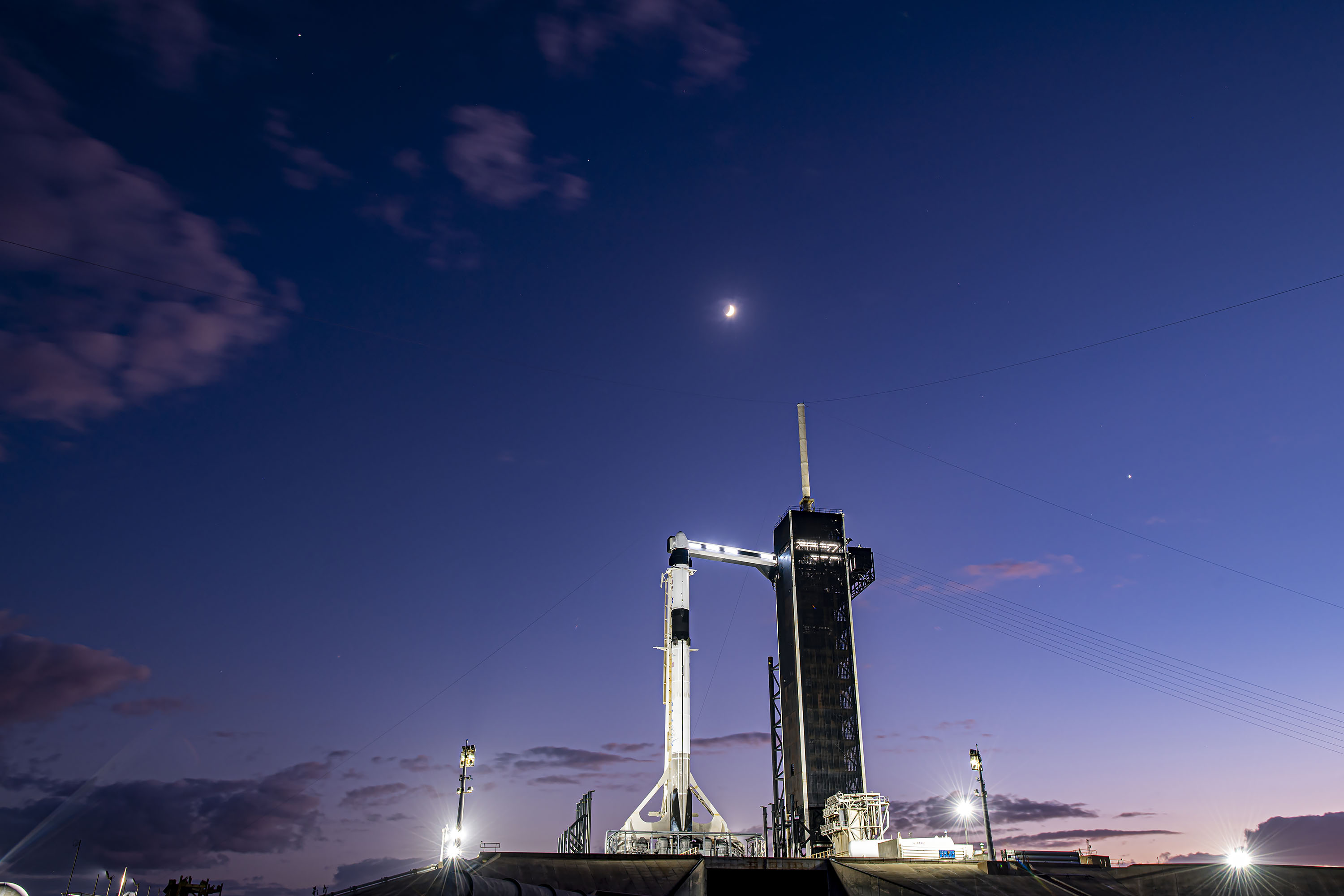
- SUCCESS
Crew-3
- Rocket: Falcon 9
- Launch pad: KSC LC 39A
- Launch date: November 11th 2021, 2:03 am
- SpaceX will launch the third operational mission of its Crew Dragon vehicle as part of NASA's Commercial Crew Program, carrying four astronauts to the International Space Station, including 1 international partner This mission will fly on a new capsule and a once used booster. The booster will land downrange on a drone ship. The Crew-2 mission returns from the space station in November.
- Media:

- SUCCESS
Inspiration4
- Rocket: Falcon 9
- Launch pad: KSC LC 39A
- Launch date: September 16th 2021, 12:02 am
- Inspiration4 is the world’s first all-civilian mission to space. The mission will be commanded by Jared Isaacman, the 37-year-old founder and Chief Executive Officer of Shift4 Payments and an accomplished pilot and adventurer. Inspiration4 will leave Earth from Kennedy Space Center’s historic Launch Complex 39A, the embarkation point for Apollo and Space Shuttle missions, and travel across a low earth orbit on a multi-day journey that will continually eclipse more than 90% of the earth’s population. Named in recognition of the four-person crew that will raise awareness and funds for St. Jude Children’s Research Hospital, this milestone represents a new era for human spaceflight and exploration.
- Media:

- SUCCESS
Starlink 2-1 (v1.5)
- Rocket: Falcon 9
- Launch pad: VAFB SLC 4E
- Launch date: September 14th 2021, 3:55 am
- Media:
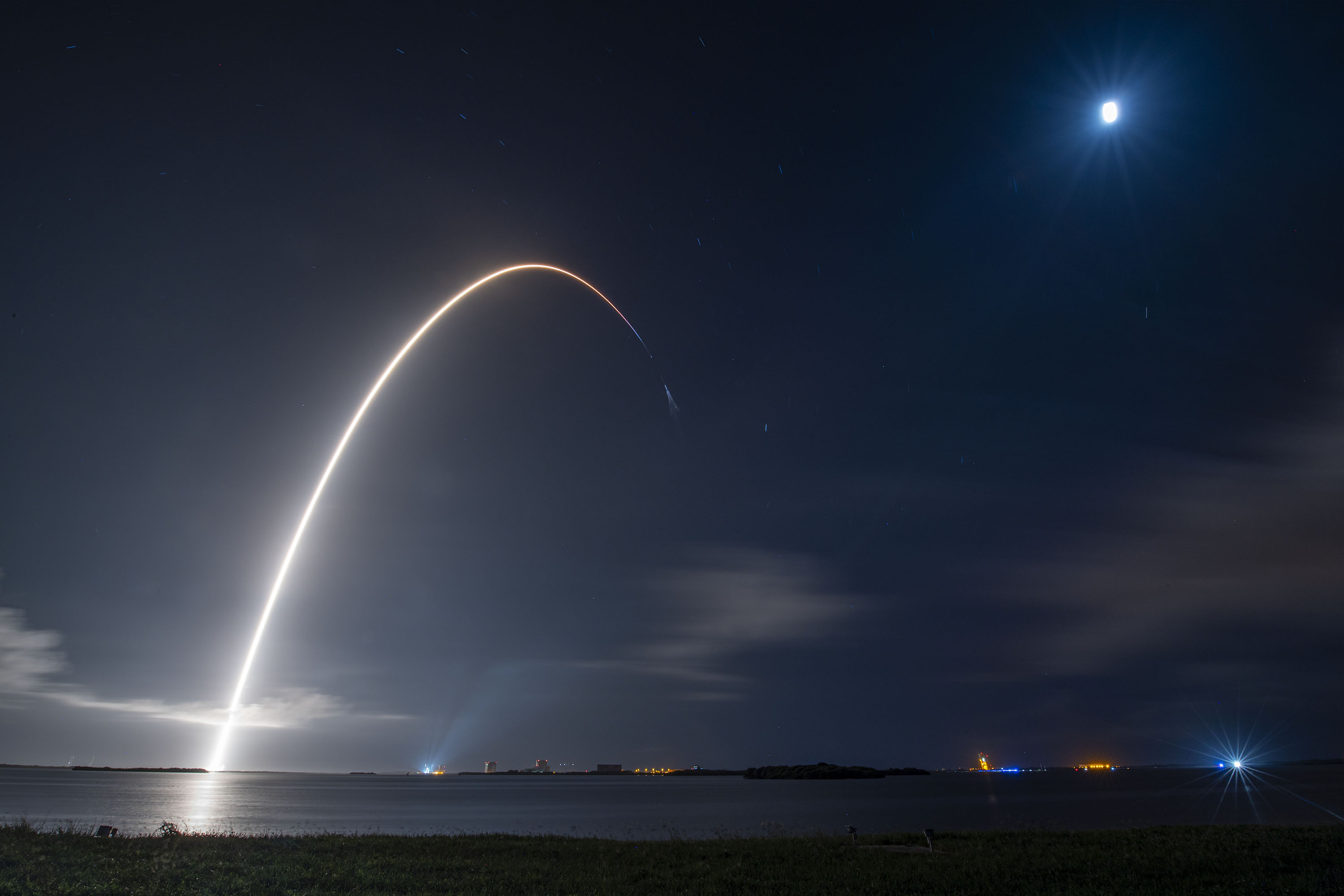
- SUCCESS
CRS-23
- Rocket: Falcon 9
- Launch pad: KSC LC 39A
- Launch date: August 29th 2021, 7:14 am
- SpaceX's 23rd ISS resupply mission on behalf of NASA, this mission brings essential supplies to the International Space Station using the cargo variant of SpaceX's Dragon 2 spacecraft. Cargo includes several science experiments. The booster for this mission is expected to land on an ASDS. The mission will be complete with return and recovery of the Dragon capsule and down cargo.
- Media:
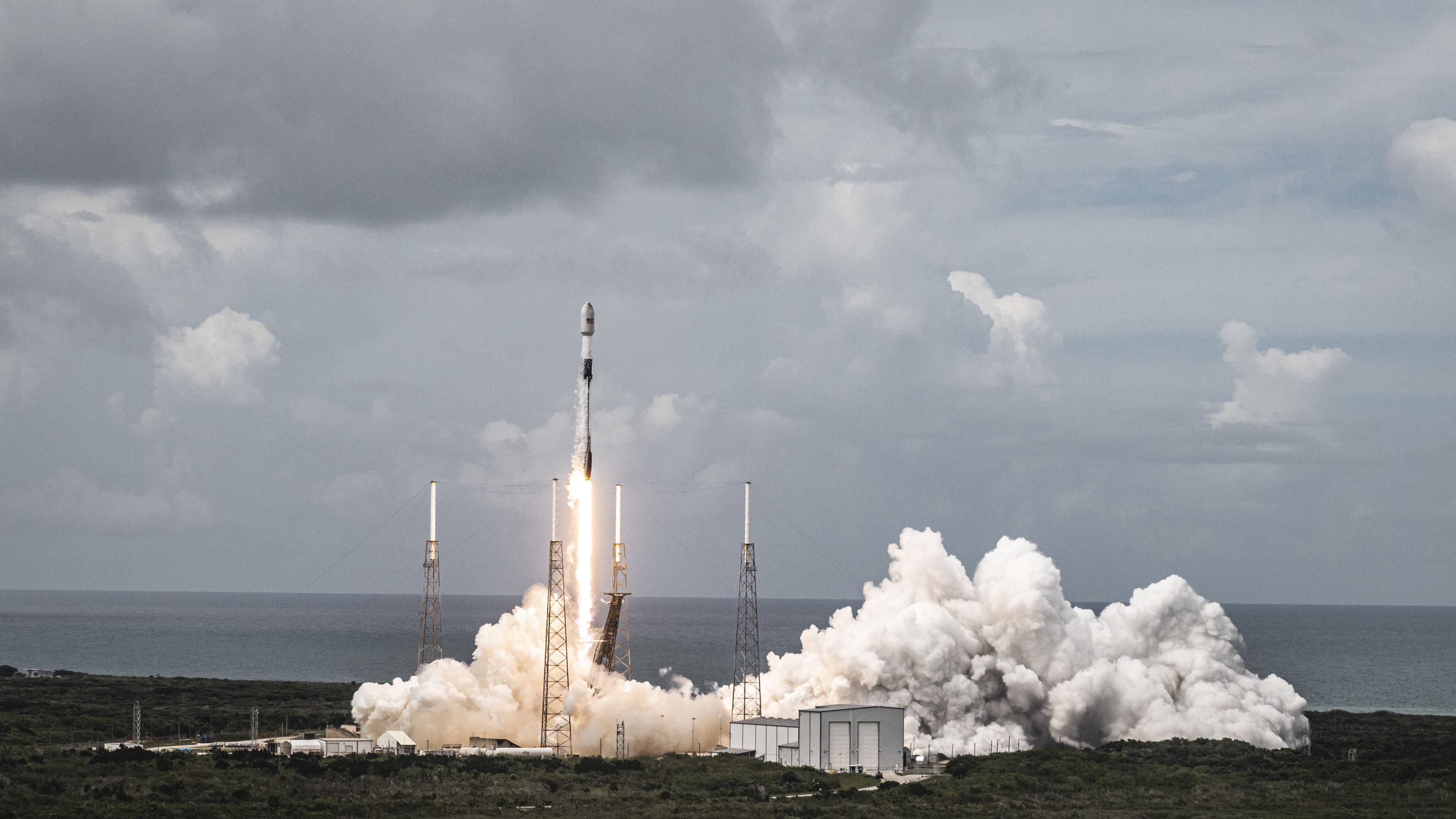
- SUCCESS
Transporter-2
- Rocket: Falcon 9
- Launch pad: CCSFS SLC 40
- Launch date: June 30th 2021, 7:31 pm
- Falcon 9 launches to sun-synchronous polar orbit from Florida as part of SpaceX's Rideshare program dedicated to smallsat customers. The mission lifts off from SLC-40, Cape Canaveral on a southward azimuth and performs a dogleg maneuver. The booster for this mission is expected to return to LZ-1 based on FCC communications filings. This rideshare takes approximately 90 satellites and hosted payloads into orbit on a variety of deployers including three free-flying spacecraft which dispense their customers' satellites after separation from the SpaceX stack.
- Media:
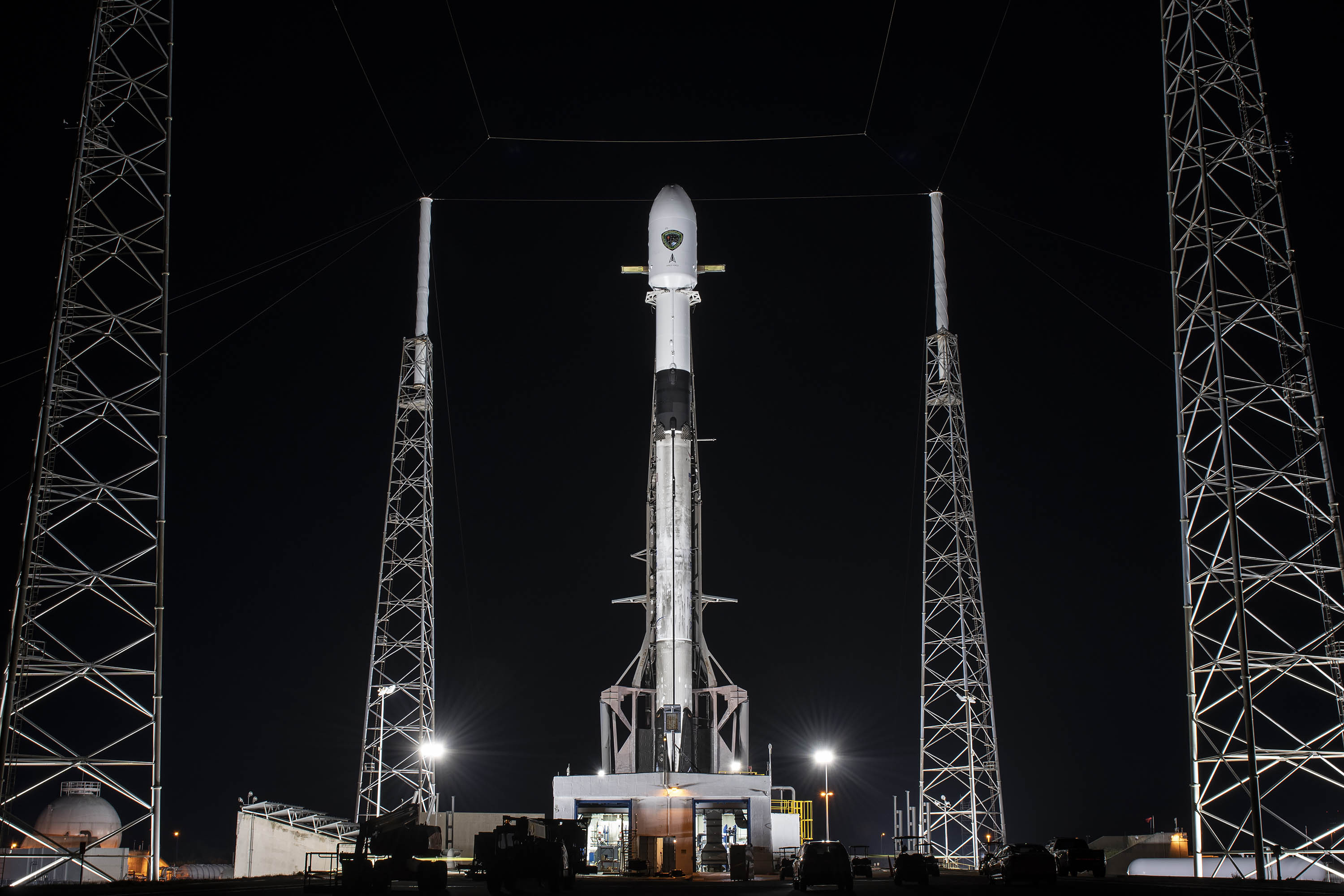
- SUCCESS
GPS III SV05
- Rocket: Falcon 9
- Launch pad: CCSFS SLC 40
- Launch date: June 17th 2021, 4:09 pm
- SpaceX's fourth GPS III launch will use the first stage from the previous GPS mission. This will be the first time a National Security Space Launch has flown on a flight proven booster. Falcon 9 will launch from SLC-40, Cape Canaveral and the booster will land downrange on a drone ship. GPS III is the third generation of the U.S. Space Force's NAVSTAR Global Positioning System satellites, developed by Lockheed Martin. The GPS III constellation will feature a cross-linked command and control architecture, allowing the entire GPS constellation to be updated simultaneously from a single ground station. A new spot beam capability for enhanced military coverage and increased resistance to hostile jamming will be incorporated.
- Media:

- SUCCESS
SXM-8
- Rocket: Falcon 9
- Launch pad: CCSFS SLC 40
- Launch date: June 6th 2021, 4:26 am
- SpaceX launches the second of two next generation satellites for SiriusXM from SLC-40, Cape Canaveral Space Force Station. The spacecraft will be delivered into a sub-synchronous geostationary transfer orbit and will replace XM-4 in geostationary orbit. The booster for this mission will land on an ASDS.
- Media:

- SUCCESS
CRS-22 & IROSA
- Rocket: Falcon 9
- Launch pad: KSC LC 39A
- Launch date: June 3rd 2021, 5:29 pm
- SpaceX's 22nd ISS resupply mission on behalf of NASA, this mission sends essential supplies to the International Space Station using the cargo variant of SpaceX's Dragon 2 spacecraft. The external payload for this mission is the first pair of ISS Roll Out Solar Arrays. Falcon 9 and Dragon launch from LC-39A, Kennedy Space Center and the booster is expected to land on an ASDS. The mission will be complete with splashdown and recovery of the capsule and down cargo.
- Media:

- SUCCESS
Starlink-28 (v1.0)
- Rocket: Falcon 9
- Launch pad: CCSFS SLC 40
- Launch date: May 26th 2021, 6:59 pm
- This mission launches the 28th batch of operational Starlink satellites, which were version 1.0, from SLC-40. It was the 29th Starlink launch overall. The satellites plan to be delivered to low Earth orbit and will spend a few weeks maneuvering to their operational altitude. The booster is expected to land on ASDS JRTI.
- Media:
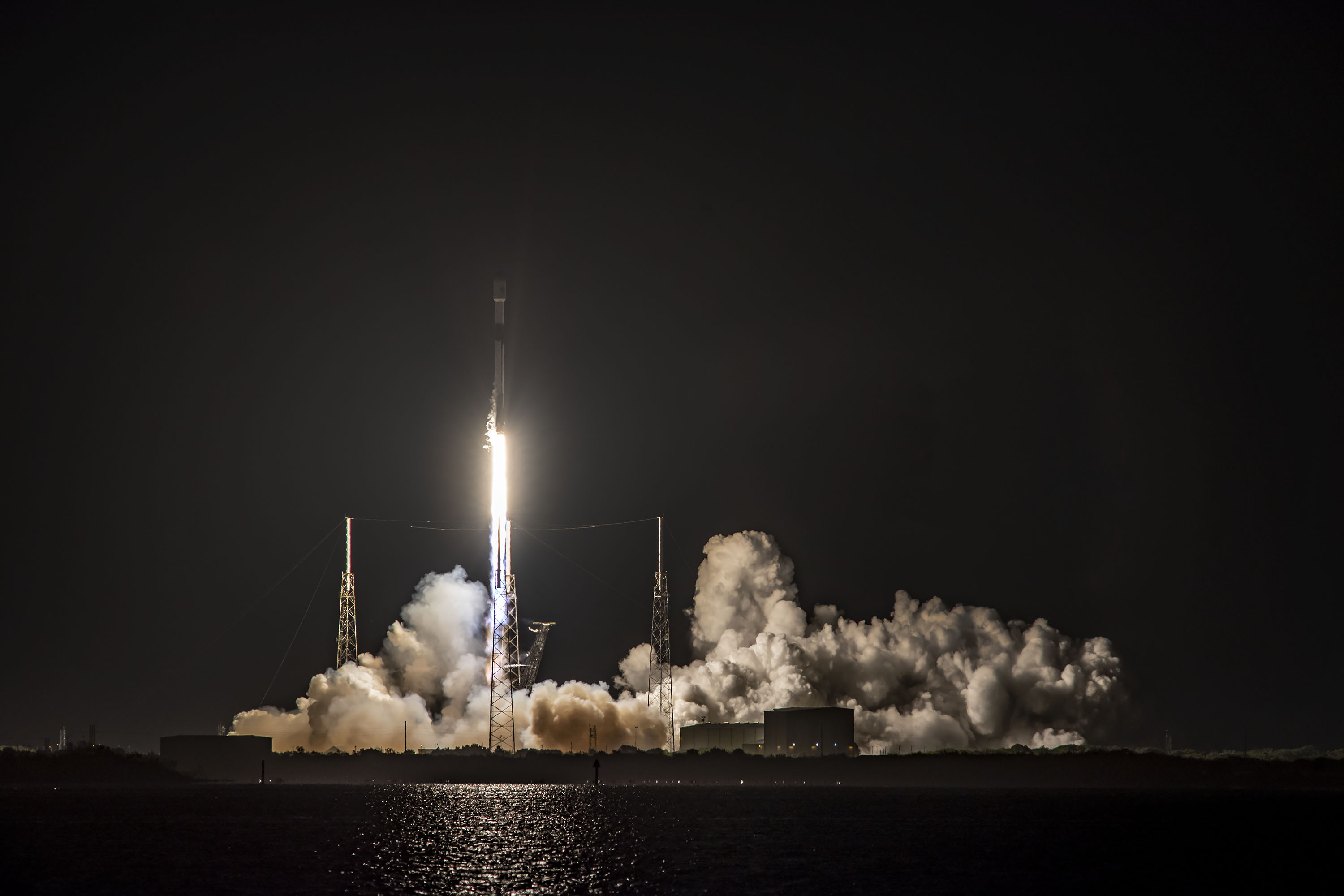
- SUCCESS
Starlink-26 (v1.0) + Capella-6 + Tyvak-0130
- Rocket: Falcon 9
- Launch pad: KSC LC 39A
- Launch date: May 15th 2021, 10:54 pm
- This mission launches the 27th batch of operational Starlink satellites, which are version 1.0, from LC-39A or SLC-40. It is the 28th Starlink launch overall. The satellites will be delivered to low Earth orbit and will spend a few weeks maneuvering to their operational altitude. The booster is expected to land on an ASDS.
- Media:

- SUCCESS
Starlink-27 (v1.0)
- Rocket: Falcon 9
- Launch pad: CCSFS SLC 40
- Launch date: May 9th 2021, 6:42 am
- This mission launches the 26th batch of operational Starlink satellites, which are version 1.0, from SLC-40. It is the 27th Starlink launch overall. The satellites will be delivered to low Earth orbit and will spend a few weeks maneuvering to their operational altitude. The booster is expected to land on an ASDS.
- Media:

- SUCCESS
Starlink-25 (v1.0)
- Rocket: Falcon 9
- Launch pad: KSC LC 39A
- Launch date: May 4th 2021, 7:01 pm
- This mission launches the 25th batch of operational Starlink satellites, which are version 1.0, from LC-39A. It is the 26th Starlink launch overall. The satellites will be delivered to low Earth orbit and will spend a few weeks maneuvering to their operational altitude. The booster is expected to land on OCISLY.
- Media:

- SUCCESS
Starlink-24 (v1.0)
- Rocket: Falcon 9
- Launch pad: CCSFS SLC 40
- Launch date: April 29th 2021, 3:44 am
- This mission launches the 24th batch of operational Starlink satellites, which are version 1.0, from LC-39A or SLC-40. It is the 25th Starlink launch overall. The satellites will be delivered to low Earth orbit and will spend a few weeks maneuvering to their operational altitude. The booster is expected to land on an ASDS.
- Media:
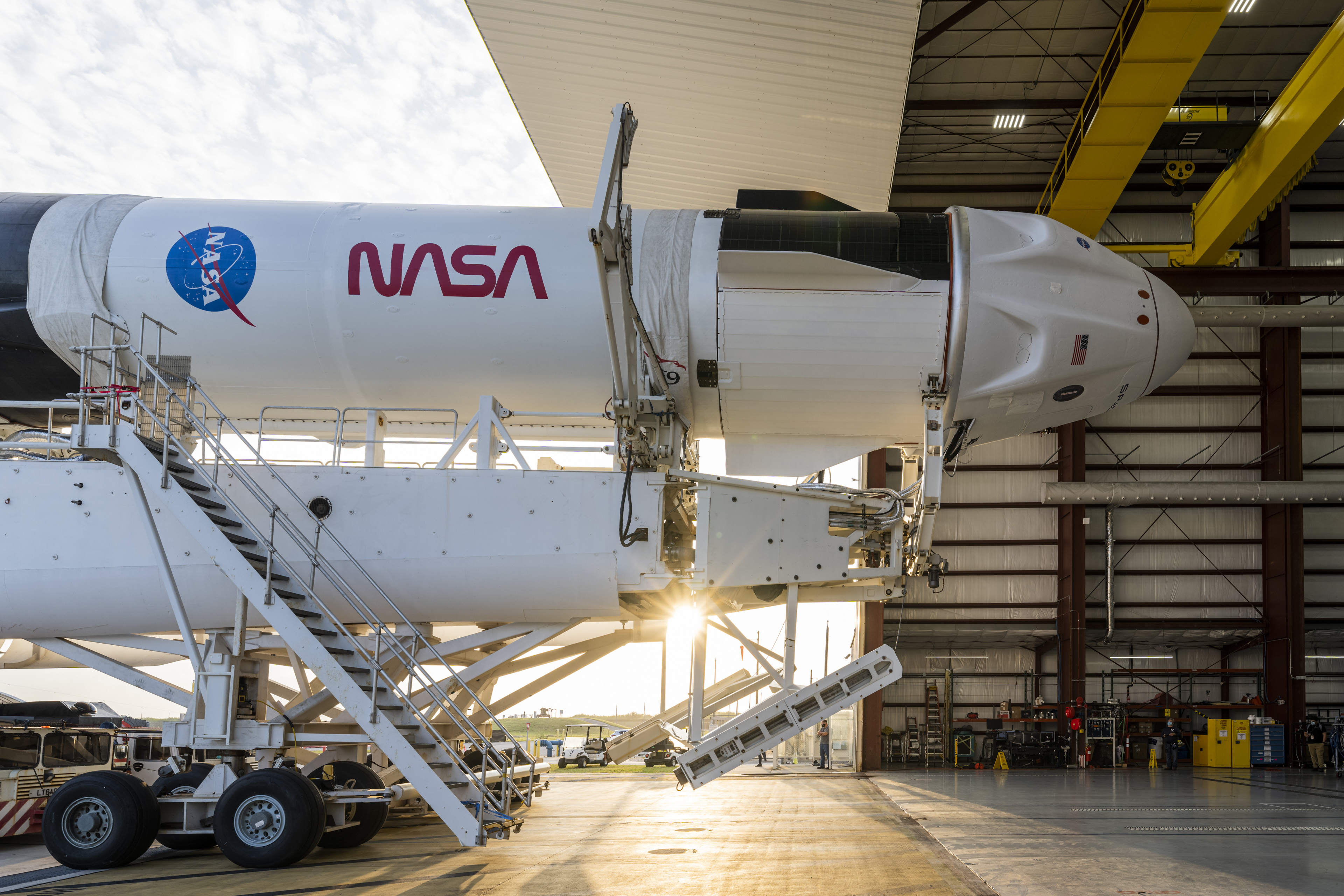
- SUCCESS
Crew-2
- Rocket: Falcon 9
- Launch pad: KSC LC 39A
- Launch date: April 23rd 2021, 9:49 am
- SpaceX launches the second operational mission of its Crew Dragon vehicle as part of NASA's Commercial Crew Program, carrying NASA astronauts Shane Kimbrough, Megan McArthur, Thomas Pesquet, and Akihiko Hoshide to the International Space Station. The Falcon 9 and Crew Dragon lift off from LC-39A, Kennedy Space Center. Both the booster and the capsule have flown previously, each a first for a commercial crew flight. The booster for this mission is expected to land on an ASDS. The mission will be complete with the safe return of the astronauts to Earth.
- Media:

- SUCCESS
Starlink-23 (v1.0)
- Rocket: Falcon 9
- Launch pad: CCSFS SLC 40
- Launch date: April 7th 2021, 4:34 pm
- This mission launches the 23rd batch of operational Starlink satellites, which are version 1.0, from or SLC-40 or LC-39A. It is the 24th Starlink launch overall. The satellites will be delivered to low Earth orbit and will spend a few weeks maneuvering to their operational altitude. The booster is expected to land on an ASDS.
- Media:

- SUCCESS
Starlink-22 (v1.0)
- Rocket: Falcon 9
- Launch pad: CCSFS SLC 40
- Launch date: March 24th 2021, 8:28 am
- This mission launches the 22nd batch of operational Starlink satellites, which are version 1.0, from or SLC-40. It is the 23rd Starlink launch overall. The satellites will be delivered to low Earth orbit and will spend a few weeks maneuvering to their operational altitude. The booster is expected to land on an ASDS.
- Media:

- SUCCESS
Starlink-21 (v1.0)
- Rocket: Falcon 9
- Launch pad: KSC LC 39A
- Launch date: March 14th 2021, 10:01 am
- This mission launches the 21st batch of operational Starlink satellites, which are version 1.0, from LC-39A or SLC-40. It is the 22nd Starlink launch overall. The satellites will be delivered to low Earth orbit and will spend a few weeks maneuvering to their operational altitude. The booster is expected to land on an ASDS.
- Media:
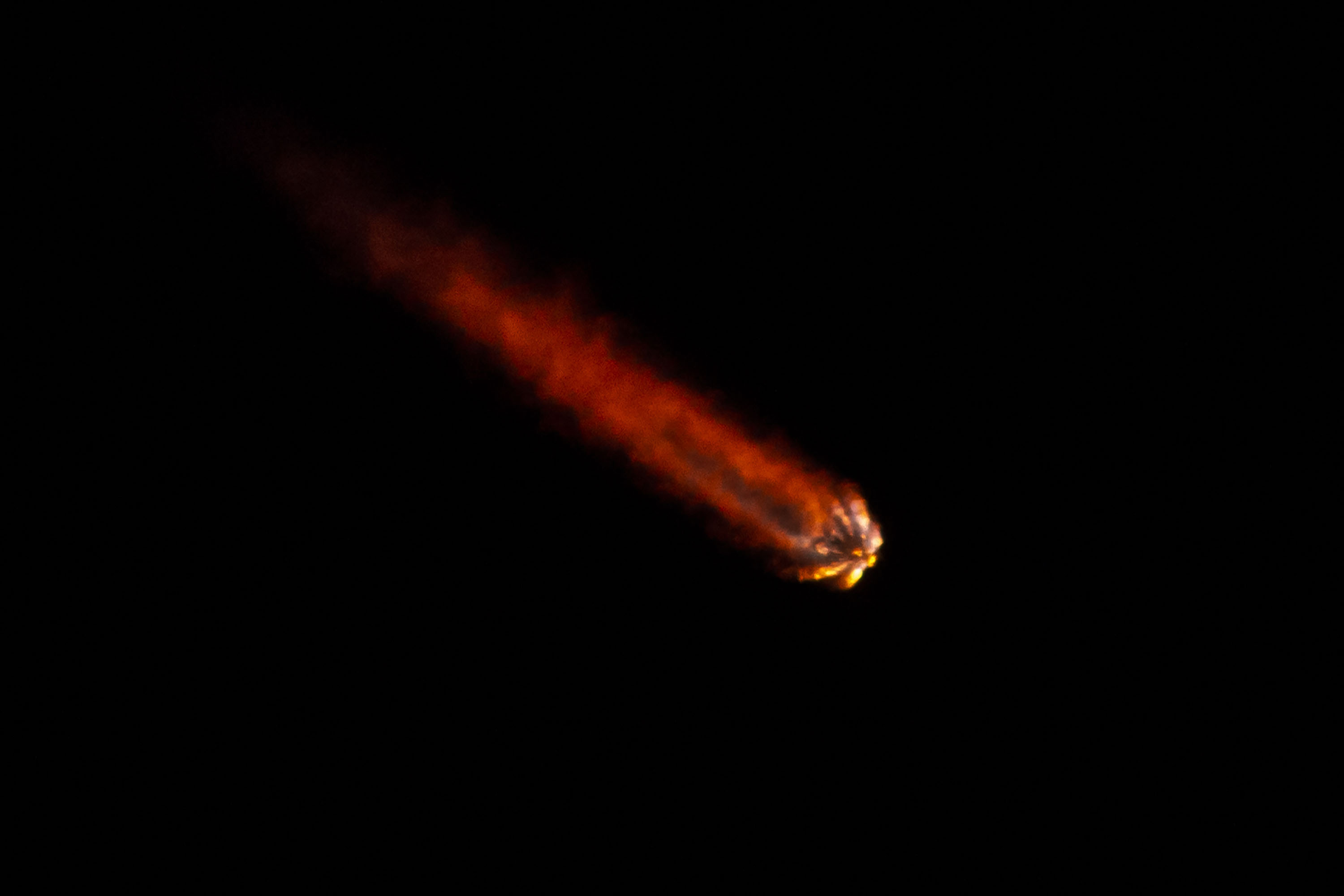
- SUCCESS
Starlink-20 (v1.0)
- Rocket: Falcon 9
- Launch pad: CCSFS SLC 40
- Launch date: March 11th 2021, 8:13 am
- This mission launches the 20th batch of operational Starlink satellites, which are version 1.0, from LC-39A or SLC-40. It is the 21st Starlink launch overall. The satellites will be delivered to low Earth orbit and will spend a few weeks maneuvering to their operational altitude. The booster is expected to land on an ASDS.
- Media:

- SUCCESS
Starlink-17 (v1.0)
- Rocket: Falcon 9
- Launch pad: KSC LC 39A
- Launch date: March 4th 2021, 8:24 am
- This mission launches the sixteenth batch of operational Starlink satellites, which are version 1.0, from LC-39A. It is the eighteenth Starlink launch overall. The satellites will be delivered to low Earth orbit and will spend a few weeks maneuvering to their operational altitude. The booster is expected to land on an ASDS.
- Media:

- SUCCESS
Starlink-19 (v1.0)
- Rocket: Falcon 9
- Launch pad: CCSFS SLC 40
- Launch date: February 16th 2021, 3:59 am
- This mission launches the eighteenth batch of operational Starlink satellites, which are version 1.0, from SLC-40. It is the nineteenth Starlink launch overall. The satellites will be delivered to low Earth orbit and will spend a few weeks maneuvering to their operational altitude. The booster is expected to land on an ASDS.
- Media:

- SUCCESS
Starlink-18 (v1.0)
- Rocket: Falcon 9
- Launch pad: CCSFS SLC 40
- Launch date: February 4th 2021, 6:19 am
- This mission launches the eighteenth batch of operational Starlink satellites, which are version 1.0, from SLC-40. It is the nineteenth Starlink launch overall. The satellites will be delivered to low Earth orbit and will spend a few weeks maneuvering to their operational altitude. The booster is expected to land on an ASDS.
- Media:
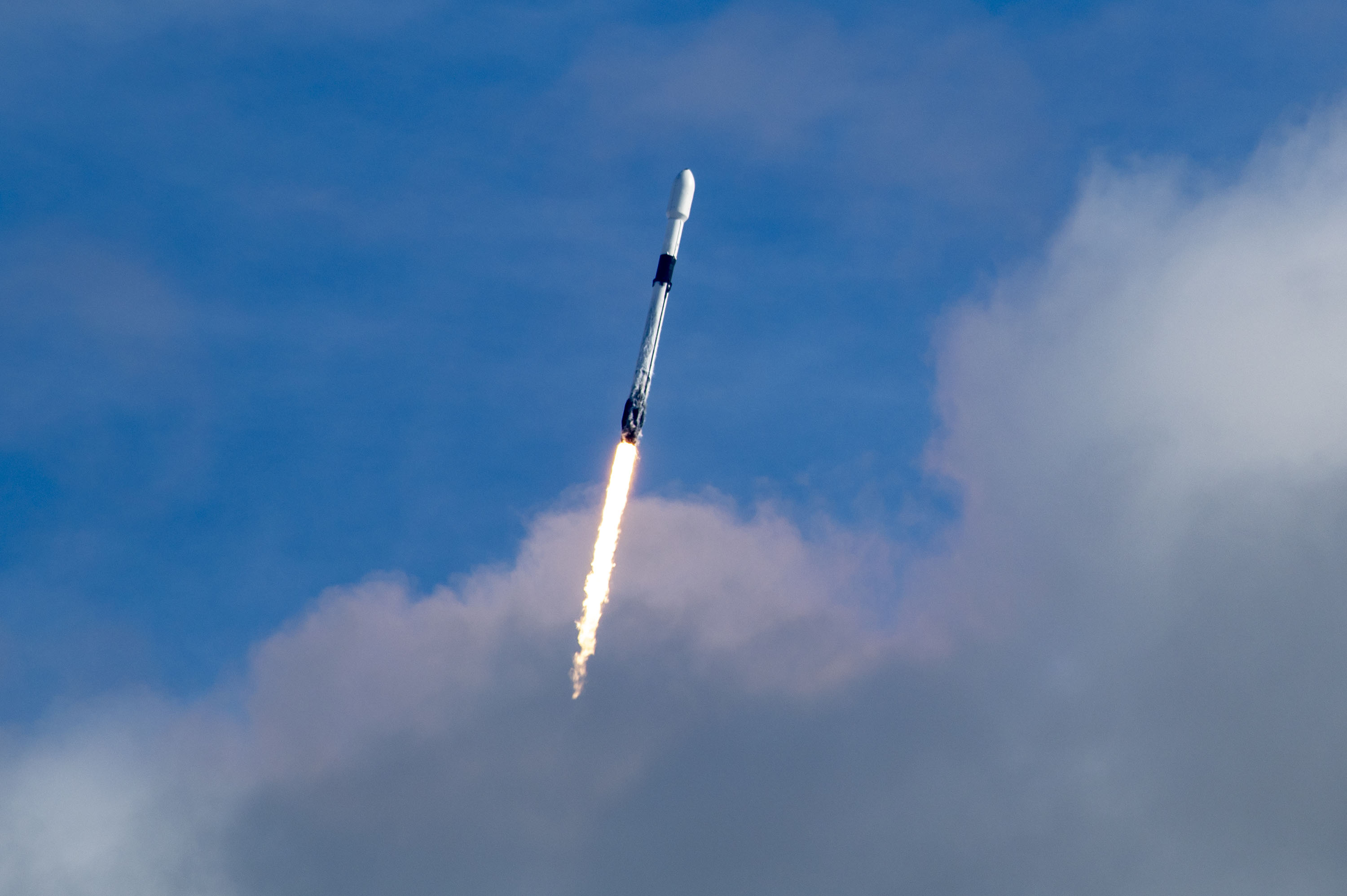
- SUCCESS
Transporter-1
- Rocket: Falcon 9
- Launch pad: CCSFS SLC 40
- Launch date: January 24th 2021, 3:00 pm
- SpaceX will launch a dedicated rideshare mission from SLC-40 or LC-39A. The spacecraft will be delivered into a sun-synchronous orbit. The booster for this mission is expected to land on an ASDS.
- Media:

- SUCCESS
Starlink-16 (v1.0)
- Rocket: Falcon 9
- Launch pad: KSC LC 39A
- Launch date: January 20th 2021, 1:02 pm
- This mission launches the sixteenth batch of operational Starlink satellites, which are version 1.0, from SLC-40 or LC-39A. It is the seventeenth Starlink launch overall. The satellites will be delivered to low Earth orbit and will spend a few weeks maneuvering to their operational altitude. The booster is expected to land on an ASDS.
- Media:

- SUCCESS
Turksat 5A
- Rocket: Falcon 9
- Launch pad: CCSFS SLC 40
- Launch date: January 8th 2021, 2:15 am
- SpaceX will launch the first of two next generation satellites on contract for Türksat. Türksat 5A is a Ku-band broadcast satellite built by Airbus Defense and Space and based on the Electric Orbit Raising version of the Eurostar E3000 platform. This spacecraft will be delivered into a transfer orbit and will then raise itself to its operational 31° East geostationary orbit to serve Turkey, the Middle East, Europe, North Africa and South Africa. The booster for this mission will be recovered downrange via ASDS.
- Media:
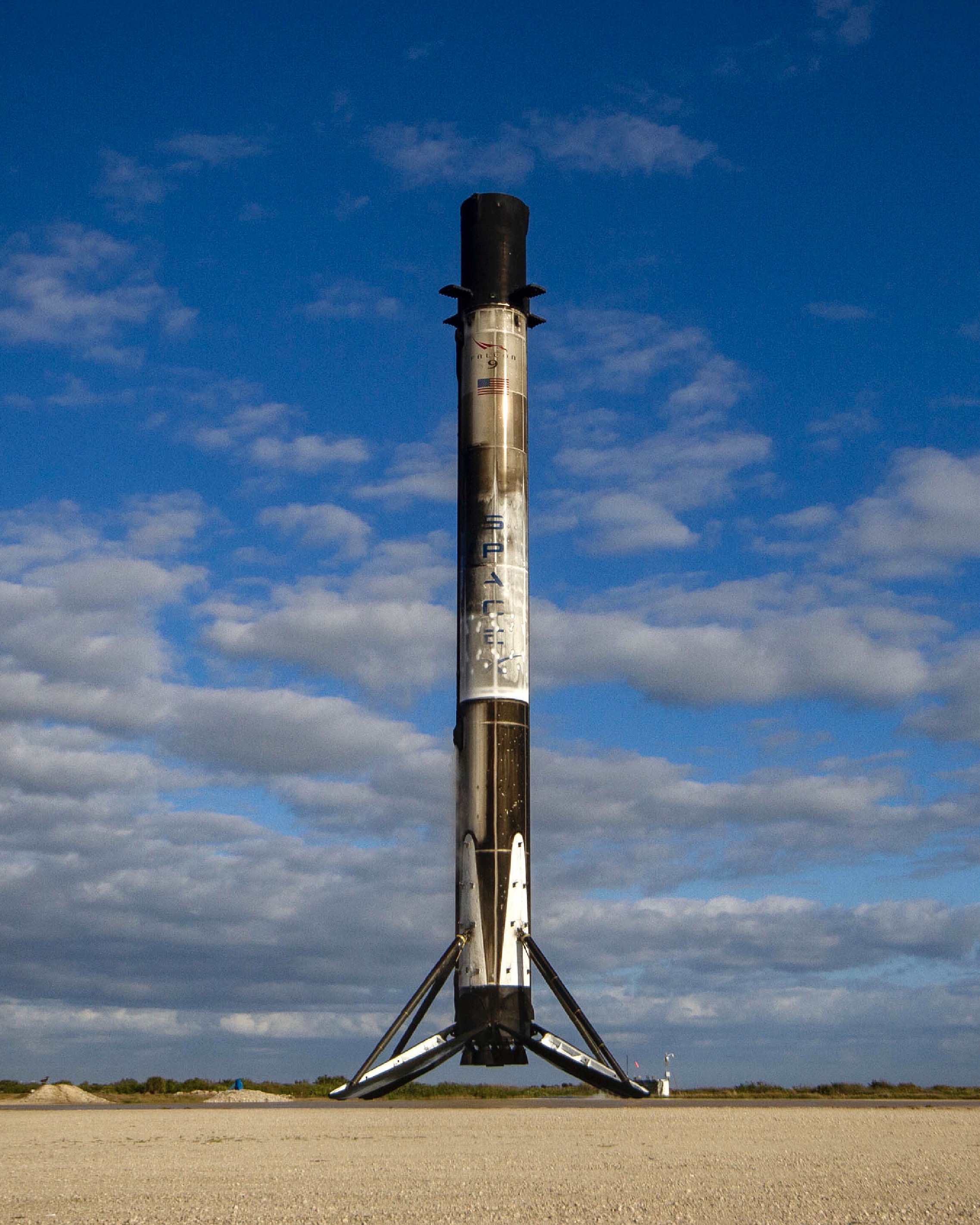
- SUCCESS
NROL-108
- Rocket: Falcon 9
- Launch pad: KSC LC 39A
- Launch date: December 19th 2020, 2:00 pm
- SpaceX will launch NROL-108 for the National Reconnaissance Office aboard a Falcon 9 from SLC-40, Cape Canaveral Air Force Station. The booster for this mission is expected to land at LZ-1.
- Media:
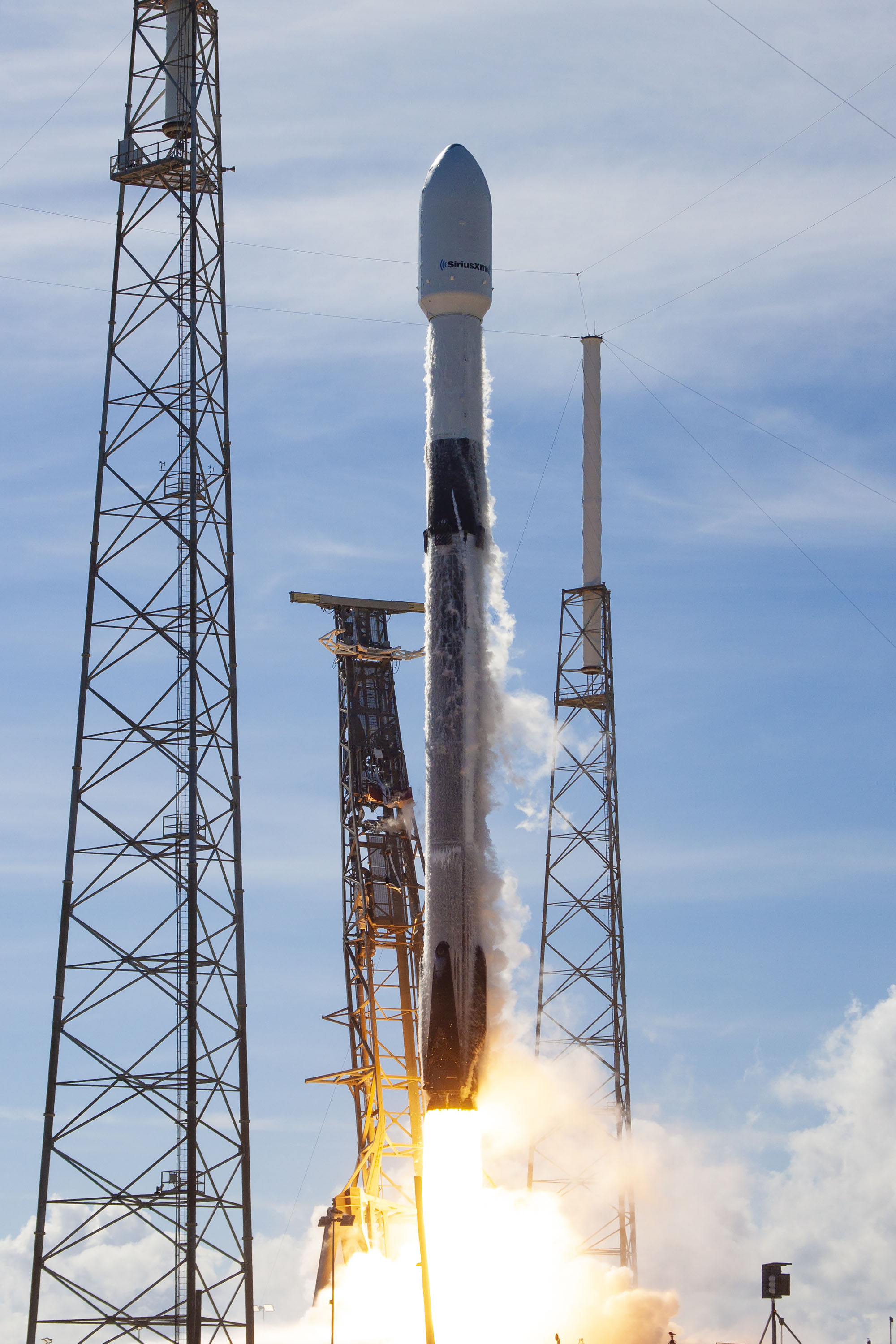
- SUCCESS
SXM-7
- Rocket: Falcon 9
- Launch pad: CCSFS SLC 40
- Launch date: December 13th 2020, 5:30 pm
- SpaceX will launch the first of two next generation high power S-band broadcast satellites for SiriusXM. The spacecraft will be delivered into a geostationary transfer orbit and the booster will be recovered downrange. The spacecraft is built by Space Systems Loral (SSL) on the SSL 1300 platform and includes two solar arrays producing 20kW, and an unfurlable antenna dish. SXM-7 will replace XM-3 in geostationary orbit.
- Media:
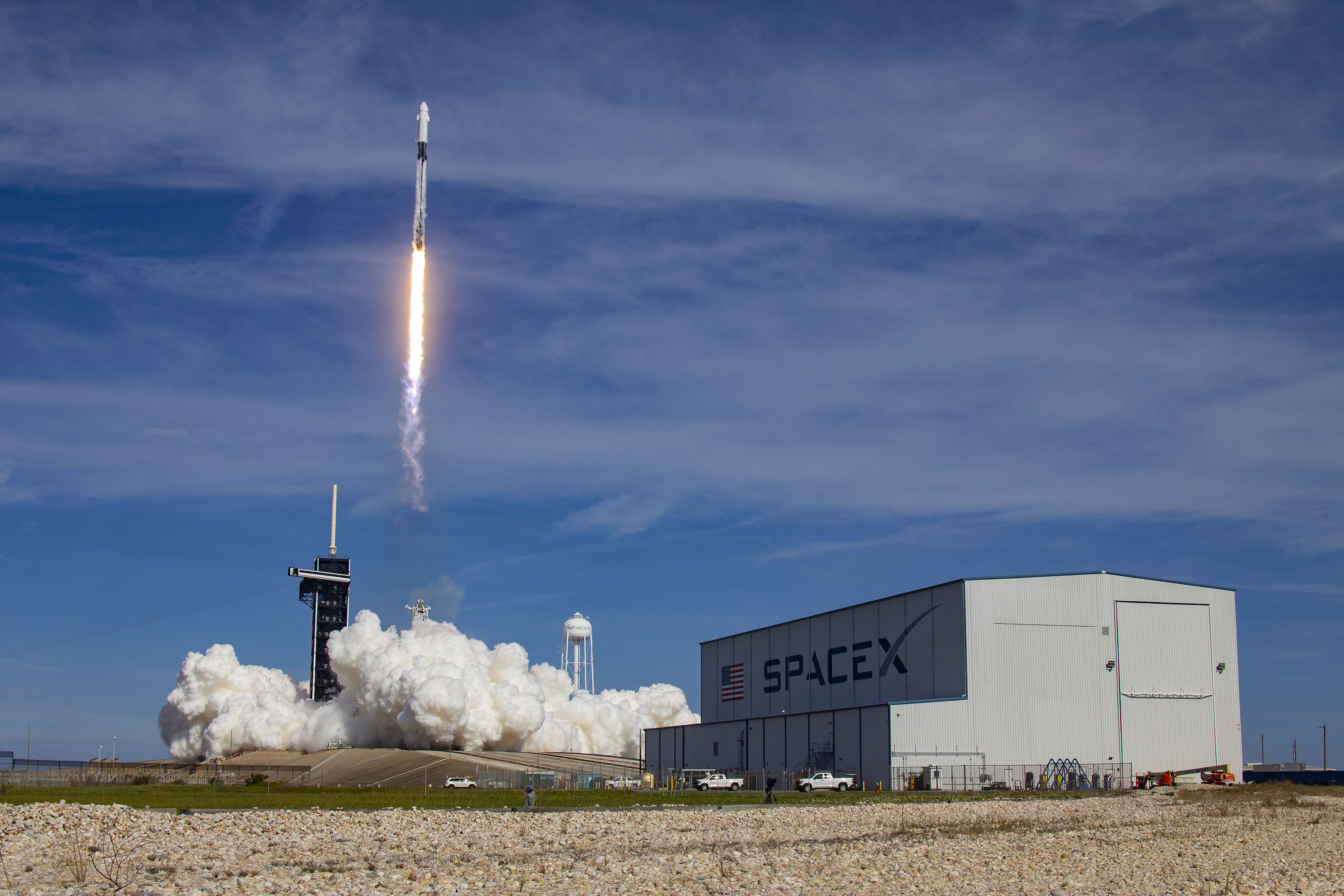
- SUCCESS
CRS-21
- Rocket: Falcon 9
- Launch pad: KSC LC 39A
- Launch date: December 6th 2020, 4:17 pm
- SpaceX's 21st ISS resupply mission on behalf of NASA and the first under the CRS-2 contract, this mission brings essential supplies to the International Space Station using the cargo variant of SpaceX's Dragon 2 spacecraft. The external payload for this mission is the Nanoracks Bishop Airlock. Falcon 9 and Dragon launch from LC-39A, Kennedy Space Center and the booster is expected to land on an ASDS. The mission will be complete with return and recovery of the Dragon capsule and down cargo.
- Media:

- SUCCESS
Starlink-15 (v1.0)
- Rocket: Falcon 9
- Launch pad: CCSFS SLC 40
- Launch date: November 25th 2020, 2:13 am
- This mission will launch the fifteenth batch of operational Starlink satellites, which are version 1.0, from SLC-40, Cape Canaveral Air Force Station. It will be the sixteenth Starlink launch overall. The satellites will be delivered to low Earth orbit and will spend a few weeks maneuvering to their operational altitude of 550 km. The booster for this mission is expected to land on an ASDS.
- Media:

- SUCCESS
Sentinel-6 Michael Freilich
- Rocket: Falcon 9
- Launch pad: VAFB SLC 4E
- Launch date: November 21st 2020, 5:17 pm
- SpaceX will launch Sentinel-6 Michael Freilich into low Earth orbit for NASA, NOAA, ESA, and the European Organization for the Exploitation of Meteorological Satellites aboard a Falcon 9 from SLC-4E, Vandenberg Air Force Station. Sentinel-6(A) is an ocean observation satellite providing radar ocean surface altimetry data and also atmospheric temperature profiles as a secondary mission. The booster for this mission is will land at LZ-4.
- Media:
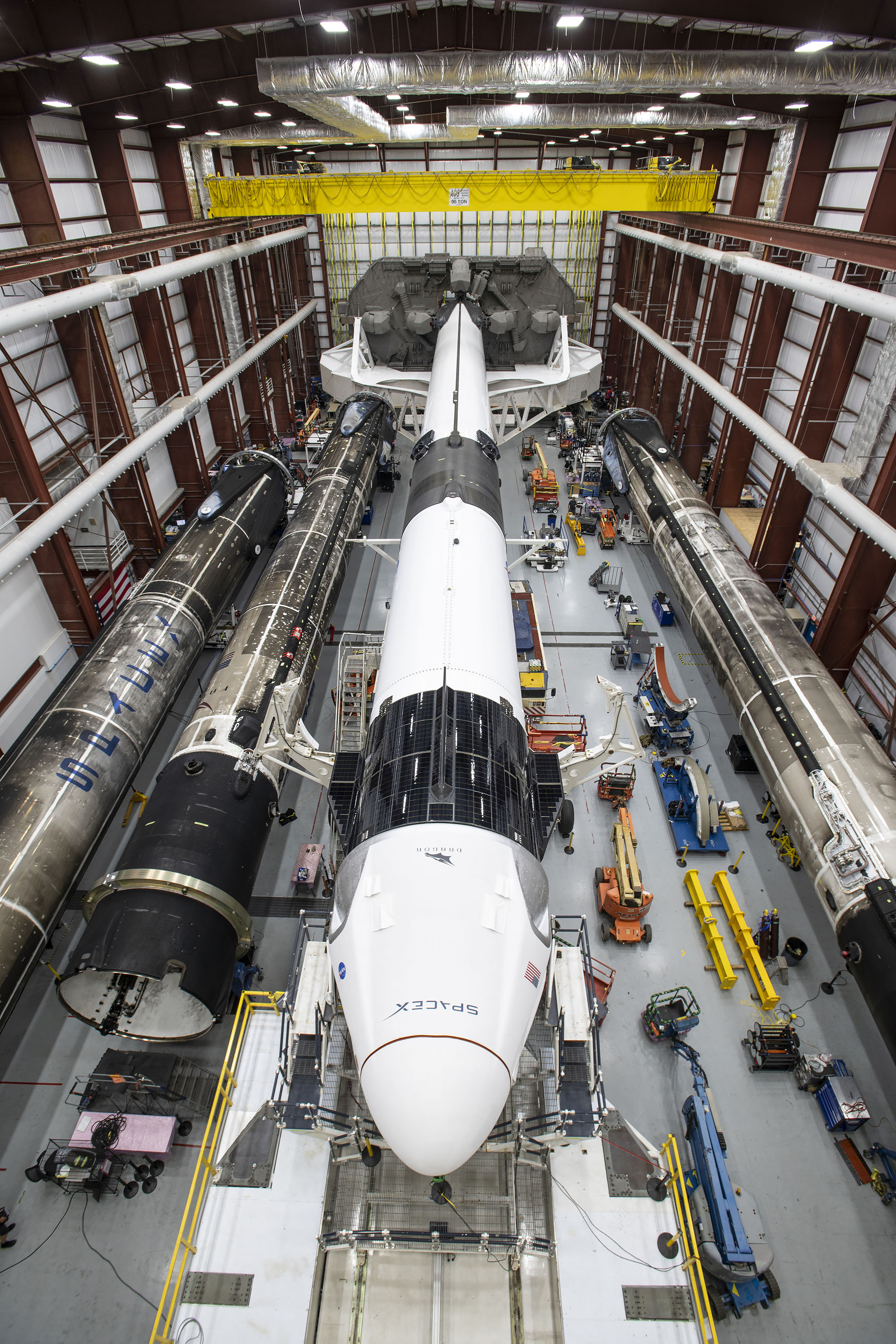
- SUCCESS
Crew-1
- Rocket: Falcon 9
- Launch pad: KSC LC 39A
- Launch date: November 16th 2020, 12:27 am
- SpaceX will launch the first operational mission of its Crew Dragon vehicle as part of NASA's Commercial Crew Transportation Capability Program (CCtCap), carrying 3 NASA astronauts and 1 JAXA astronaut to the International Space Station. This mission will be the second crewed flight to launch from the United States since the end of the Space Shuttle program in 2011.
- Media:
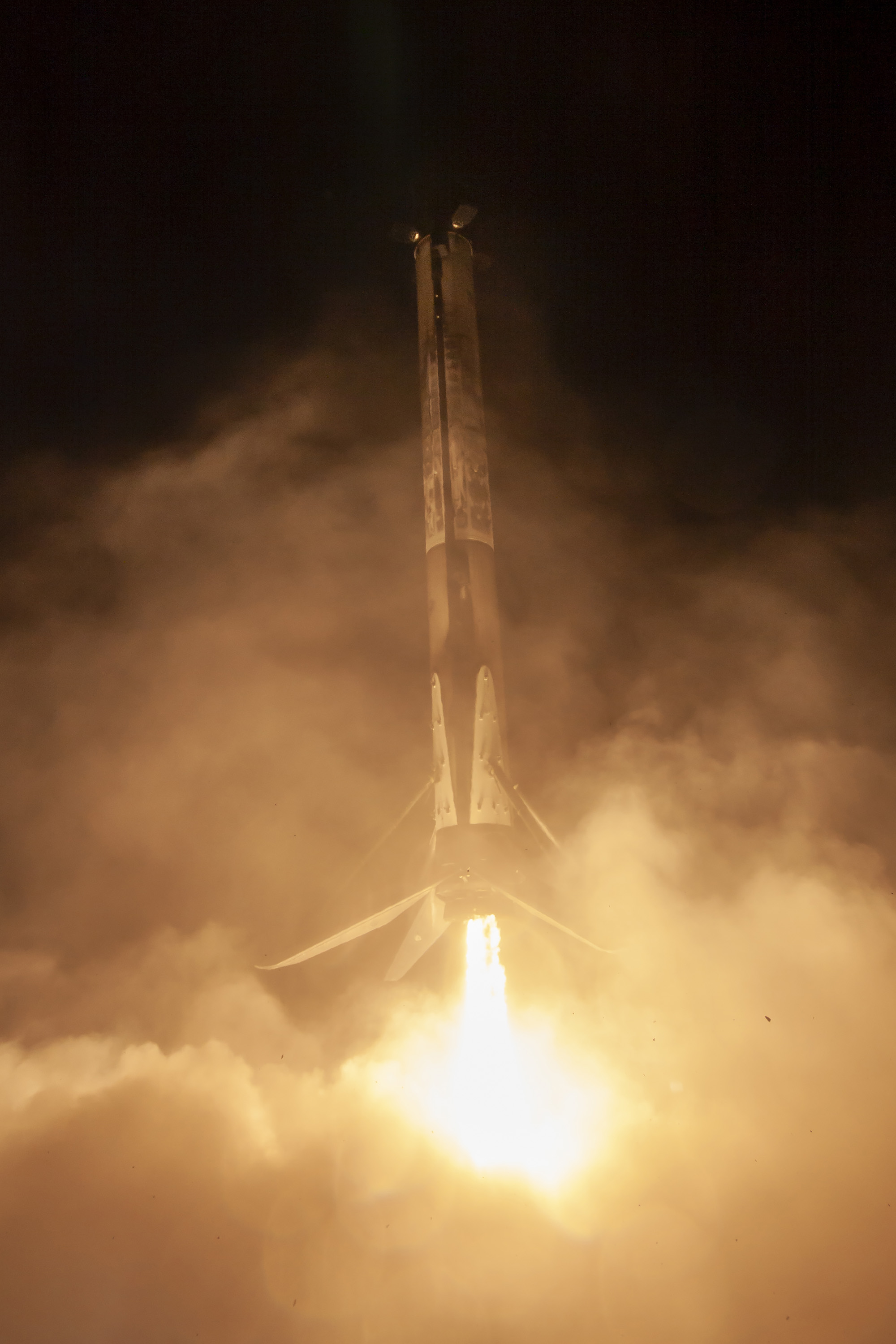
- SUCCESS
GPS III SV04 (Sacagawea)
- Rocket: Falcon 9
- Launch pad: CCSFS SLC 40
- Launch date: November 5th 2020, 11:24 pm
- SpaceX will launch GPS Block III Space Vehicle 04 from SLC-40, Cape Canaveral AFS aboard a Falcon 9. GPS III is owned and operated by the US Air Force and produced by Lockheed Martin. This will be the fourth GPS III satellite launched and the third launched by SpaceX. The satellite will be delivered into a MEO transfer orbit. The booster for this mission will land on an ASDS.
- Media:

- SUCCESS
Starlink-14 (v1.0)
- Rocket: Falcon 9
- Launch pad: CCSFS SLC 40
- Launch date: October 24th 2020, 3:31 pm
- This mission will launch the fourteenth batch of operational Starlink satellites, which are expected to be version 1.0, from SLC-40, Kennedy Space Center. It is the fifteenth Starlink launch overall. The satellites will be delivered to low Earth orbit and will spend a few weeks maneuvering to their operational altitude of 550 km. The booster for this mission is expected to land on JRTI.
- Media:

- SUCCESS
Starlink-13 (v1.0)
- Rocket: Falcon 9
- Launch pad: KSC LC 39A
- Launch date: October 18th 2020, 12:25 pm
- This mission will launch the thirteenth batch of operational Starlink satellites, which are expected to be version 1.0, from LC-39A, Kennedy Space Center. It is the fourteenth Starlink launch overall. The satellites will be delivered to low Earth orbit and will spend a few weeks maneuvering to their operational altitude of 550 km. The booster for this mission is expected to land on an ASDS.
- Media:

- SUCCESS
Starlink-12 (v1.0)
- Rocket: Falcon 9
- Launch pad: KSC LC 39A
- Launch date: October 6th 2020, 11:29 am
- This mission will launch the twelfth batch of operational Starlink satellites, which are expected to be version 1.0, from SLC-40, Cape Canaveral Air Force Station. It is the thirteenth Starlink launch overall. The satellites will be delivered to low Earth orbit and will spend a few weeks maneuvering to their operational altitude of 550 km. The booster for this mission is expected to land on an ASDS.
- Media:

- SUCCESS
Starlink-11 (v1.0)
- Rocket: Falcon 9
- Launch pad: KSC LC 39A
- Launch date: September 3rd 2020, 12:46 pm
- This mission will launch the eleventh batch of operational Starlink satellites, which are expected to be version 1.0, from SLC-40, Cape Canaveral Air Force Station. It is the twelfth Starlink launch overall. The satellites will be delivered to low Earth orbit and will spend a few weeks maneuvering to their operational altitude of 550 km. The booster for this mission is expected to land on an ASDS.
- Media:
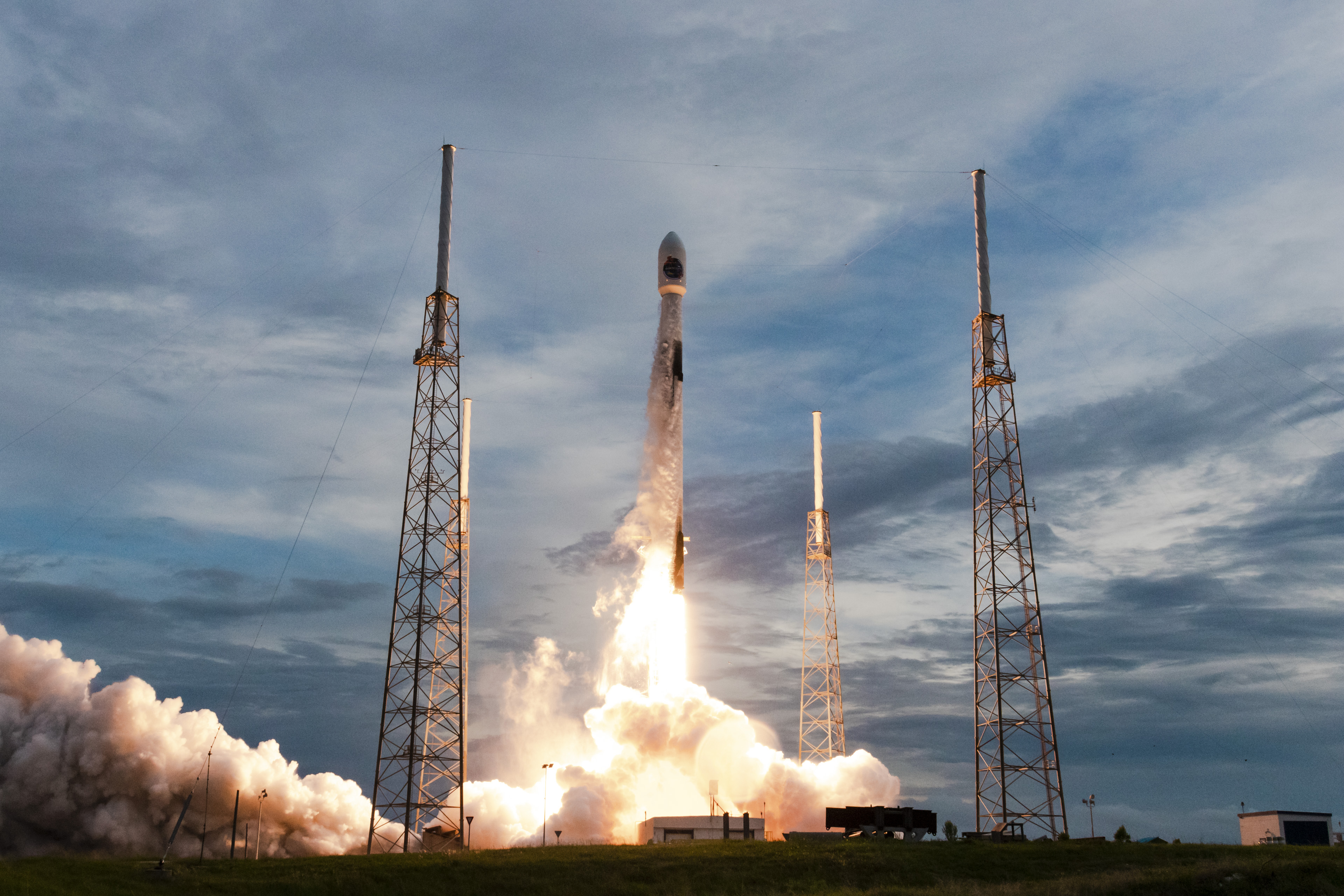
- SUCCESS
SAOCOM 1B, GNOMES-1, Tyvak-0172
- Rocket: Falcon 9
- Launch pad: CCSFS SLC 40
- Launch date: August 30th 2020, 11:18 pm
- SpaceX's Falcon 9 will launch the second of the two satellite SAOCOM 1 satellites into a sun-synchronous polar orbit from SLC-40, Cape Canaveral AFS. SAOCOM 1B is a synthetic aperture radar Earth observation satellite to support disaster management. The SAOCOM spacecraft are operated by CONAE, the Argentinian National Space Activities Commission, and are built by INVAP. This mission is also expected to include rideshare payloads Sequoia, and GNOMES-1. This will be the first polar launch from the Space Coast in 60 years. The launch azimuth will be southward and the booster will land at LZ-1.
- Media:
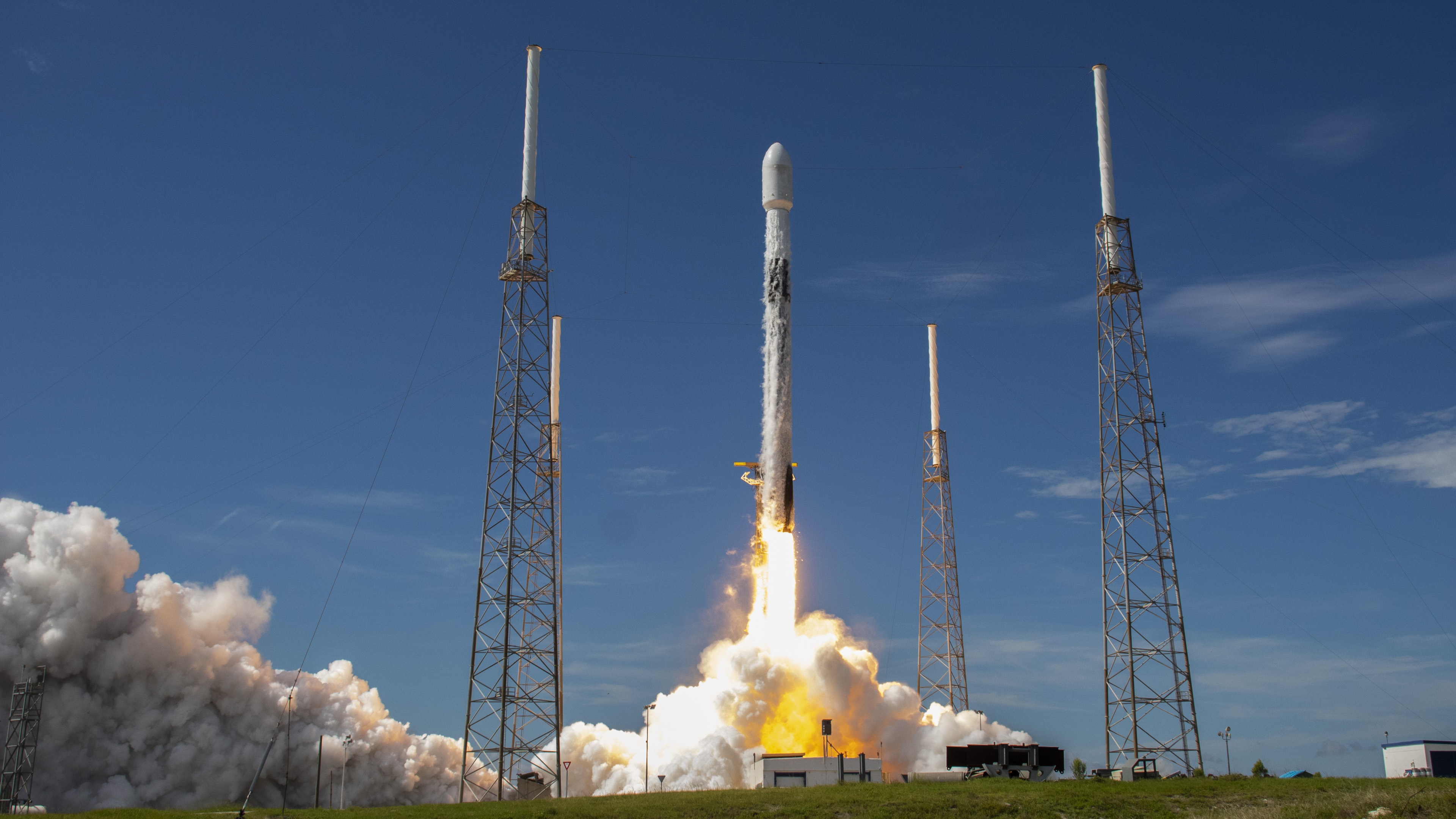
- SUCCESS
Starlink-10 (v1.0) & SkySat 19-21
- Rocket: Falcon 9
- Launch pad: CCSFS SLC 40
- Launch date: August 18th 2020, 2:31 pm
- This mission will launch the tenth batch of operational Starlink satellites, which are expected to be version 1.0, from LC-39A, Kennedy Space Center. It is the eleventh Starlink launch overall. The satellites will be delivered to low Earth orbit and will spend a few weeks maneuvering to their operational altitude of 550 km. This mission is includes rideshare payloads, SkySats 19-21, on top of the Starlink stack. The booster for this mission is expected to land on an ASDS.
- Media:

- SUCCESS
Starlink-9 (v1.0) & BlackSky Global 5-6
- Rocket: Falcon 9
- Launch pad: KSC LC 39A
- Launch date: August 7th 2020, 5:12 am
- This mission will launch the ninth batch of operational Starlink satellites, which are expected to be version 1.0, from LC-39A, Kennedy Space Center. It is the tenth Starlink launch overall. The satellites will be delivered to low Earth orbit and will spend a few weeks maneuvering to their operational altitude of 550 km. This mission is includes a rideshare of two BlackSky satellites on top of the Starlink stack. The booster for this mission is expected to land an ASDS.
- Media:
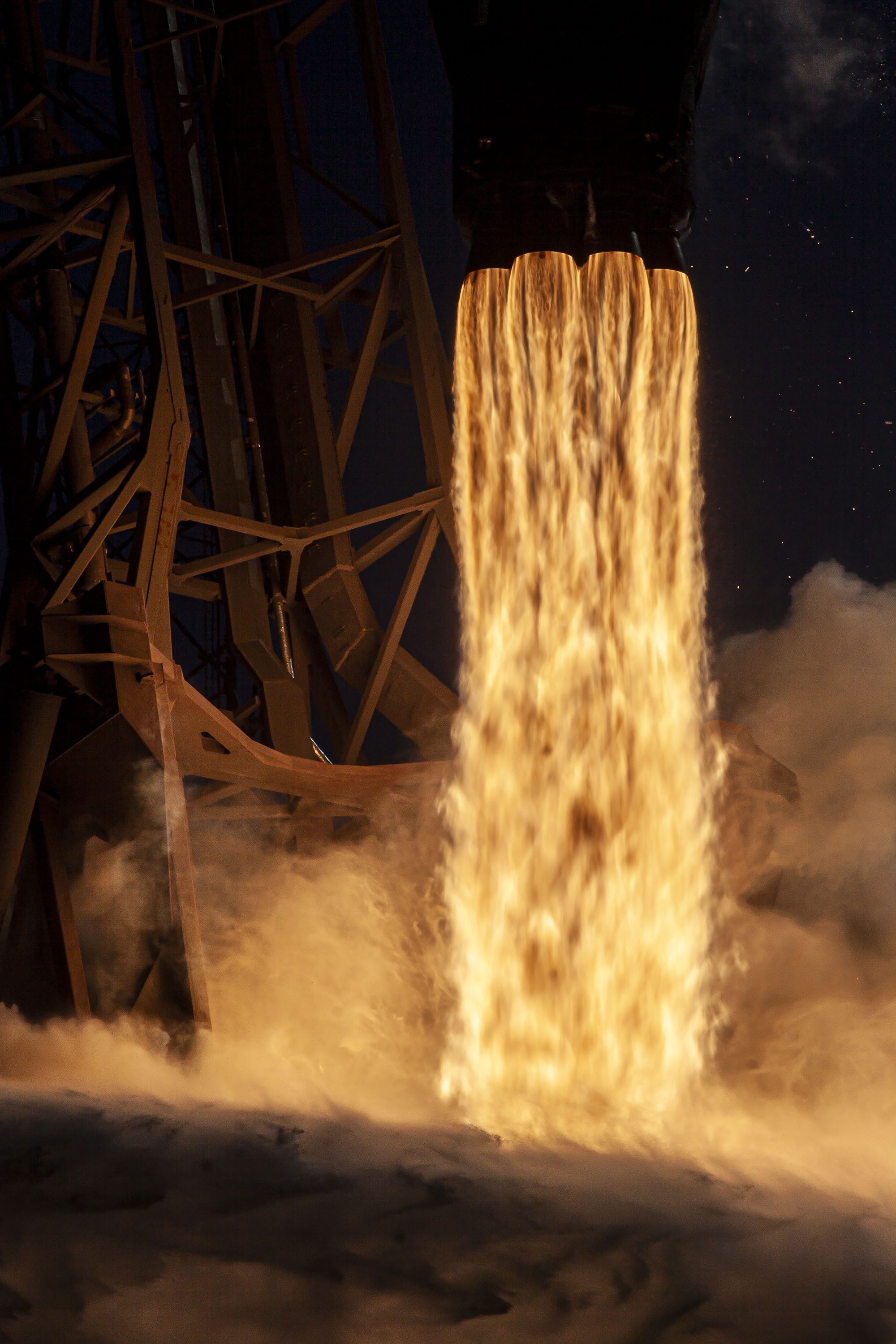
- SUCCESS
ANASIS-II
- Rocket: Falcon 9
- Launch pad: CCSFS SLC 40
- Launch date: July 20th 2020, 9:30 pm
- SpaceX will launch ANASIS-II, a South Korean geostationary military communication satellite from LC-39A, Kennedy Space Center. It will be South Korea's first dedicated military communications satellite. Falcon 9 will deliver the satellite to a geostationary transfer orbit. The booster is expected to land downrange on an ASDS.
- Media:

- SUCCESS
GPS III SV03 (Columbus)
- Rocket: Falcon 9
- Launch pad: CCSFS SLC 40
- Launch date: June 30th 2020, 7:55 pm
- SpaceX will launch GPS Block III Space Vehicle 03 from SLC-40, Cape Canaveral AFS aboard a Falcon 9. GPS III is owned and operated by the US Air Force and produced by Lockheed Martin. This is the third GPS III satellite and the second launched by SpaceX. The satellite will be delivered into a MEO transfer orbit. The booster for this mission is expected to land on an ASDS.
- Media:

- SUCCESS
Starlink-8 & SkySat 16-18
- Rocket: Falcon 9
- Launch pad: CCSFS SLC 40
- Launch date: June 13th 2020, 9:21 am
- This mission will launch the eighth batch of operational Starlink satellites, which are expected to be version 1.0, from SLC-40, Cape Canaveral AFS. It is the ninth Starlink launch overall. The satellites will be delivered to low Earth orbit and will spend a few weeks maneuvering to their operational altitude of 550 km. This mission is includes rideshare payloads, SkySats 16-18, on top of the Starlink stack. The booster for this mission is expected to land an ASDS.
- Media:

- SUCCESS
Starlink-7
- Rocket: Falcon 9
- Launch pad: CCSFS SLC 40
- Launch date: June 4th 2020, 1:25 am
- This mission will launch the seventh batch of operational Starlink satellites, which are expected to be version 1.0, from SLC-40, Cape Canaveral AFS. It is the eighth Starlink launch overall. The satellites will be delivered to low Earth orbit and will spend a few weeks maneuvering to their operational altitude of 550 km. The booster for this mission is expected to land on JRTI on its first mission since arriving at Port Canaveral.
- Media:
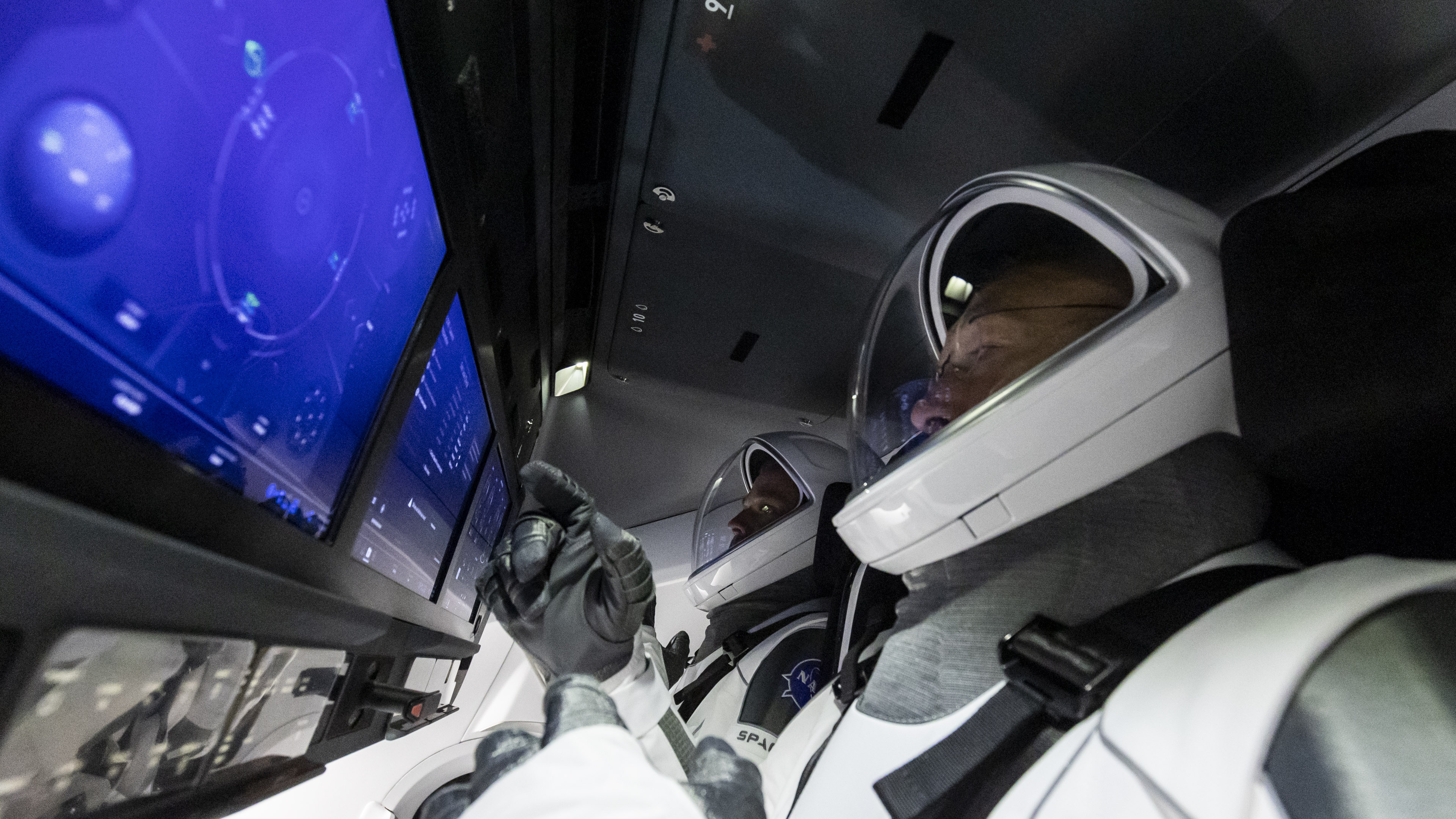
- SUCCESS
CCtCap Demo Mission 2
- Rocket: Falcon 9
- Launch pad: KSC LC 39A
- Launch date: May 30th 2020, 7:22 pm
- SpaceX will launch the second demonstration mission of its Crew Dragon vehicle as part of NASA's Commercial Crew Transportation Capability Program (CCtCap), carrying two NASA astronauts to the International Space Station. Barring unexpected developments, this mission will be the first crewed flight to launch from the United States since the end of the Space Shuttle program in 2011. DM-2 demonstrates the Falcon 9 and Crew Dragon's ability to safely transport crew to the space station and back to Earth and it is the last major milestone for certification of Crew Dragon. Initially the mission duration was planned to be no longer than two weeks, however NASA has been considering an extension to as much as six weeks or three months. The astronauts have been undergoing additional training for the possible longer mission.
- Media:

- SUCCESS
Starlink-6
- Rocket: Falcon 9
- Launch pad: KSC LC 39A
- Launch date: April 22nd 2020, 7:30 pm
- This mission will launch the sixth batch of operational Starlink satellites, which are expected to be version 1.0, from SLC-40, Cape Canaveral AFS. It is the seventh Starlink launch overall. The satellites will be delivered to low Earth orbit and will spend a few weeks maneuvering to their operational altitude of 550 km. The booster for this mission is expected to land on OCISLY.
- Media:

- SUCCESS
Starlink-5
- Rocket: Falcon 9
- Launch pad: KSC LC 39A
- Launch date: March 18th 2020, 12:16 pm
- The sixth Starlink launch overall and the fifth operational batch of Starlink satellites will launch into orbit aboard a Falcon 9 rocket. This mission is expected to deploy all sixty satellites into an elliptical orbit about fifteen minutes into flight. In the weeks following launch the satellites are expected to utilize their onboard ion thrusters to raise their orbits to 550 km in three groups of 20, making use of precession rates to separate themselves into three planes. The booster will land on a drone ship approximately 628 km downrange.
- Media:
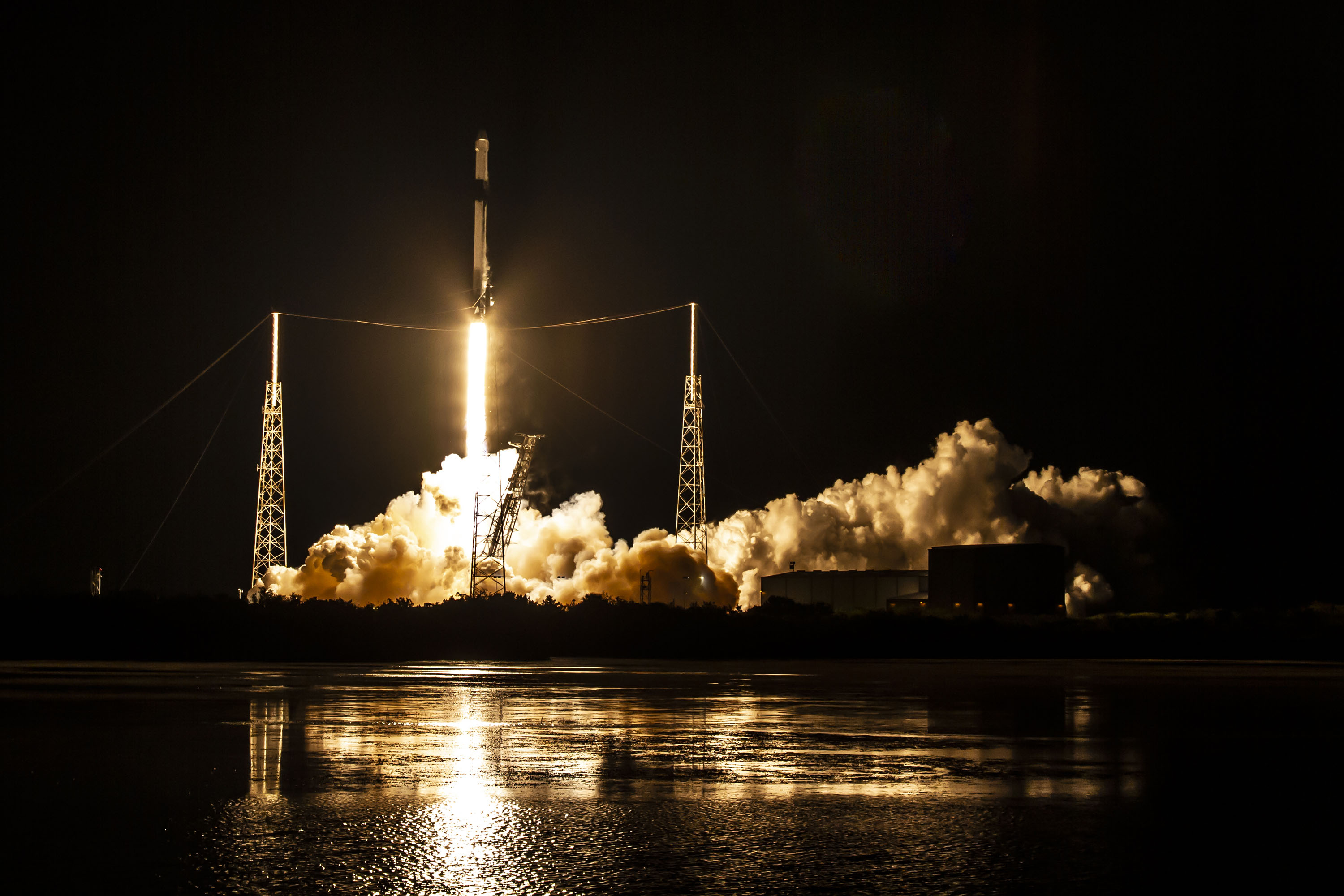
- SUCCESS
CRS-20
- Rocket: Falcon 9
- Launch pad: CCSFS SLC 40
- Launch date: March 7th 2020, 4:50 am
- SpaceX's 20th and final Crew Resupply Mission under the original NASA CRS contract, this mission brings essential supplies to the International Space Station using SpaceX's reusable Dragon spacecraft. It is the last scheduled flight of a Dragon 1 capsule. (CRS-21 and up under the new Commercial Resupply Services 2 contract will use Dragon 2.) The external payload for this mission is the Bartolomeo ISS external payload hosting platform. Falcon 9 and Dragon will launch from SLC-40, Cape Canaveral Air Force Station and the booster will land at LZ-1. The mission will be complete with return and recovery of the Dragon capsule and down cargo.
- Media:
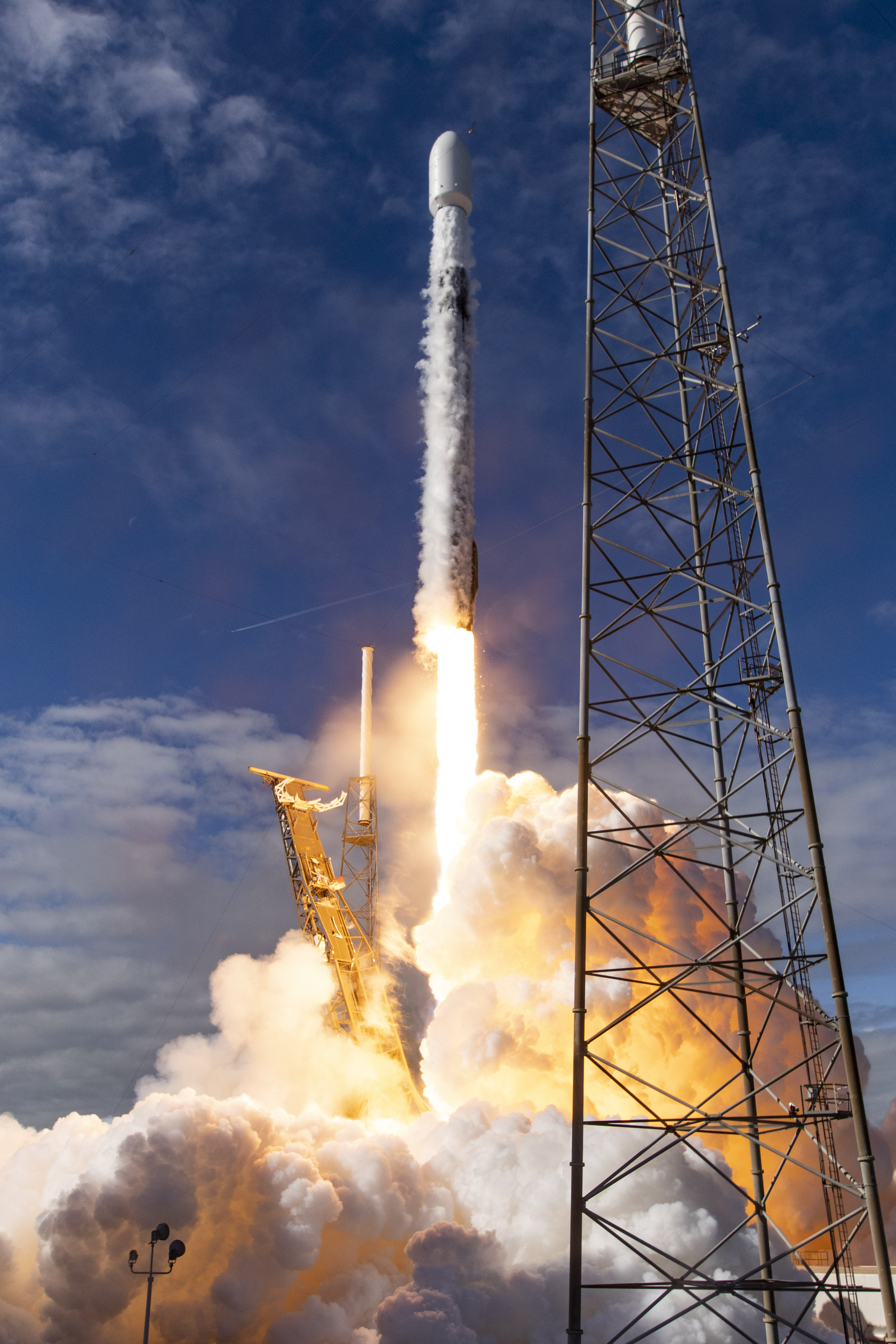
- SUCCESS
Starlink-4
- Rocket: Falcon 9
- Launch pad: CCSFS SLC 40
- Launch date: February 17th 2020, 3:05 pm
- This mission will launch the fourth batch of Starlink version 1.0 satellites, from SLC-40, Cape Canaveral AFS. It is the fifth Starlink launch overall. The satellites will be delivered to low Earth orbit and will spend a few weeks maneuvering to their operational altitude of 550 km. The booster for this mission is expected to land on OCISLY.
- Media:
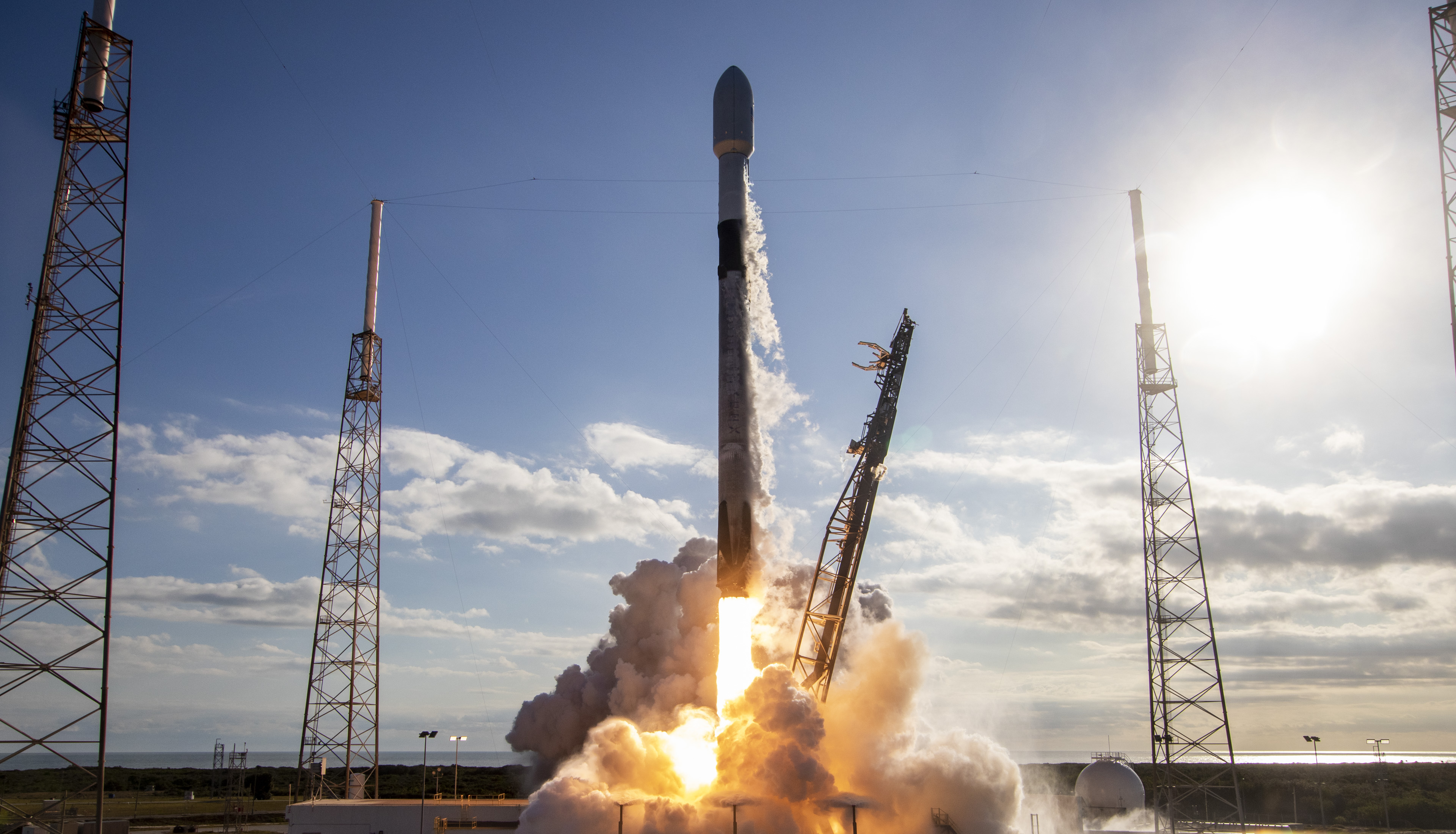
- SUCCESS
Starlink-3
- Rocket: Falcon 9
- Launch pad: CCSFS SLC 40
- Launch date: January 29th 2020, 2:06 pm
- This mission will launch the third batch of Starlink version 1.0 satellites, from SLC-40, Cape Canaveral AFS. It is the fourth Starlink launch overall. The satellites will be delivered to low Earth orbit and will spend a few weeks maneuvering to their operational altitude of 550 km. The booster for this mission is expected to land on OCISLY.
- Media:

- SUCCESS
Crew Dragon In Flight Abort Test
- Rocket: Falcon 9
- Launch pad: KSC LC 39A
- Launch date: January 19th 2020, 2:00 pm
- SpaceX will launch a Crew Dragon capsule from LC-39A, KSC on a fully fueled Falcon 9 rocket and then trigger the launch escape system during the period of maximum dynamic pressure. As part of NASA'a Commercial Crew Integrated Capability program (CCiCap) this test will contribute valuable data to help validate Crew Dragon and its launch abort system. The Crew Dragon will be recovered by GO Searcher after splashdown in the Atlantic Ocean. This flight does not go to orbit. The booster and upper stage are expected to break up following capsule separation and there will be no landing attempt.
- Media:
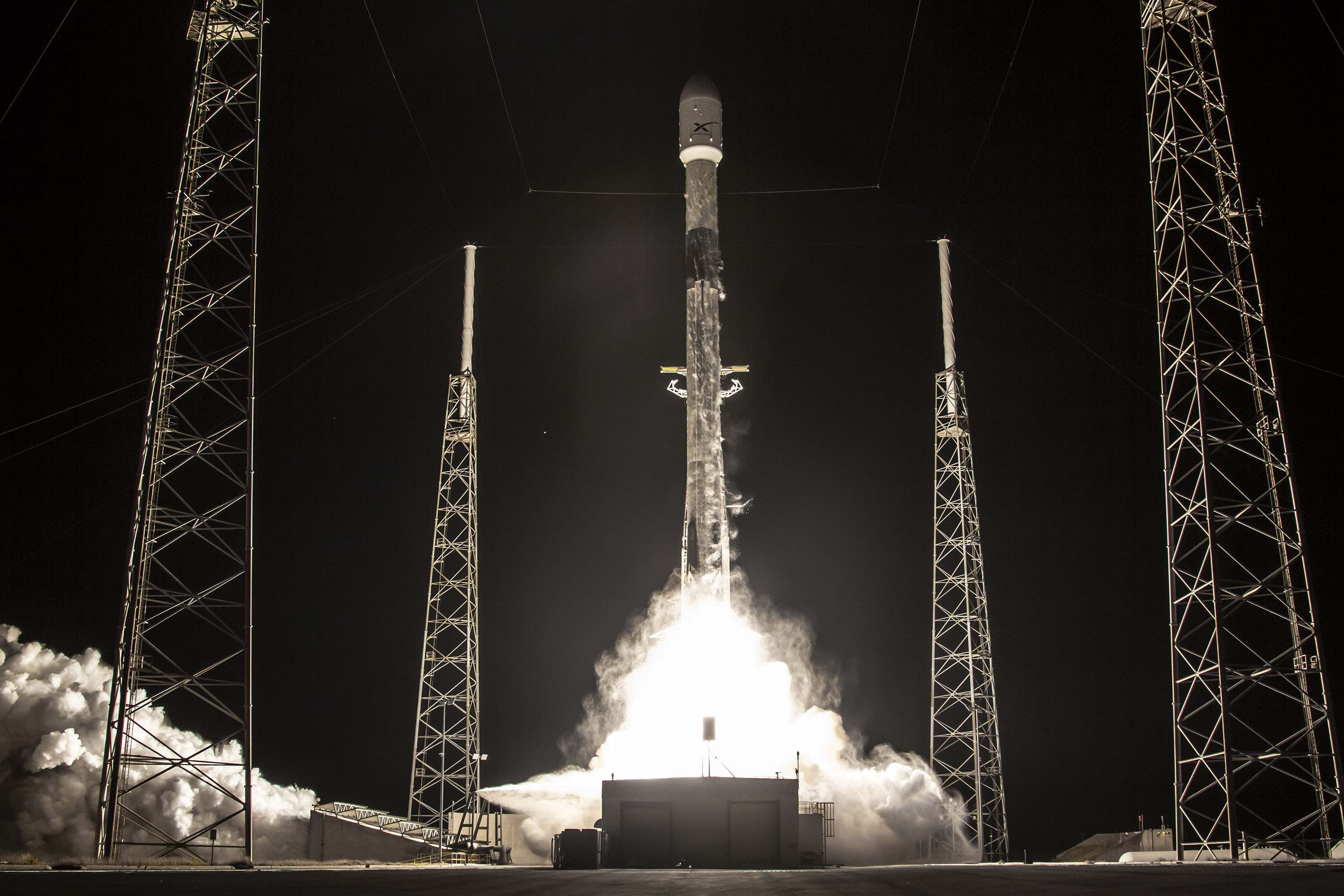
- SUCCESS
Starlink-2
- Rocket: Falcon 9
- Launch pad: CCSFS SLC 40
- Launch date: January 7th 2020, 2:19 am
- This mission will launch the second batch of Starlink version 1.0 satellites, from SLC-40, Cape Canaveral AFS. They are expected to contribute to the 550 km x 53° shell. It is the third Starlink launch overall. Starlink is a low Earth orbit broadband internet constellation developed and owned by SpaceX which will eventually consist of nearly 12 000 satellites and will provide low latency internet service to ground terminals around the world. The booster for this mission is expected to land on OCISLY.
- Media:

- SUCCESS
JCSat 18 / Kacific 1
- Rocket: Falcon 9
- Launch pad: CCSFS SLC 40
- Launch date: December 17th 2019, 12:10 am
- SpaceX will launch the Boeing built dual payload satellite to geostationary transfer orbit from XXXX. JCSat 18 is a mobile broadband communications payload built for Sky Perfect JSAT Corporation of Japan and will service Asia Pacific. Kacific 1 is a high throughput broadband internet payload built for Kacific Broadband Satellites and will service certain high demand areas of Southeast Asia and the Pacific. Both payloads share a single chassis. The booster for this mission is expected to land on OCISLY.
- Media:
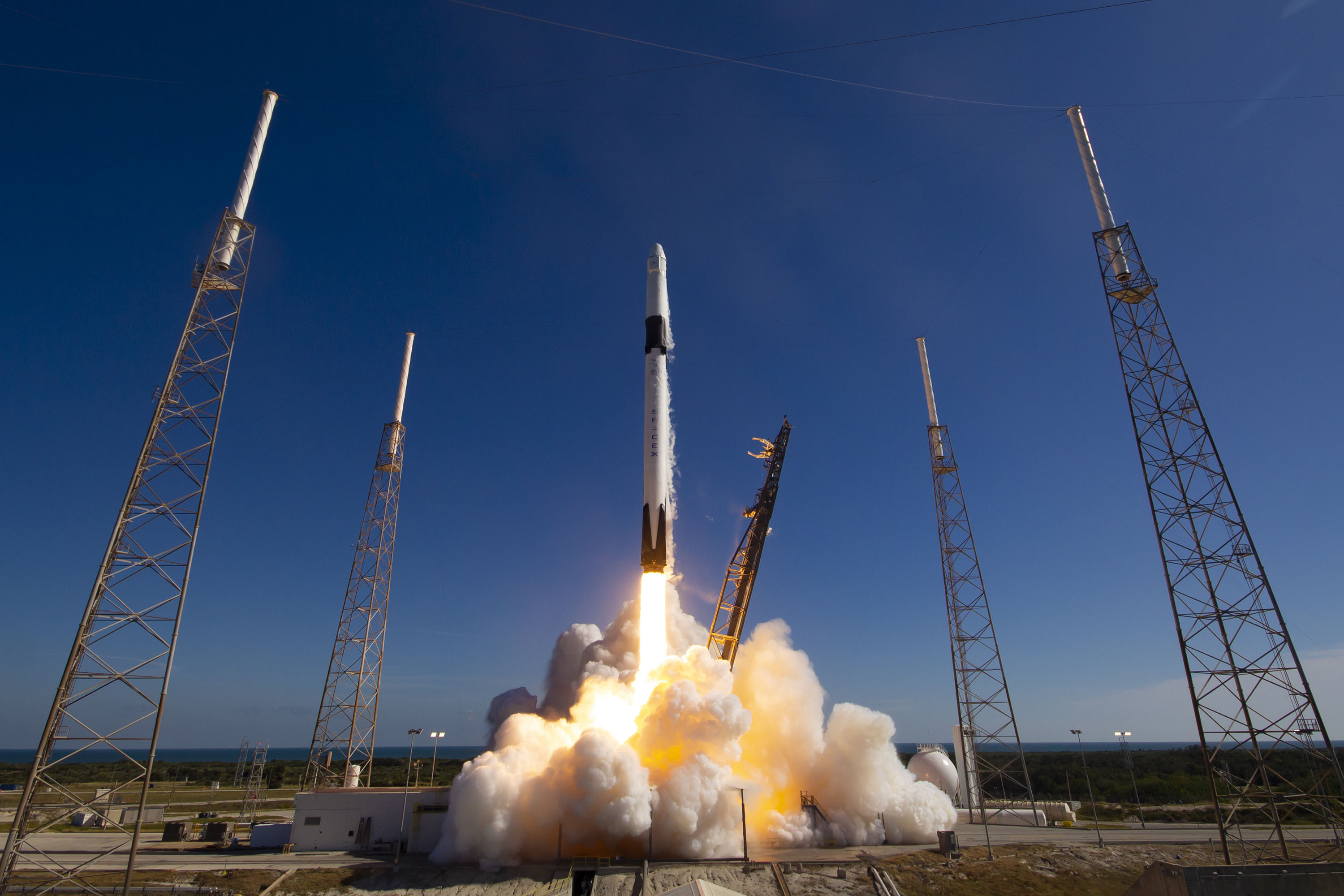
- SUCCESS
CRS-19
- Rocket: Falcon 9
- Launch pad: CCSFS SLC 40
- Launch date: December 5th 2019, 5:29 pm
- SpaceX's 19th Crew Resupply Mission on behalf of NASA with a total of 20 contracted flights, this mission brings essential supplies to the International Space Station using SpaceX's reusable Dragon spacecraft. The external payloads for this mission include the Hyperspectral Imager Suite and a lithium-ion battery. Falcon 9 and Dragon will launch from SLC-40, Cape Canaveral AFS. The mission will be complete with return and recovery of the Dragon capsule and down cargo.
- Media:
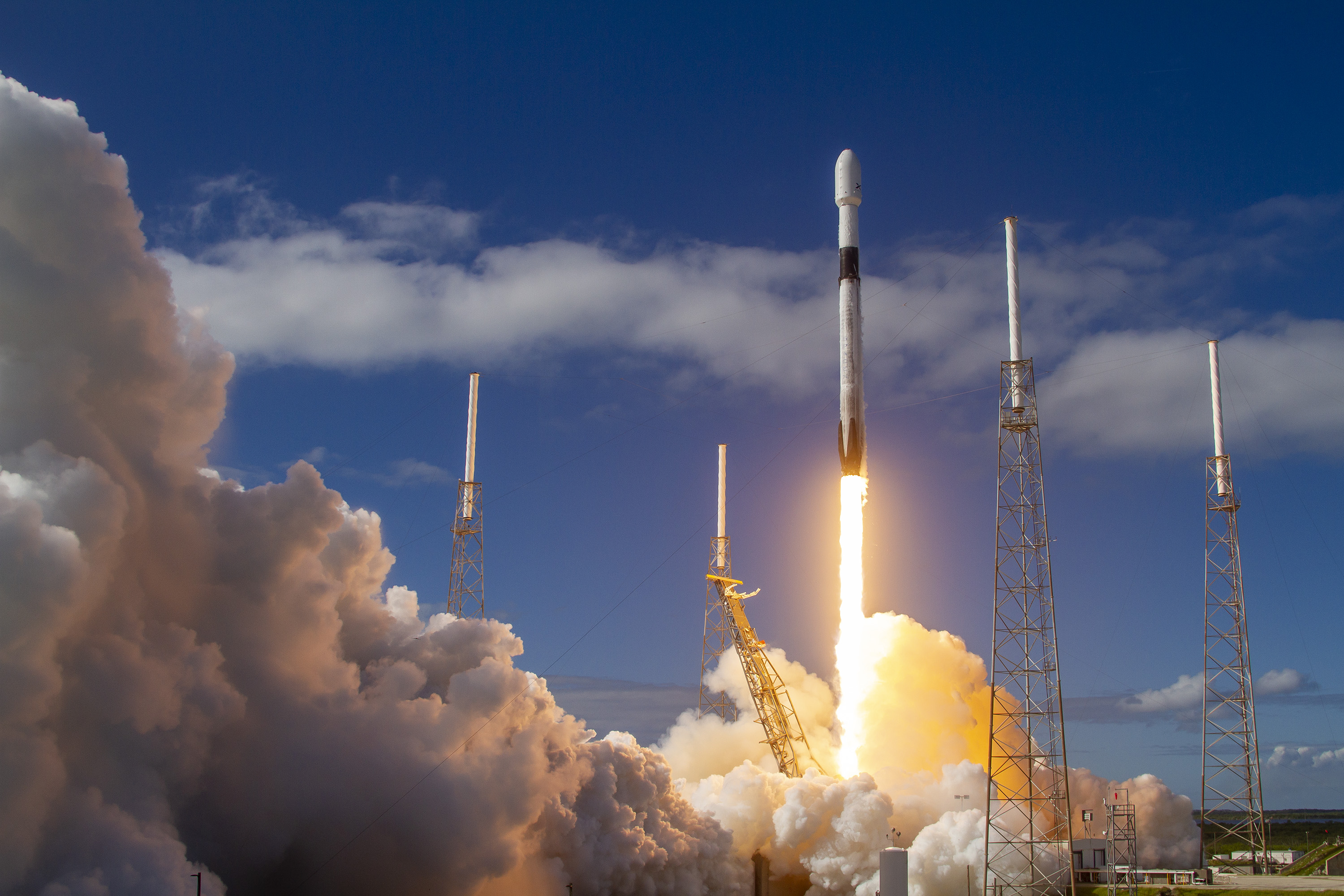
- SUCCESS
Starlink-1
- Rocket: Falcon 9
- Launch pad: CCSFS SLC 40
- Launch date: November 11th 2019, 2:56 pm
- This mission will launch the first batch of Starlink version 1.0 satellites, from SLC-40, Cape Canaveral AFS. They are expected to contribute to the 550 km x 53° shell. It is the second Starlink launch overall. Starlink is a low Earth orbit broadband internet constellation developed and owned by SpaceX which will eventually consist of nearly 12 000 satellites and will provide low latency internet service to ground terminals around the world. The booster for this mission is expected to land on OCISLY.
- Media:

- SUCCESS
Amos-17
- Rocket: Falcon 9
- Launch pad: CCSFS SLC 40
- Launch date: August 6th 2019, 10:52 pm
- SpaceX will launch Boeing built Amos-17, a geostationary communications satellite for Israeli company Spacecom. The satellite will be delivered to GTO from KSC LC-39A or possibly CCAFS SLC-40, and will replace the defunct Amos-5 at 17° E. Amos-17 carries multi-band high throughput and regional beams servicing Africa, Europe and the Middle East. The cost of this launch is covered for Spacecom by SpaceX credit following the Amos-6 incident. A recovery of the booster for this mission is not expected.
- Media:
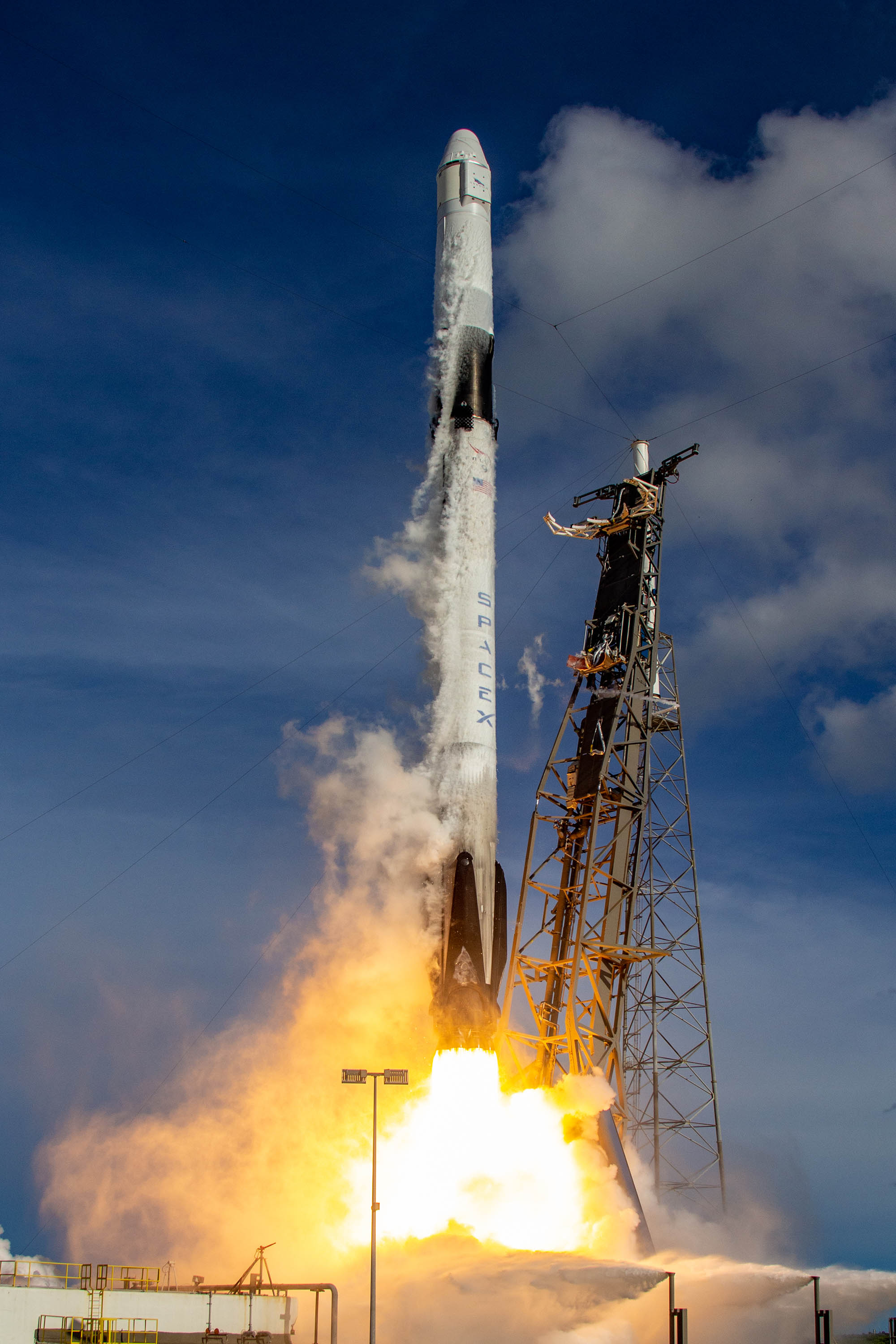
- SUCCESS
CRS-18
- Rocket: Falcon 9
- Launch pad: CCSFS SLC 40
- Launch date: July 25th 2019, 10:01 pm
- SpaceX's 18th Commercial Resupply Services mission out of a total of 20 such contracted flights for NASA, this launch will deliver essential supplies to the International Space Station using the reusable Dragon 1 cargo spacecraft. The external payload for this mission is International Docking Adapter 3, replacing IDA-1 lost in SpaceX's CRS-7 launch failure. This mission will launch from SLC-40 at Cape Canaveral AFS on a Falcon 9, and the first-stage booster is expected to land back at CCAFS LZ-1.
- Media:
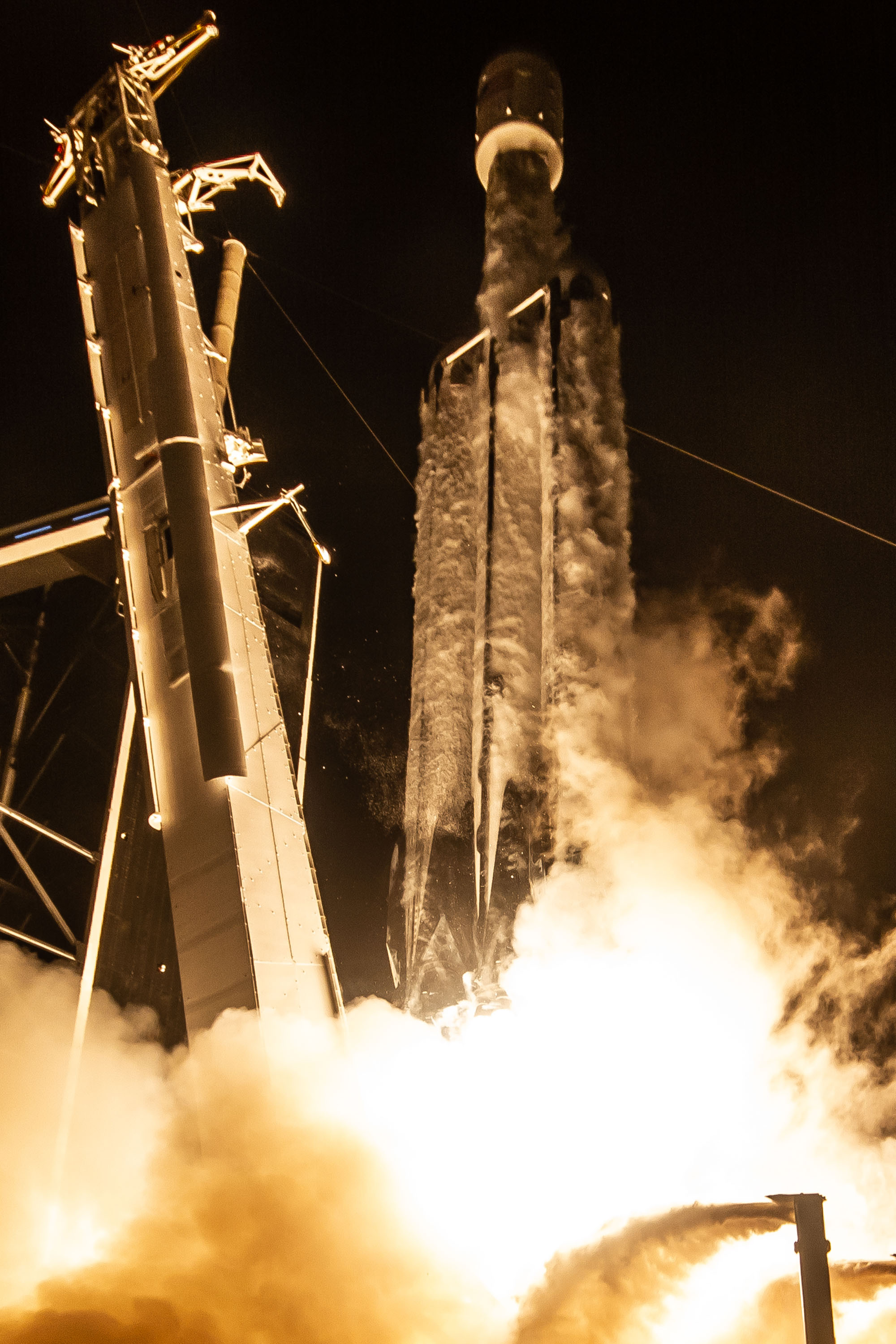
- SUCCESS
STP-2
- Rocket: Falcon Heavy
- Launch pad: KSC LC 39A
- Launch date: June 25th 2019, 3:30 am
- Space Test Program 2 is a rideshare managed by the U.S. Air Force Space and Missile Systems Center (SMC), launching from LC-39A, KSC. Most of the spacecraft will be delivered into low Earth orbit (LEO) in two deployment sequences separated by a second stage burn. These LEO payloads include the six Taiwan and United States owned COSMIC-2 microsatellites, the Planetary Society's LightSail-B demonstrator cubesat, and others. The third and final deployment will be the Air Force Research Lab's DSX spacecraft, which will be delivered to a medium Earth orbit (MEO). This mission will reuse the side cores from Arabsat 6A, which will return to LZ-1, and LZ-2. The new center core will boost back to land on OCISLY less than 40 km from the launch site.
- Media:
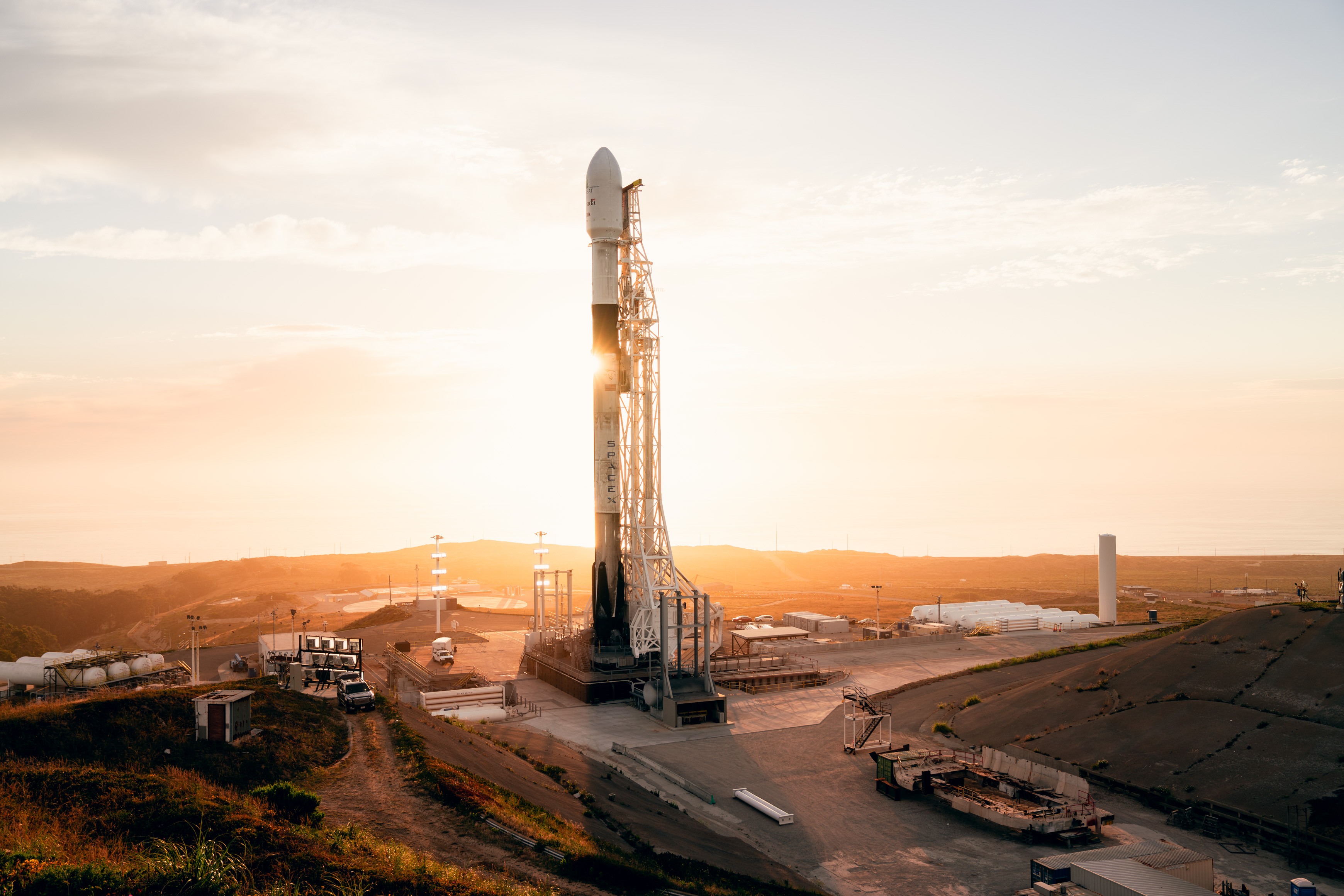
- SUCCESS
RADARSAT Constellation
- Rocket: Falcon 9
- Launch pad: VAFB SLC 4E
- Launch date: June 12th 2019, 2:17 pm
- SpaceX is launching the three satellite RADARSAT Constellation Mission into Sun Synchronous orbit from SLC-4E, VAFB. The RCM spacecraft are synthetic aperture radar (SAR) Earth observation satellites built by the Canadian space company, MDA, for the Canadian Space Agency. This mission was delayed when the originally slated booster failed to land after CRS-16. The booster is expected to return to LZ-4.
- Media:

- SUCCESS
Starlink v0.9
- Rocket: Falcon 9
- Launch pad: CCSFS SLC 40
- Launch date: May 24th 2019, 2:30 am
- SpaceX will launch dozens of Starlink demonstration satellites from SLC-40, Cape Canaveral AFS. Starlink is a low Earth orbit broadband internet constellation developed and owned by SpaceX which will eventually consist of nearly 12 000 satellites and will provide low latency internet service to ground terminals around the world. Two prototype satellites, Microsats 2a and 2b, were launched from Vandenberg AFB in February 2018. The booster for this mission will land on OCISLY.
- Media:
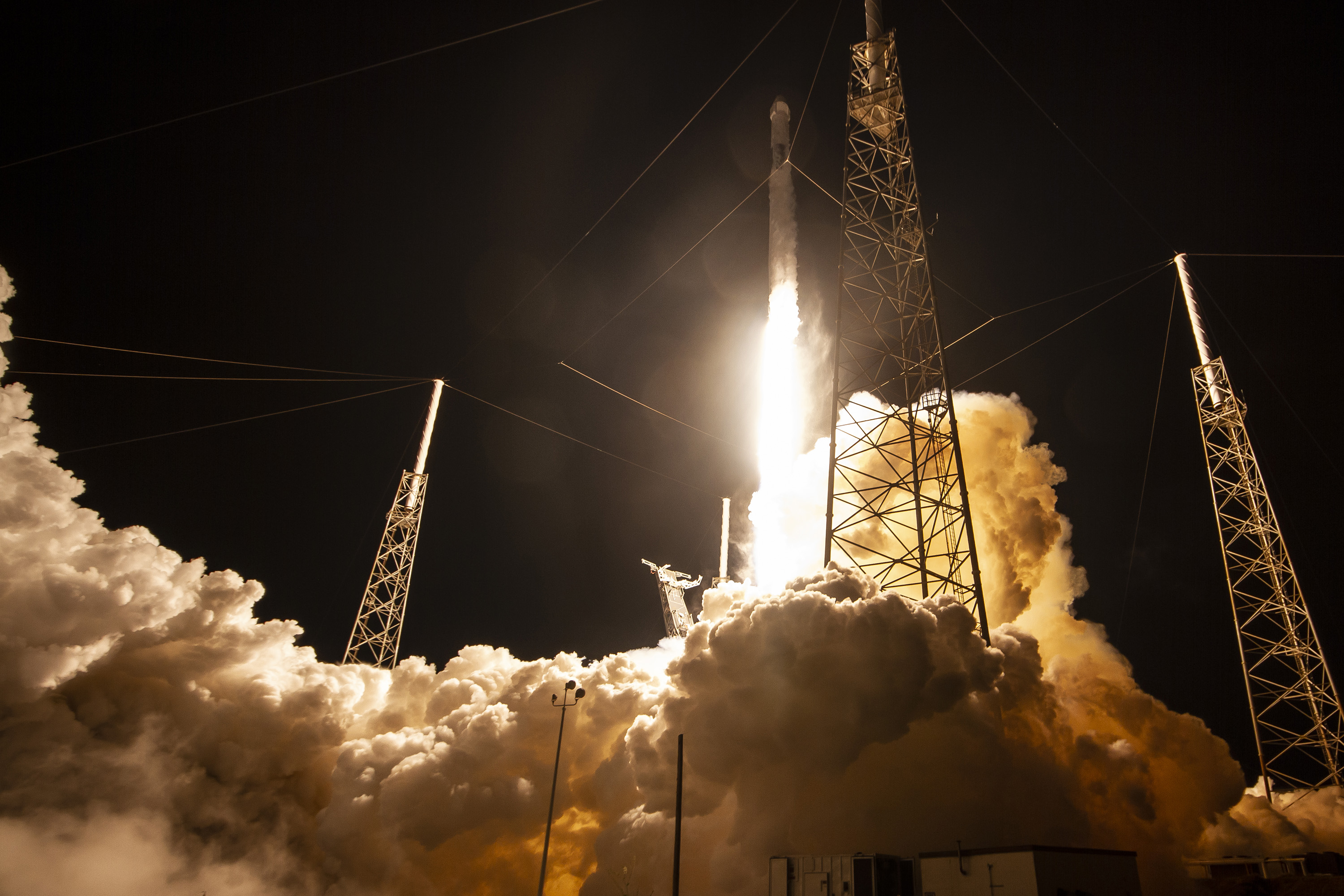
- SUCCESS
CRS-17
- Rocket: Falcon 9
- Launch pad: CCSFS SLC 40
- Launch date: May 4th 2019, 6:48 am
- SpaceX's 17th Commercial Resupply Services mission for NASA out of a total of 20 contracted flights, this mission brings essential supplies to the International Space Station using SpaceX's reusable Dragon 1 spacecraft. The external payloads for this mission include Orbital Carbon Observatory 3 and Space Test Program-Houston 6. The Falcon 9 launches from SLC-40 at Cape Canaveral AFS. The booster was expected to land at LZ-1, however, due to the ongoing investigation and clean-up following the Crew Dragon testing incident, it is likely to land on OCISLY instead.
- Media:
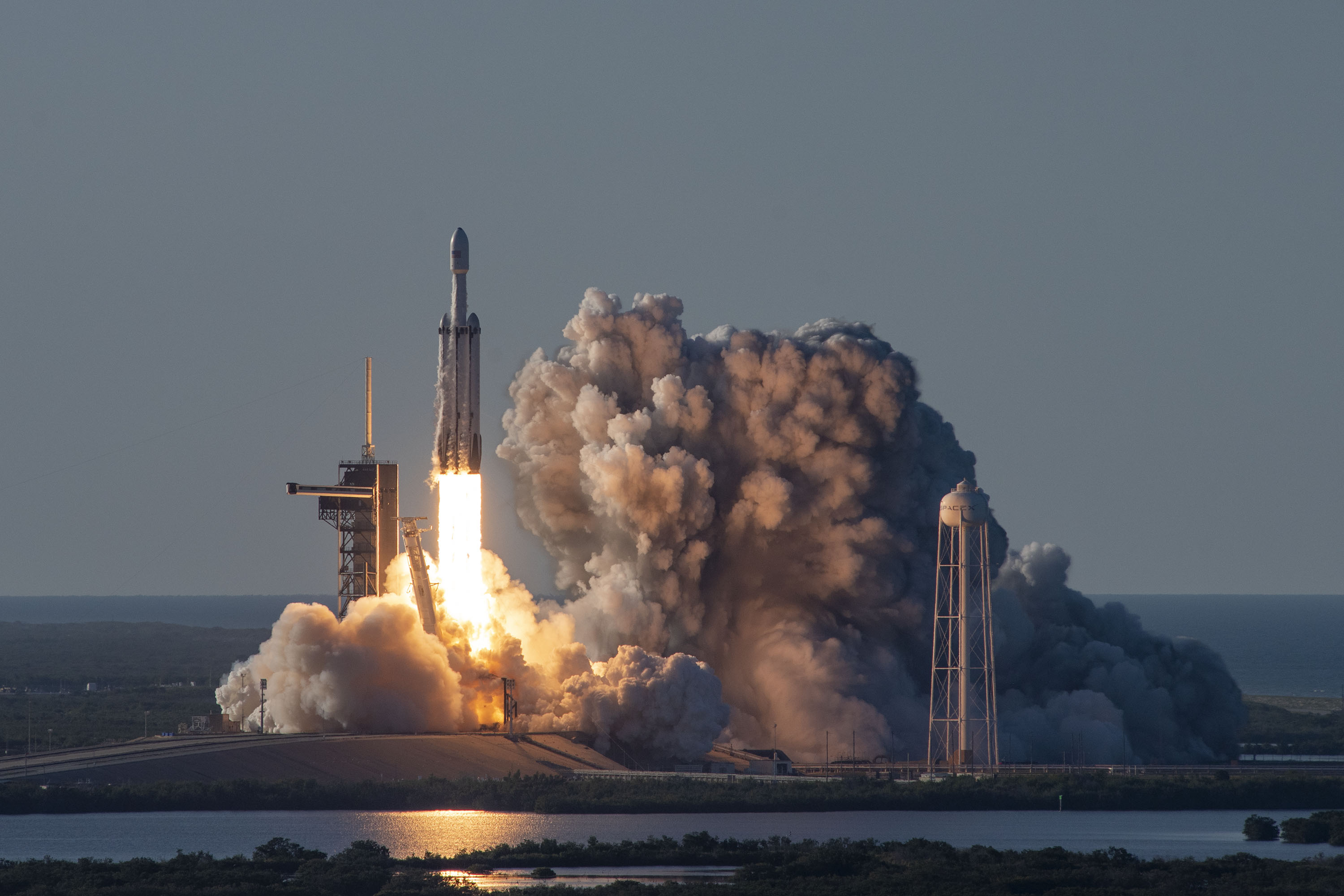
- SUCCESS
ArabSat 6A
- Rocket: Falcon Heavy
- Launch pad: KSC LC 39A
- Launch date: April 11th 2019, 10:35 pm
- SpaceX will launch Arabsat 6A to a geostationary transfer orbit from SLC-39A, KSC. The satellite is a geostationary telecommunications satellite built by Lockheed Martin for the Saudi Arabian company Arabsat. This will be the first operational flight of Falcon Heavy, and also the first Block 5 Falcon Heavy. All three cores will be new Block 5 cores. The side cores are expected to land at LZ-1 and LZ-2, and the center core is expected to land on OCISLY.
- Media:
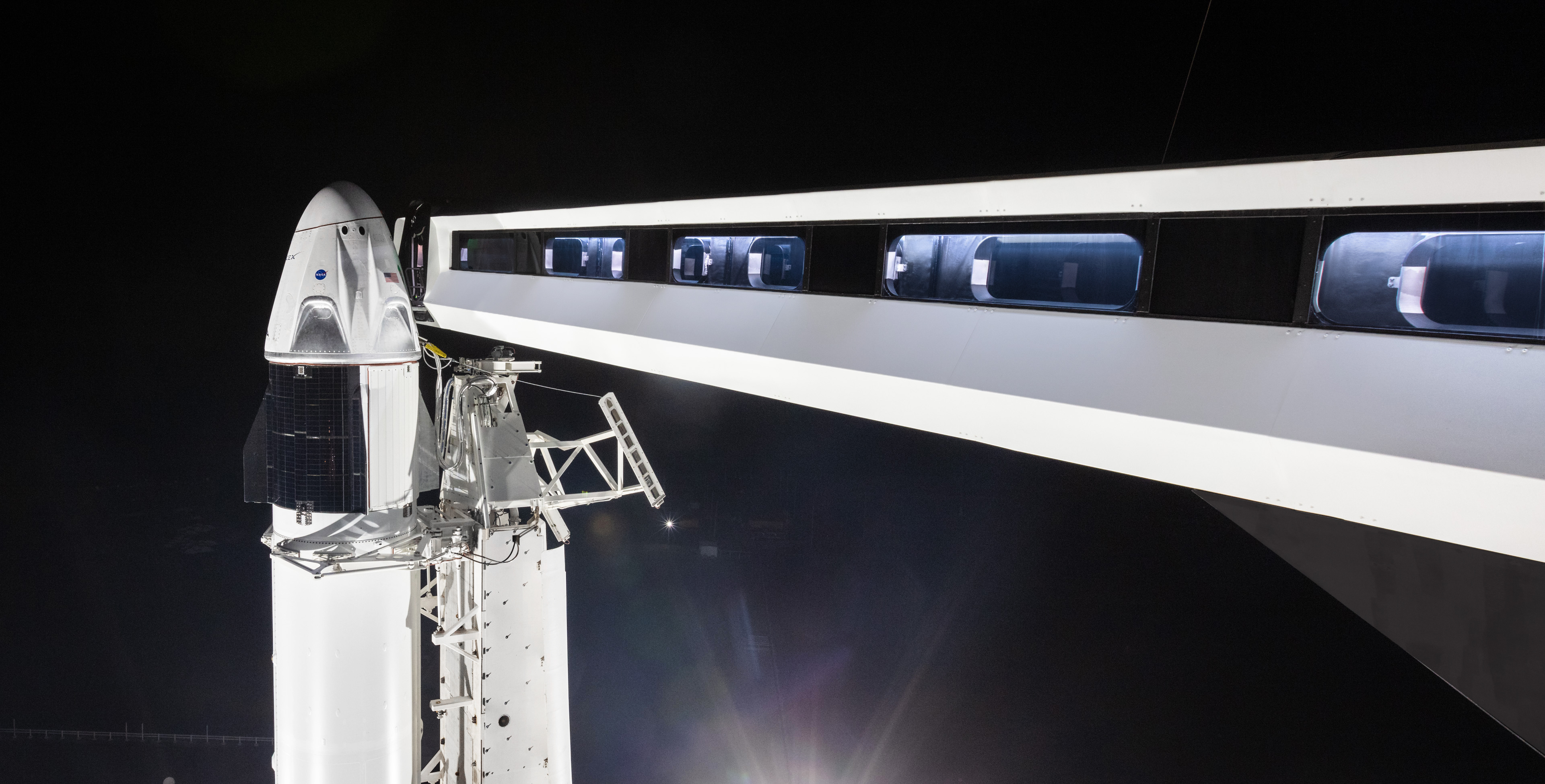
- SUCCESS
CCtCap Demo Mission 1
- Rocket: Falcon 9
- Launch pad: KSC LC 39A
- Launch date: March 2nd 2019, 7:45 am
- Demonstration Mission 1 (DM-1) will launch Dragon 2 as part of NASA's Commercial Crew Transportation Capability program. This mission will demonstrate Dragon 2, and Falcon 9 in its configuration for crewed missions. DM-1 will launch from LC-39A at Kennedy Space Center, likely carrying some cargo to the International Space Station. The booster is expected to land on OCISLY.
- Media:
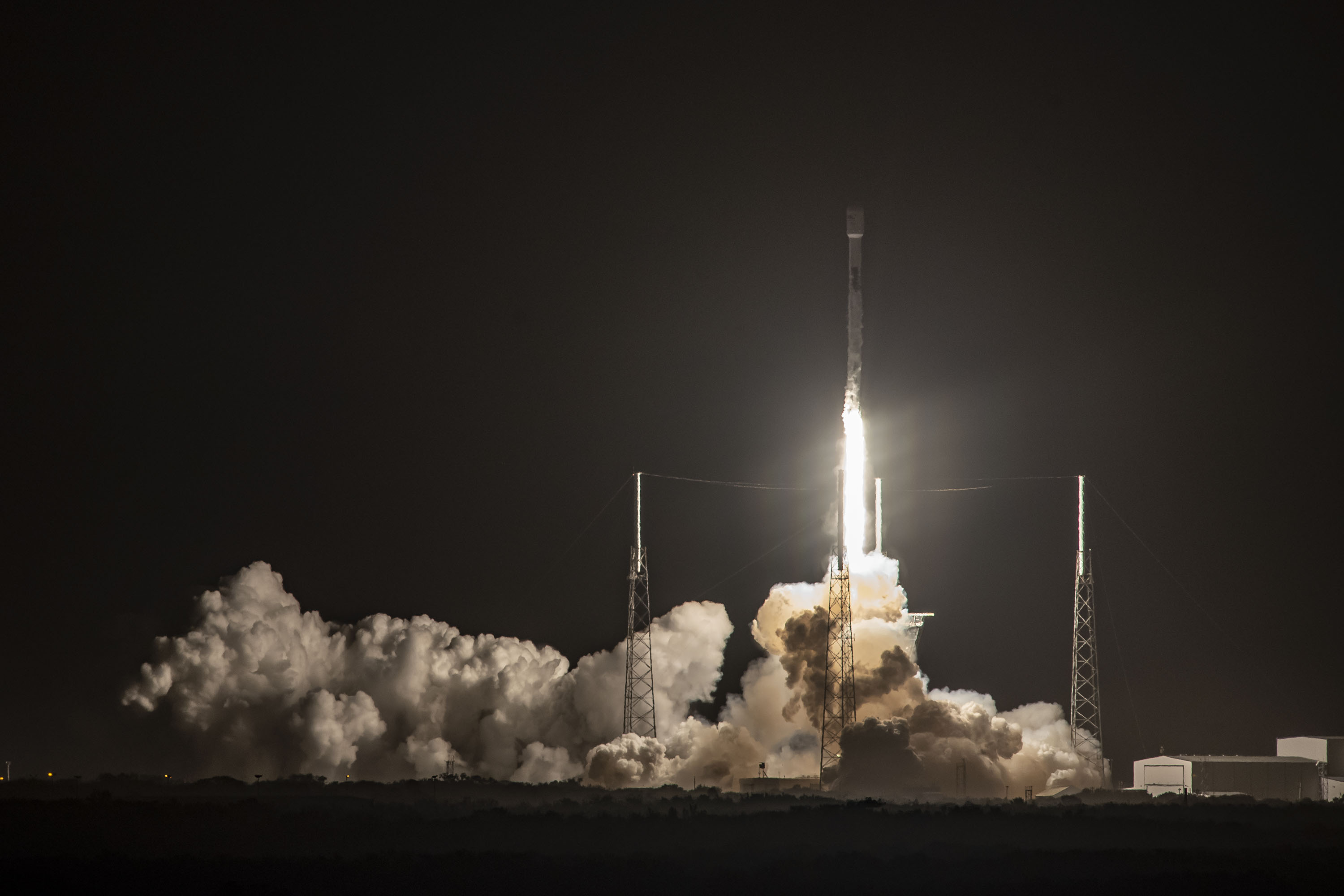
- SUCCESS
Nusantara Satu (PSN-6) / S5 / Beresheet
- Rocket: Falcon 9
- Launch pad: CCSFS SLC 40
- Launch date: February 22nd 2019, 1:45 am
- SpaceX will launch this rideshare to GTO for Space Systems Loral (SSL). The primary payload for this mission is Nusantara Satu, a communications satellite built by SSL for the private Indonesian company PT Pasifik Satelit Nusantara (PSN). Spaceflight Industries' GTO-1 mission consists of two secondary payloads. One of those is Beresheet, the lunar lander built by the Israeli non-profit organization, SpaceIL. Beresheet will make its own way to the moon from GTO. The other secondary is Air Force Research Lab's (Space Situational Awareness) S5 mission, which hitches a ride to GEO aboard Nusantara Satu. This mission launches from SLC-40 at Cape Canaveral AFS. The booster is expected to land on OCISLY.
- Media:
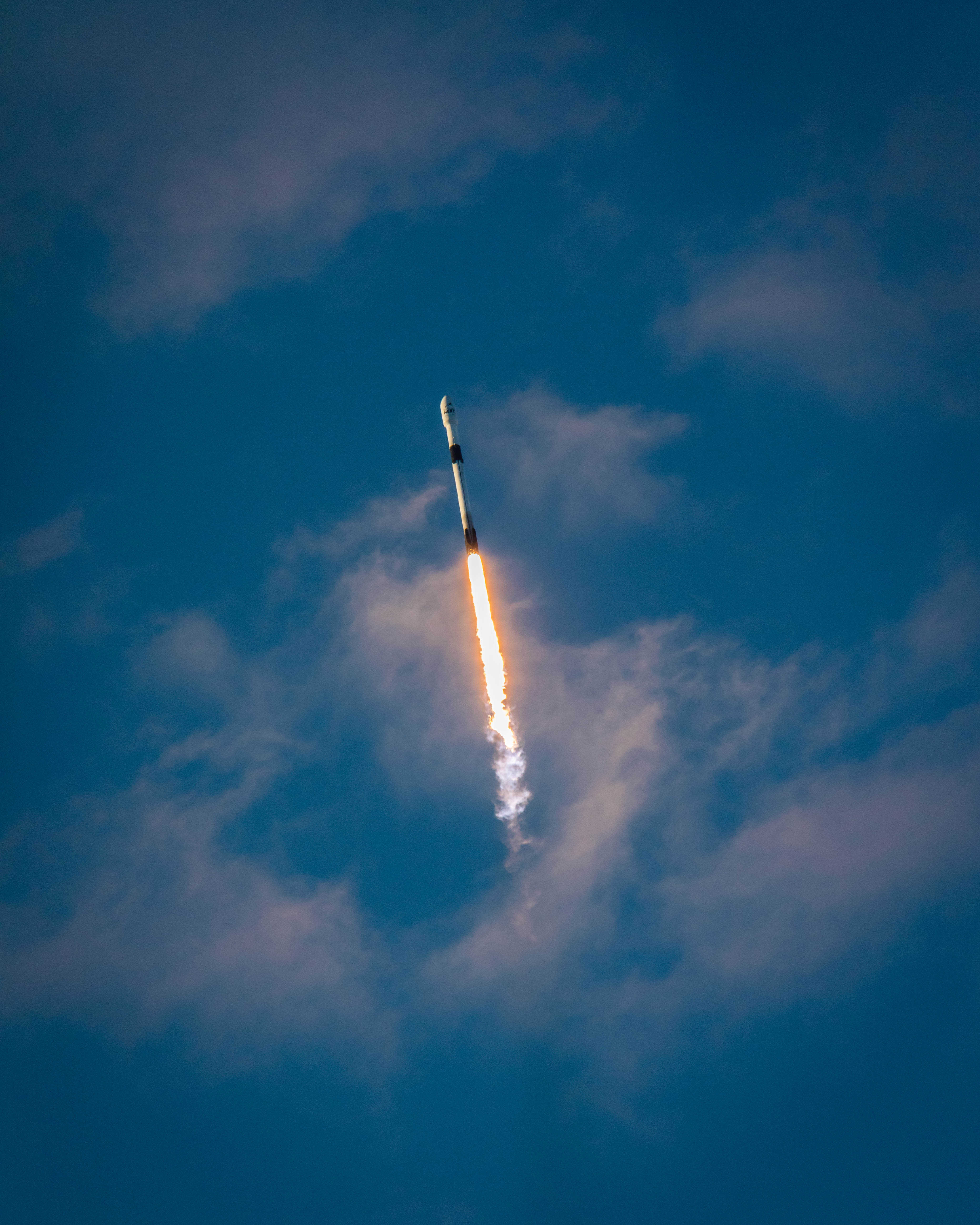
- SUCCESS
Iridium NEXT Mission 8
- Rocket: Falcon 9
- Launch pad: VAFB SLC 4E
- Launch date: January 11th 2019, 3:31 pm
- SpaceX's first flight of 2019 will be the eighth and final launch of its planned Iridium flights. Delivering 10 satellites to low earth orbit, this brings the total up to 75 and completes the Iridium NEXT constellation. This mission launches from SLC-4E at Vandenberg AFB. The booster is expected to land on JRTI.
- Media:
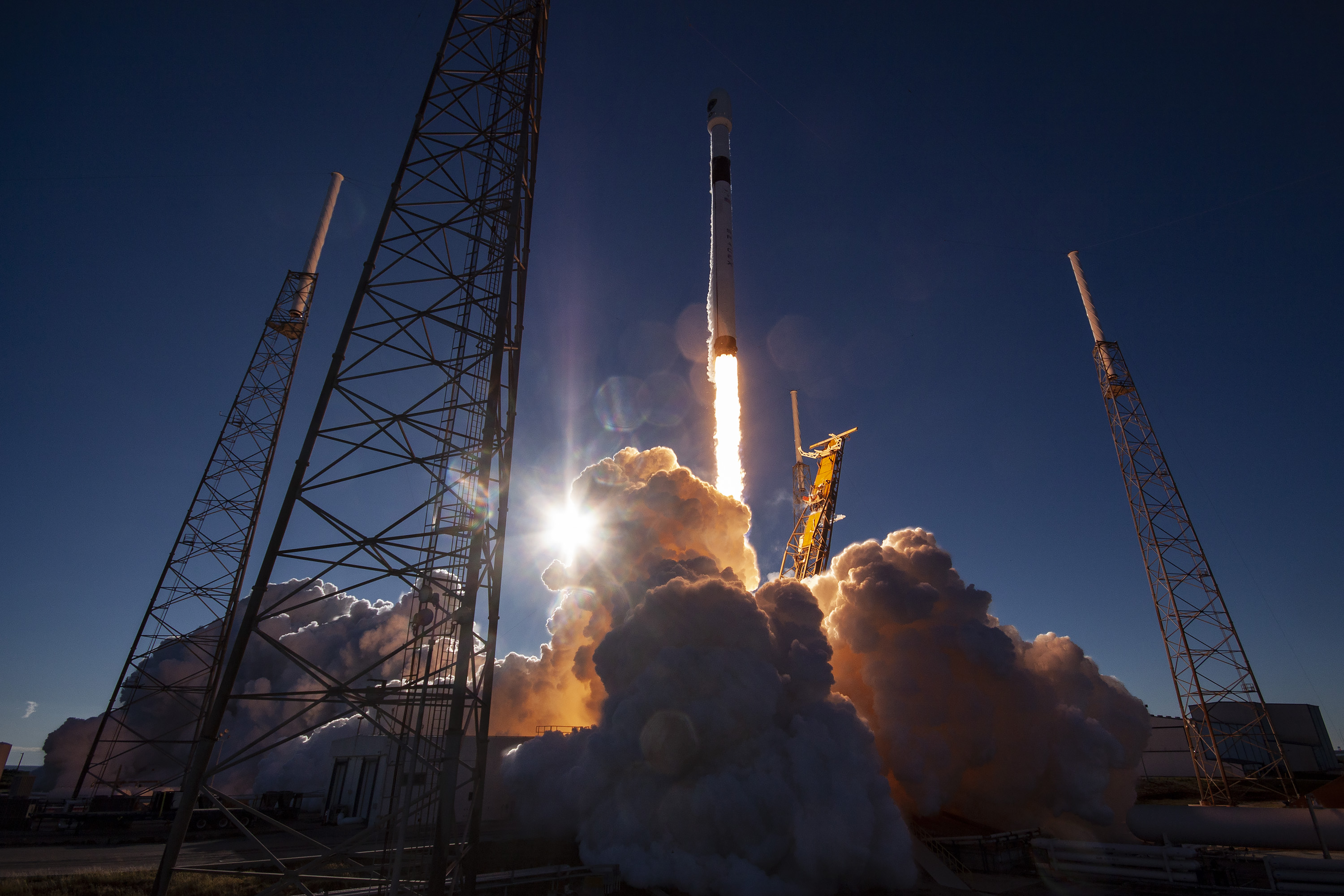
- SUCCESS
GPS III SV01
- Rocket: Falcon 9
- Launch pad: CCSFS SLC 40
- Launch date: December 23rd 2018, 1:51 pm
- SpaceX's twenty-first flight of 2018 launched the first of the new GPS III satellites (Block IIIA) for the United States Air Force and was SpaceX's first EELV mission. The spacecraft was delivered to a MEO transfer orbit from SLC-40 at Cape Canaveral Air Force Station. This mission was the first to fly with the redesigned COPV on the first stage (B1054) as well as the second. The booster was expended.
- Media:
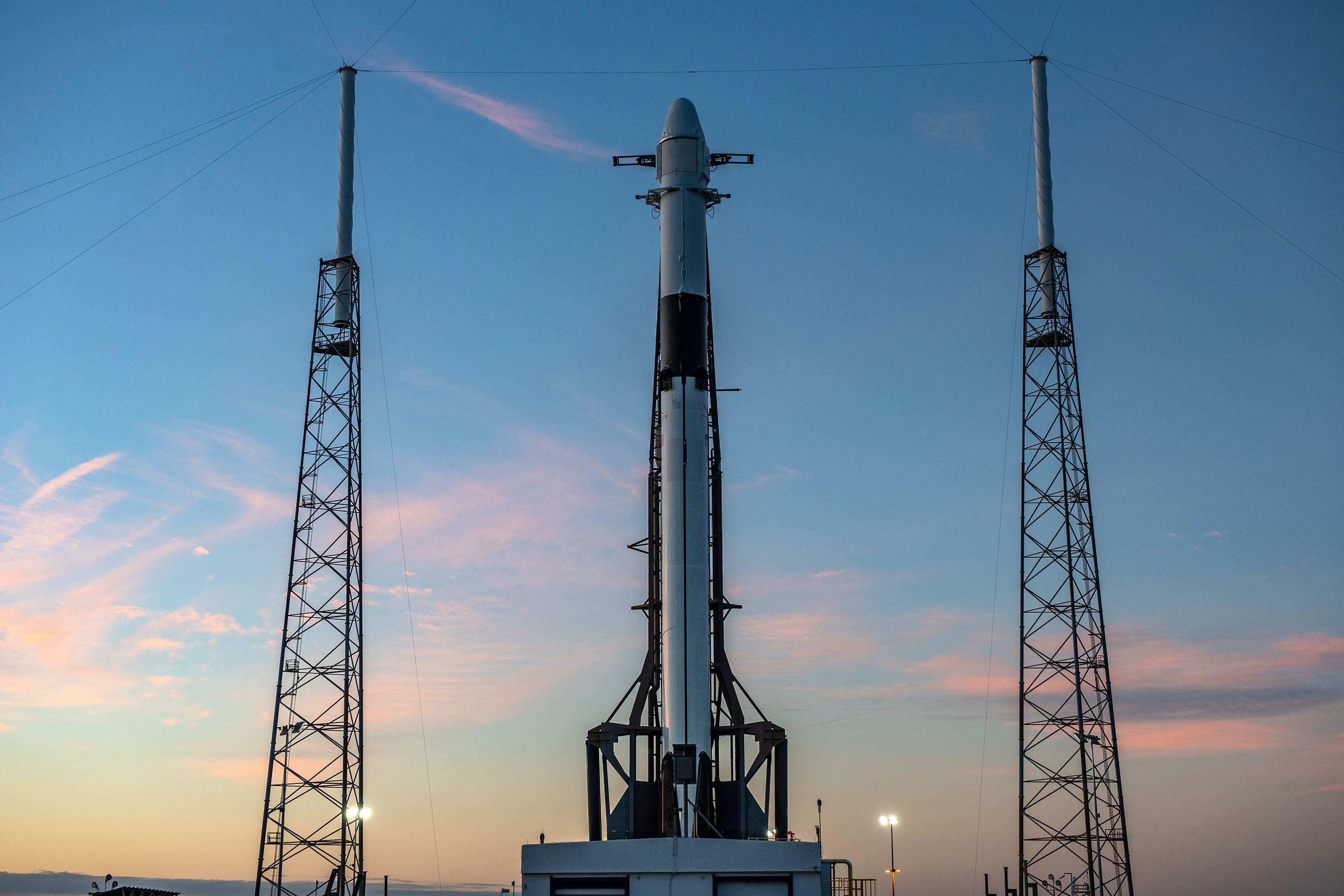
- SUCCESS
CRS-16
- Rocket: Falcon 9
- Launch pad: CCSFS SLC 40
- Launch date: December 5th 2018, 6:16 pm
- SpaceX's 16th Crew Resupply Mission on behalf of NASA, with a total of 20 contracted flights. This will bring essential supplies to the International Space Station using SpaceX's reusable Dragon spacecraft. The Falcon 9 will launch from SLC-40 at Cape Canaveral Air Force Station. During the landing of the first stage, a grid fin hydraulic pump stalled, causing the core to enter an uncontrolled roll, and resulting in a (succesful) water landing.
- Media:
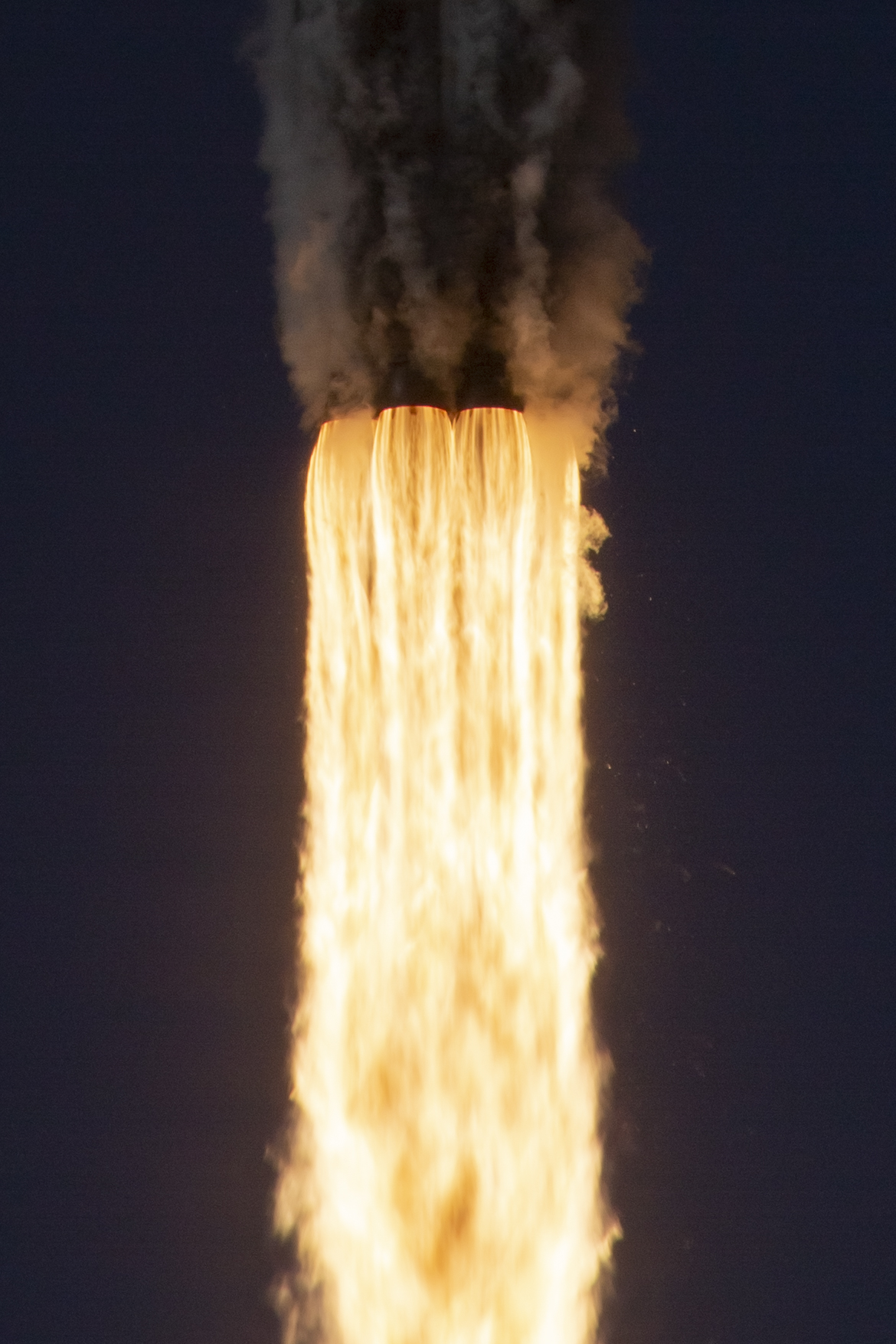
- SUCCESS
SSO-A
- Rocket: Falcon 9
- Launch pad: VAFB SLC 4E
- Launch date: December 3rd 2018, 6:34 pm
- SpaceX's nineteenth flight of 2018 will fly SSO-A: SmallSat Express out of Vandenberg SLC-4E for Spaceflight. SSO-A is a rideshare to sun synchronus low earth orbit consisting of 64 individual microsatellites and cubesats. It is also likely to be the third flight of core B1046 which previously flew Bangabandhu-1 and Merah Putih. If this happens it will be the first time a Falcon 9 has flown more than two missions.
- Media:
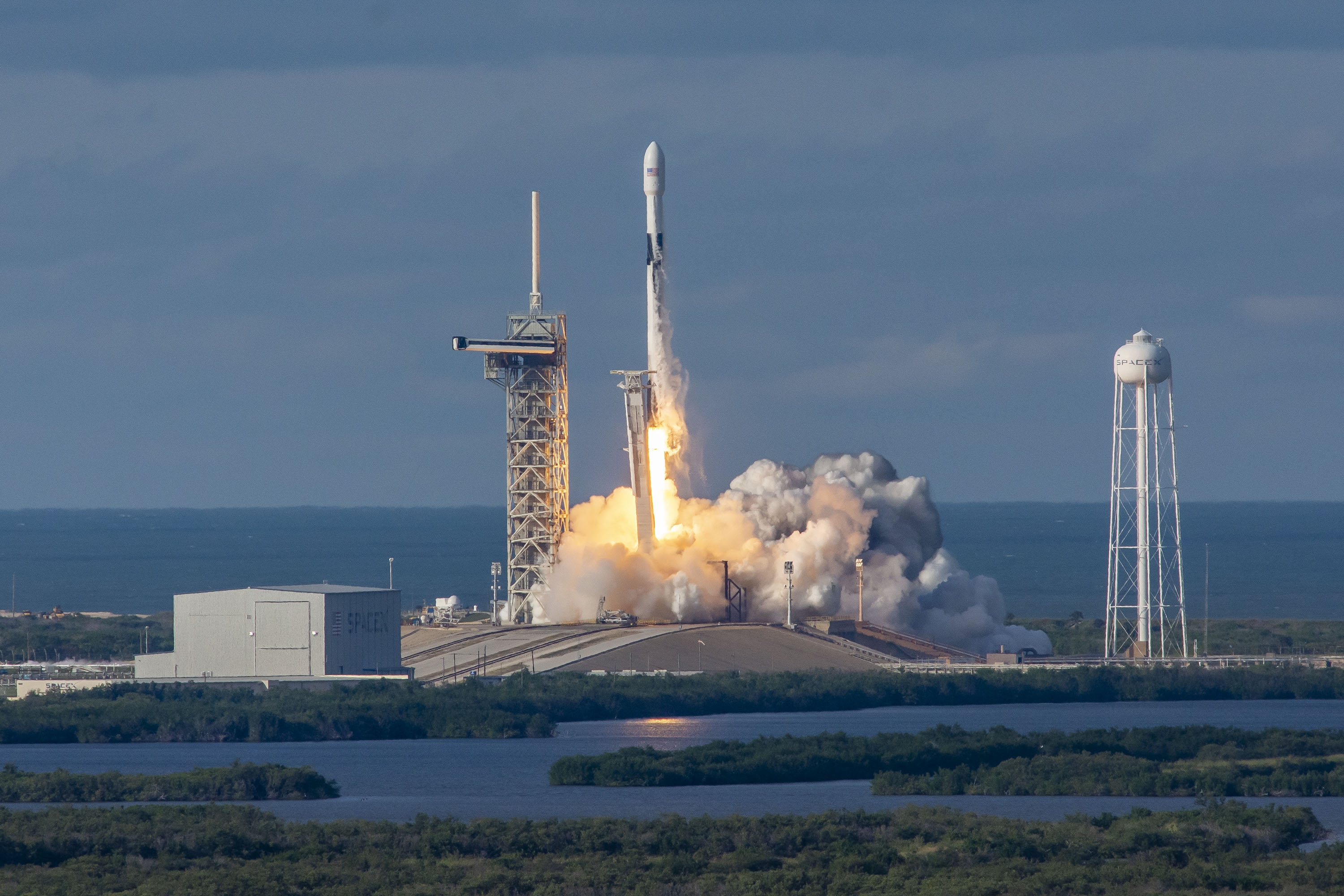
- SUCCESS
Es’hail 2
- Rocket: Falcon 9
- Launch pad: KSC LC 39A
- Launch date: November 15th 2018, 8:46 pm
- SpaceX's eighteenth flight of 2018 was its first for Es'hailSat. Es'hail-2 is a communications satellite delivering television and internet to Qatar and the surrounding region. It was launched into a geostationary transfer orbit from LC-39A at Kennedy Space Center. The booster landed on OCISLY.
- Media:

- SUCCESS
SAOCOM 1A
- Rocket: Falcon 9
- Launch pad: VAFB SLC 4E
- Launch date: October 8th 2018, 2:22 am
- SpaceX's seventeenth flight of 2018 was the first launch of the Saocom Earth observation satellite constellation of the Argentine Space Agency CONAE. The second launch of Saocom 1B will happen in 2019. This flight marked the first RTLS launch out of Vandenberg, with a landing on the concrete pad at SLC-4W, very close to the launch pad.
- Media:
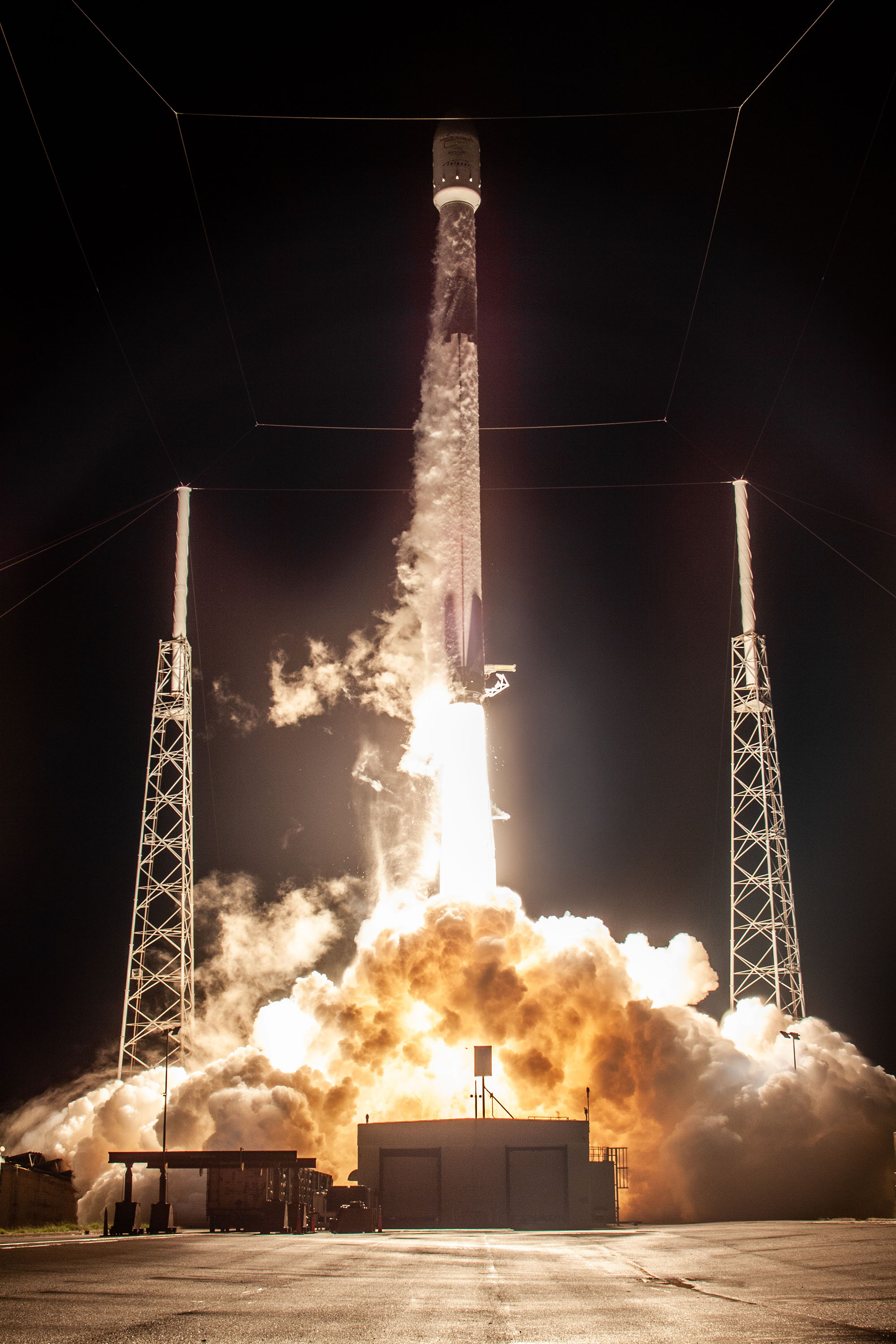
- SUCCESS
Telstar 18V
- Rocket: Falcon 9
- Launch pad: CCSFS SLC 40
- Launch date: September 10th 2018, 4:45 am
- SpaceX's sixteenth flight of 2018 launched the Telstar 18v GEO communication satellite for Telesat, the second launch for the canadian company in a few months. The first stage was a new Falcon 9 V1.2 Block 5 which was successfully recovered on OCISLY.
- Media:
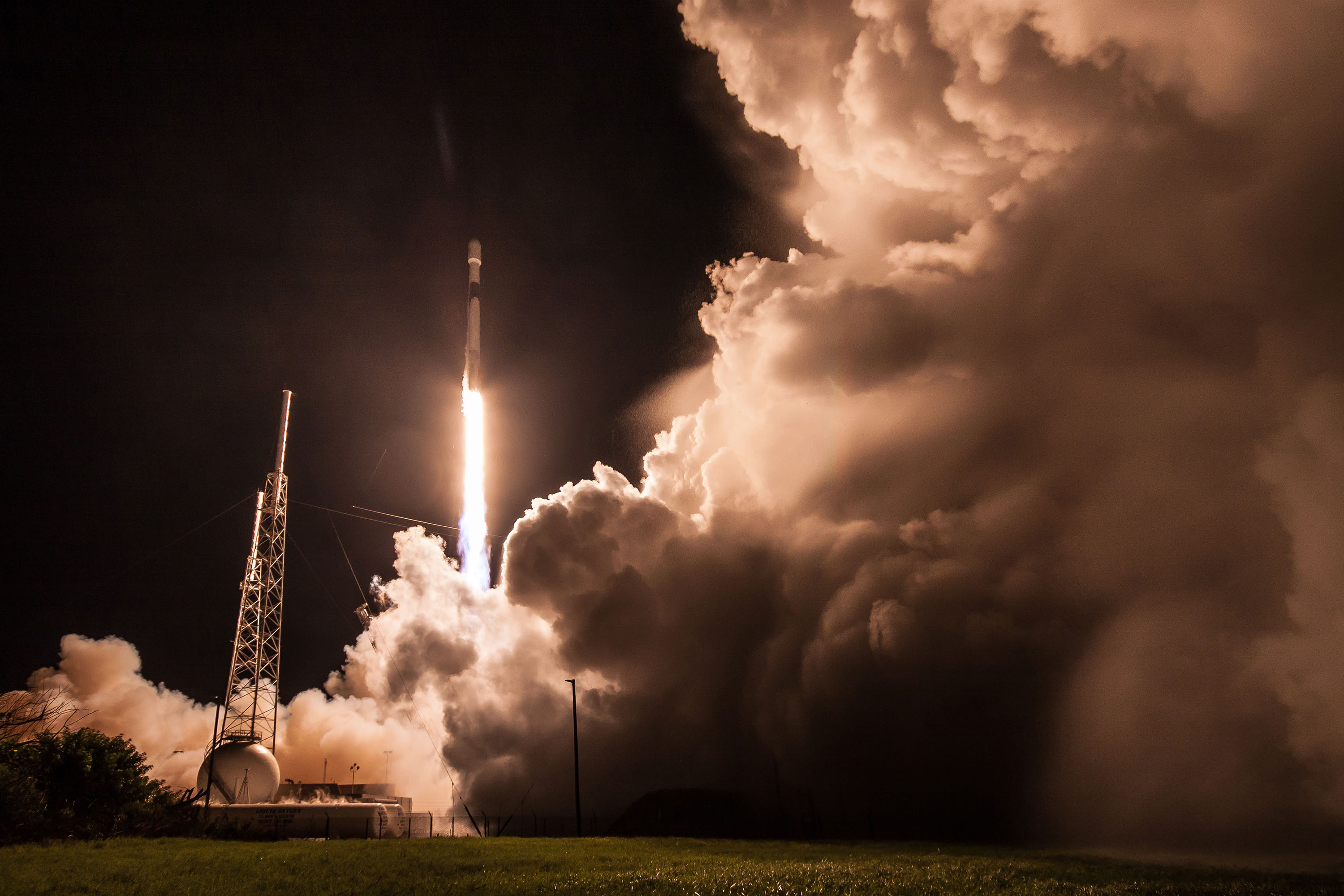
- SUCCESS
Merah Putih
- Rocket: Falcon 9
- Launch pad: CCSFS SLC 40
- Launch date: August 7th 2018, 5:18 am
- SpaceX's fifteenth flight of 2018 launched the Merah Putih (also known as Telkom-4) geostationary communications satellite for Telkom Indonesia. It marked the first reuse of any Block 5 first stage; the booster B1046 had previously launched Bangabandhu-1. The stage was recovered and is expected to become the first Falcon 9 booster to fly three missions.
- Media:

- SUCCESS
Iridium NEXT Mission 7
- Rocket: Falcon 9
- Launch pad: VAFB SLC 4E
- Launch date: July 25th 2018, 11:39 am
- SpaceX's fourteenth flight of 2018 and seventh of eight launches in a half-a-billion-dollar contract with Iridium. Will use a Block 5 first stage, to be recovered in the Pacific Ocean. Only one mission will be left for Iridium, with 10 more satellites. First attempt to recover a Fairing with the upgraded net. Fairing recovery was not successful.
- Media:
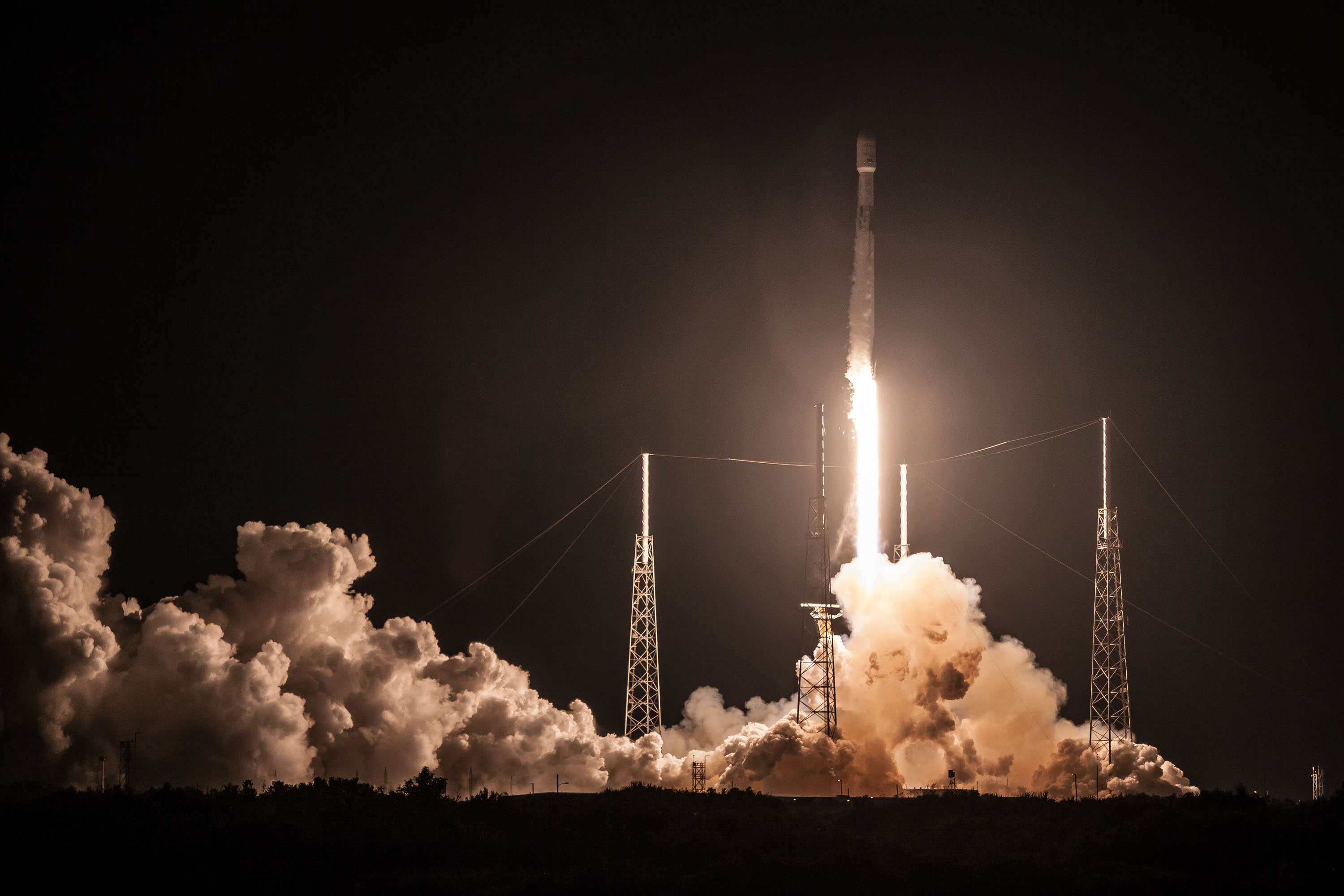
- SUCCESS
Telstar 19V
- Rocket: Falcon 9
- Launch pad: CCSFS SLC 40
- Launch date: July 22nd 2018, 5:50 am
- SSL-manufactured communications satellite intended to be placed at 63° West over the Americas. At 7,075 kg, it became the heaviest commercial communications satellite ever launched.
- Media:
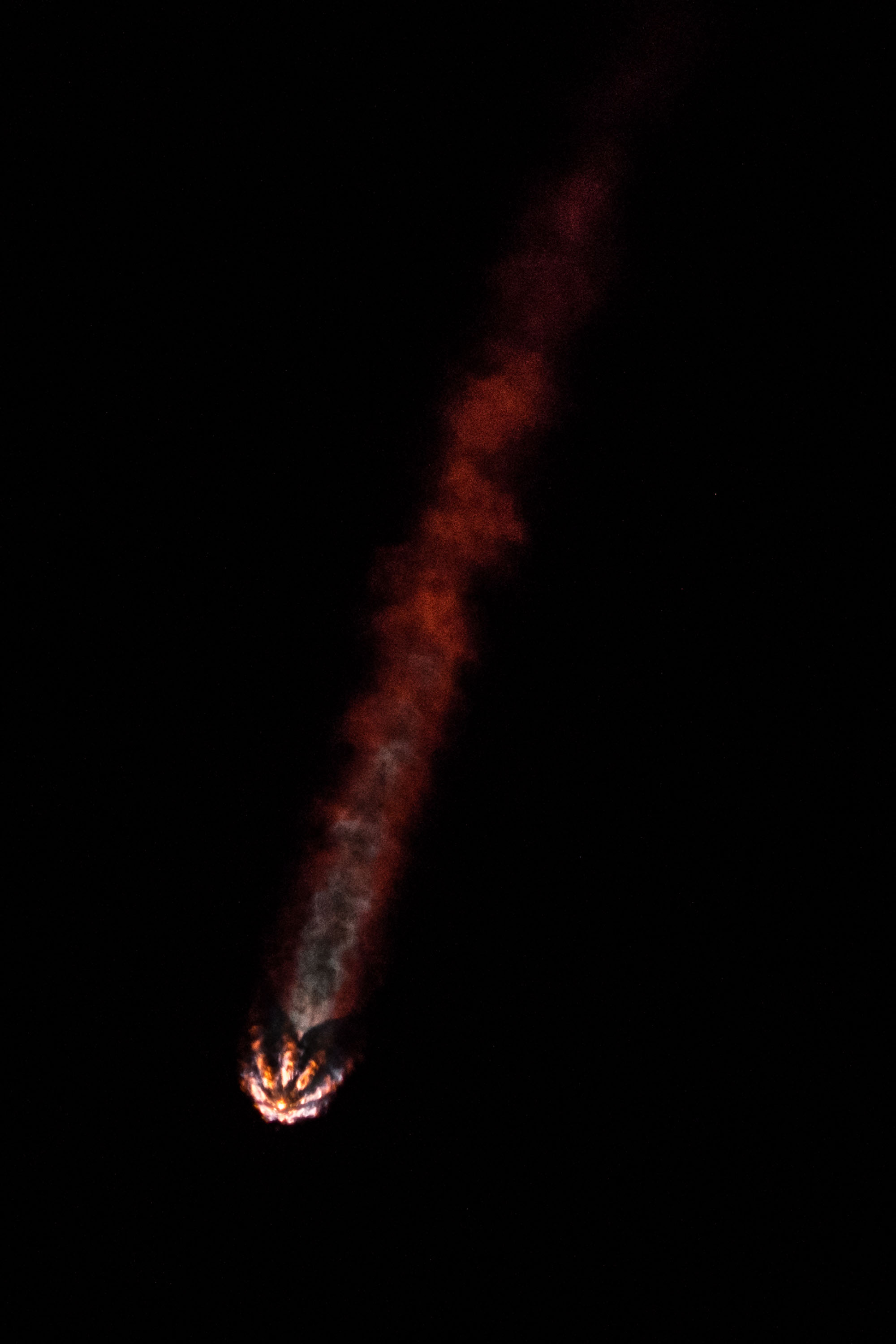
- SUCCESS
CRS-15
- Rocket: Falcon 9
- Launch pad: CCSFS SLC 40
- Launch date: June 29th 2018, 9:42 am
- Payload included MISSE-FF 2, ECOSTRESS, and a Latching End Effector. The refurbished booster featured a record 2.5 months period turnaround from its original launch of the TESS satellite — the fastest previous was 4.5 months. This was the last commercial flight of a Block 4 booster, which was expended into the Atlantic without landing legs and grid fins.
- Media:
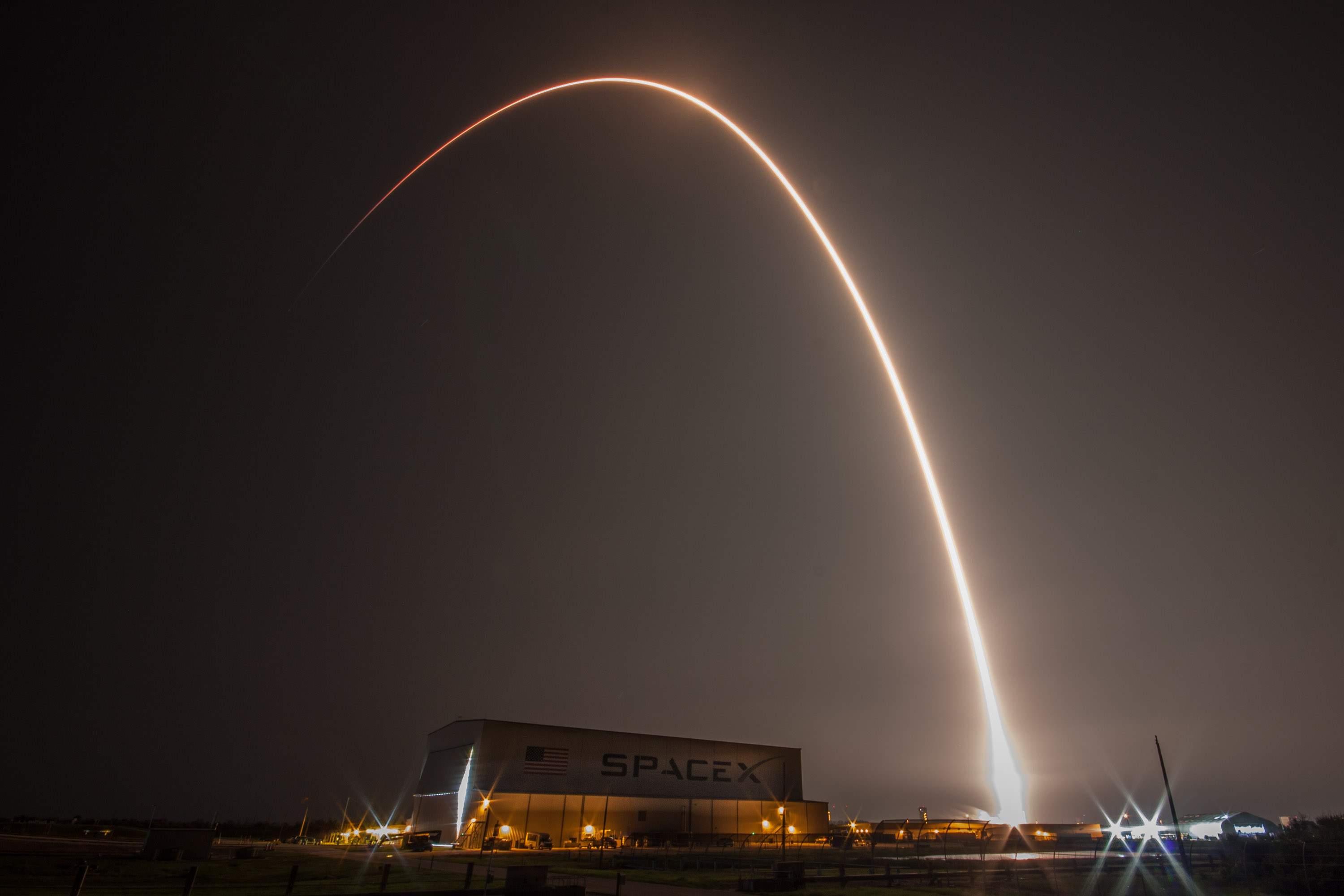
- SUCCESS
SES-12
- Rocket: Falcon 9
- Launch pad: CCSFS SLC 40
- Launch date: June 4th 2018, 4:45 am
- SES-12, the replacement satellite for NSS-6, was successfully launched and deployed on June 4th, completing SpaceX's eleventh flight of 2018. According to SES Luxembourg, The SES-12 satellite will expand SES’s capabilities to provide direct-to-home (DTH) broadcasting, VSAT, Mobility and High Throughput Satellite (HTS) data connectivity services in the Middle East and the Asia-Pacific region, including rapidly growing markets such as India and Indonesia. [SES-12] will be co-located with SES-8
- Media:

- SUCCESS
Iridium NEXT Mission 6
- Rocket: Falcon 9
- Launch pad: VAFB SLC 4E
- Launch date: May 22nd 2018, 7:47 pm
- GFZ arranged a rideshare of GRACE-FO on a Falcon 9 with Iridium following the cancellation of their Dnepr launch contract in 2015. Iridium CEO Matt Desch disclosed in September 2017 that GRACE-FO would be launched on the sixth Iridium NEXT mission. The booster reuse turnaround was a record 4.5 months between flights.
- Media:
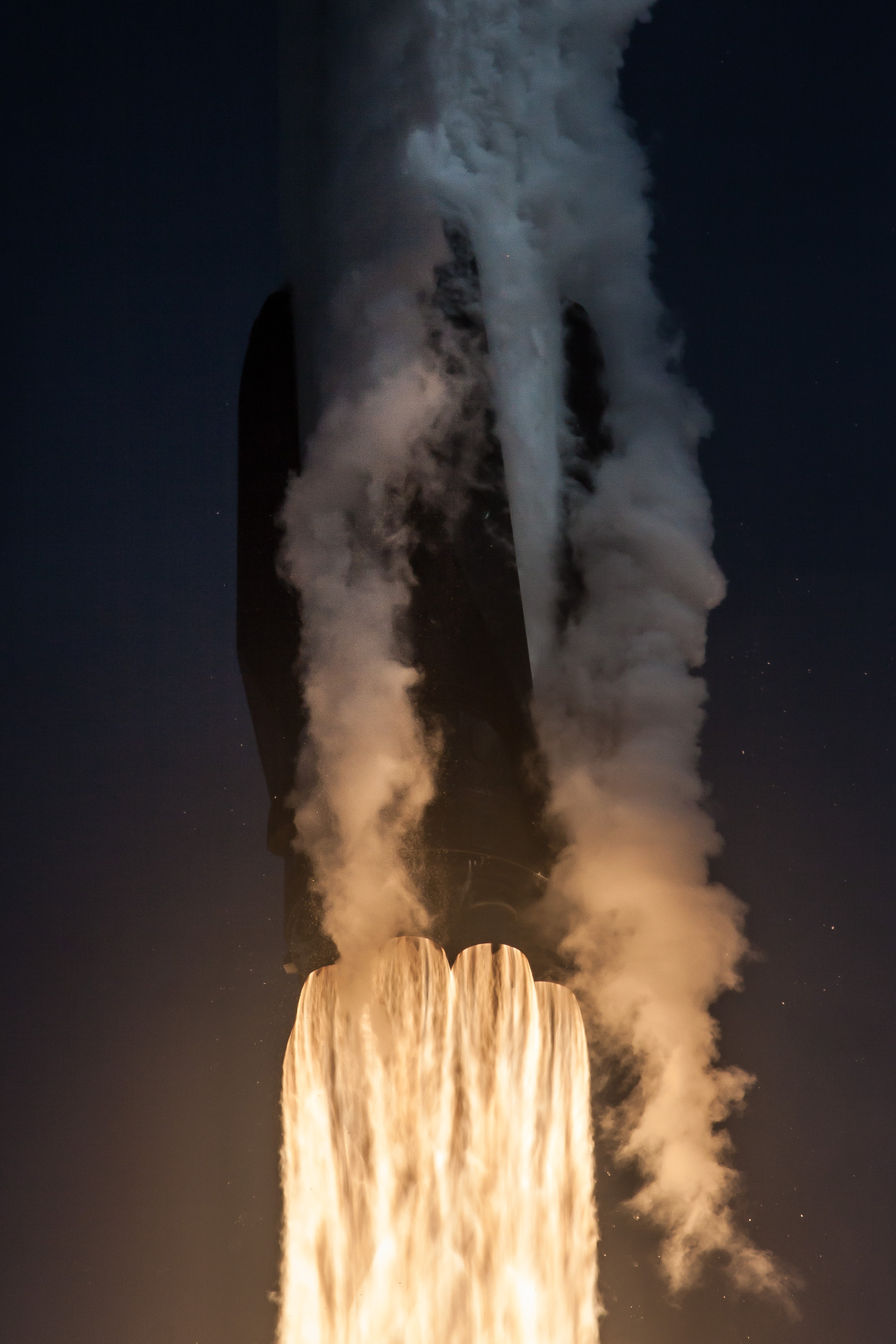
- SUCCESS
Bangabandhu-1
- Rocket: Falcon 9
- Launch pad: KSC LC 39A
- Launch date: May 11th 2018, 8:14 pm
- First launch of a Block V first stage.
- Media:
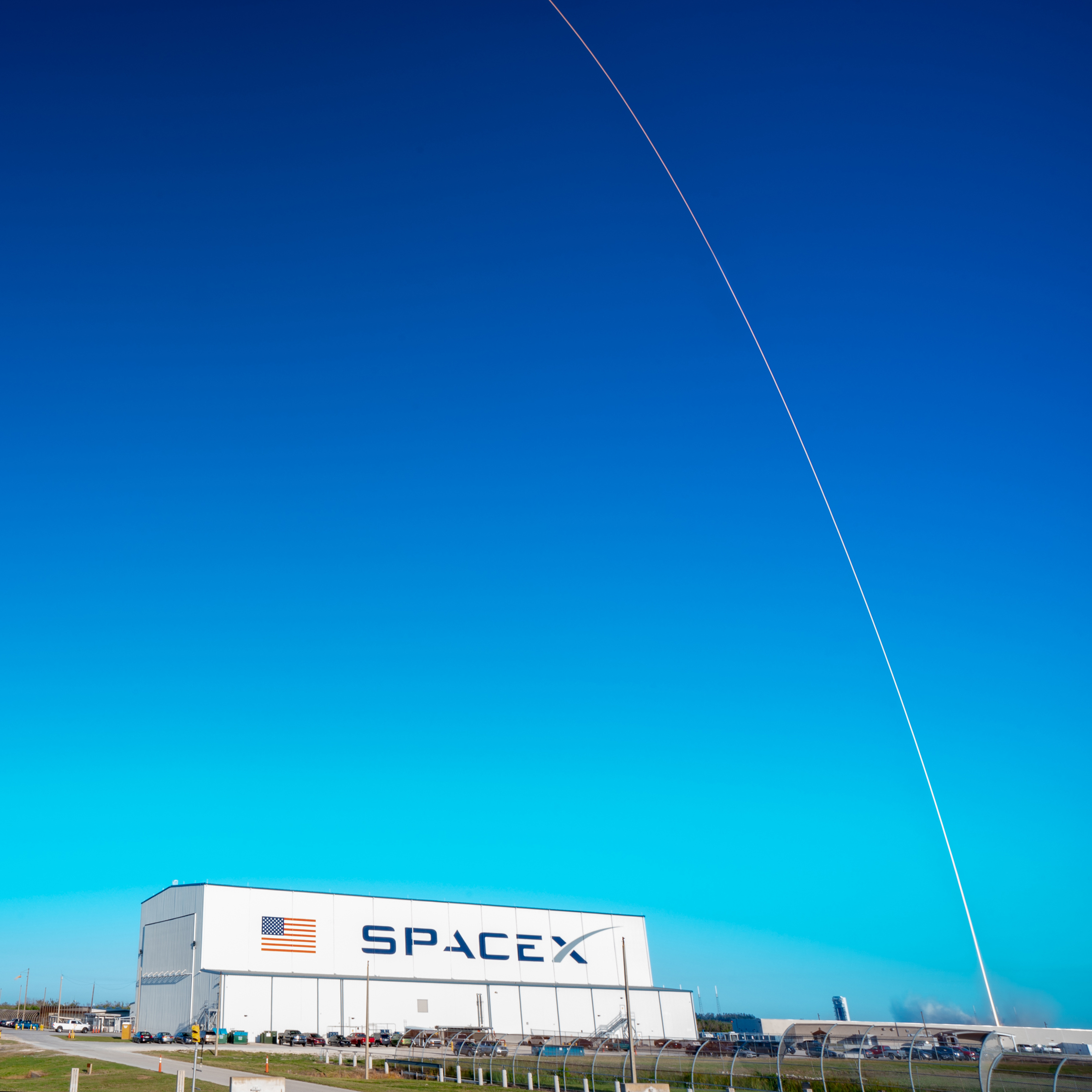
- SUCCESS
TESS
- Rocket: Falcon 9
- Launch pad: CCSFS SLC 40
- Launch date: April 18th 2018, 10:51 pm
- Part of the Explorers program, this space telescope is intended for wide-field search of exoplanets transiting nearby stars. It is the first NASA high priority science mission launched by SpaceX. It was the first time SpaceX launched a scientific satellite not primarily intended for Earth observations. The second stage placed it into a high-Earth elliptical orbit, after which the satellite's own booster will perform complex maneuvers including a lunar flyby, and over the course of two months, reach a stable, 2:1 resonant orbit with the Moon. In January 2018, SpaceX received NASA's Launch Services Program Category 2 certification of its Falcon 9 'Full Thrust', certification which is required for launching medium risk missions like TESS. It was the last launch of a new Block 4 booster, and marked the 24th successful recovery of the booster. An experimental water landing was performed in order to attempt fairing recovery.
- Media:
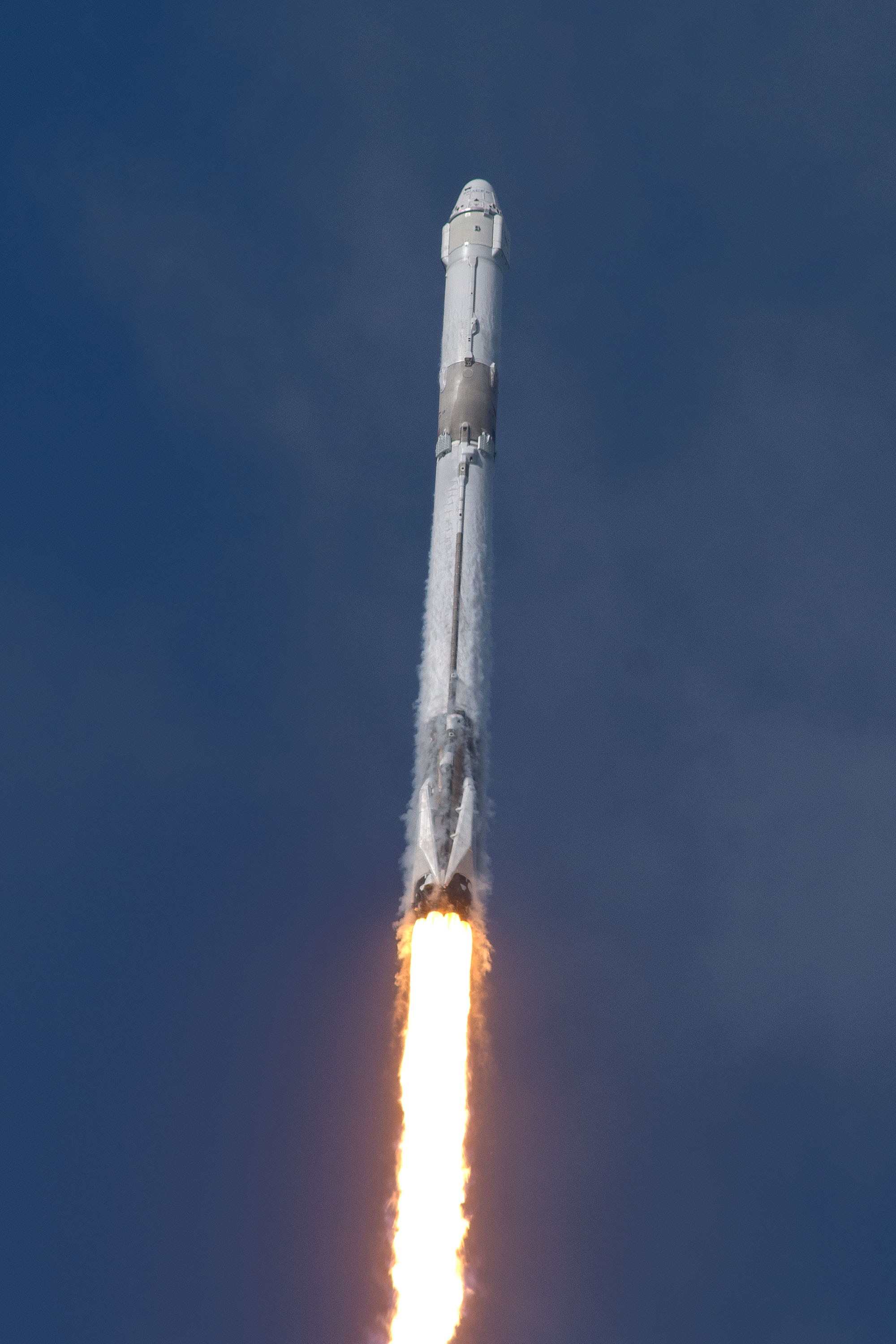
- SUCCESS
CRS-14
- Rocket: Falcon 9
- Launch pad: CCSFS SLC 40
- Launch date: April 2nd 2018, 8:30 pm
- The launch used a refurbished booster (from CRS-12) for the 11th time, and a refurbished capsule (C110 from CRS-8) for the third time. External payloads include a materials research platform MISSE-FF phase 3 of the Robotic Refueling Mission TSIS, heliophysics sensor several crystallization experiments, and the RemoveDebris spacecraft aimed at space junk removal. The booster was expended in order to test a new landing profile.
- Media:

- SUCCESS
Iridium NEXT Mission 5
- Rocket: Falcon 9
- Launch pad: VAFB SLC 4E
- Launch date: March 30th 2018, 2:13 pm
- Fifth Iridium NEXT mission to deploy ten Iridium NEXT satellites. Reused booster from third Iridium flight, and although controlled descent was performed, the booster was expended into the ocean. SpaceX planned a second recovery attempt of one half of the fairing using the specially modified boat Mr. Steven. However, the fairing's parafoil twisted during the recovery, which led to water impact at high speed
- Media:
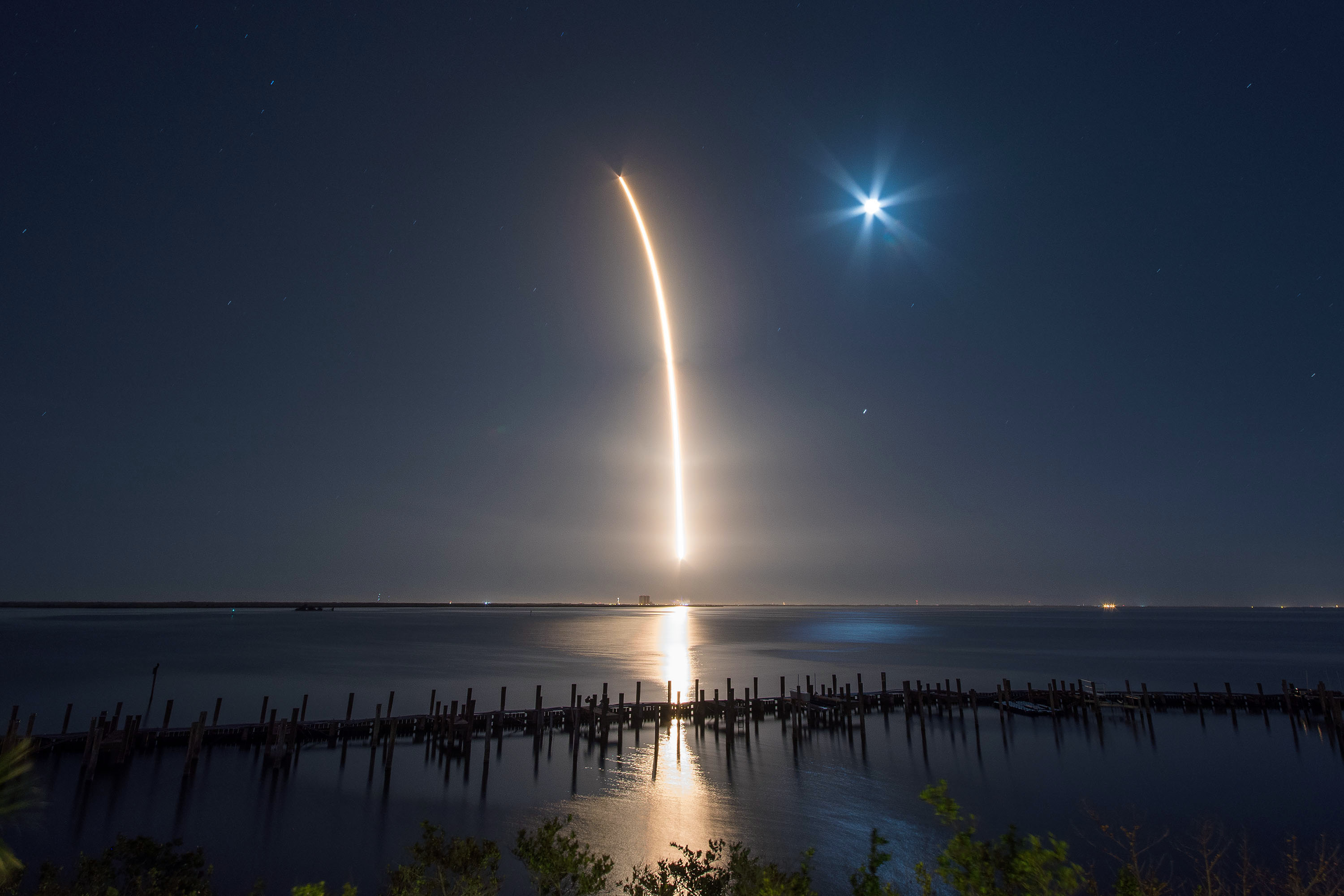
- SUCCESS
Hispasat 30W-6
- Rocket: Falcon 9
- Launch pad: CCSFS SLC 40
- Launch date: March 6th 2018, 5:33 am
- Launched with landing legs and titanium grid fins. Did not attempt a landing due to 'unfavorable weather conditions in the recovery area'.
- Media:
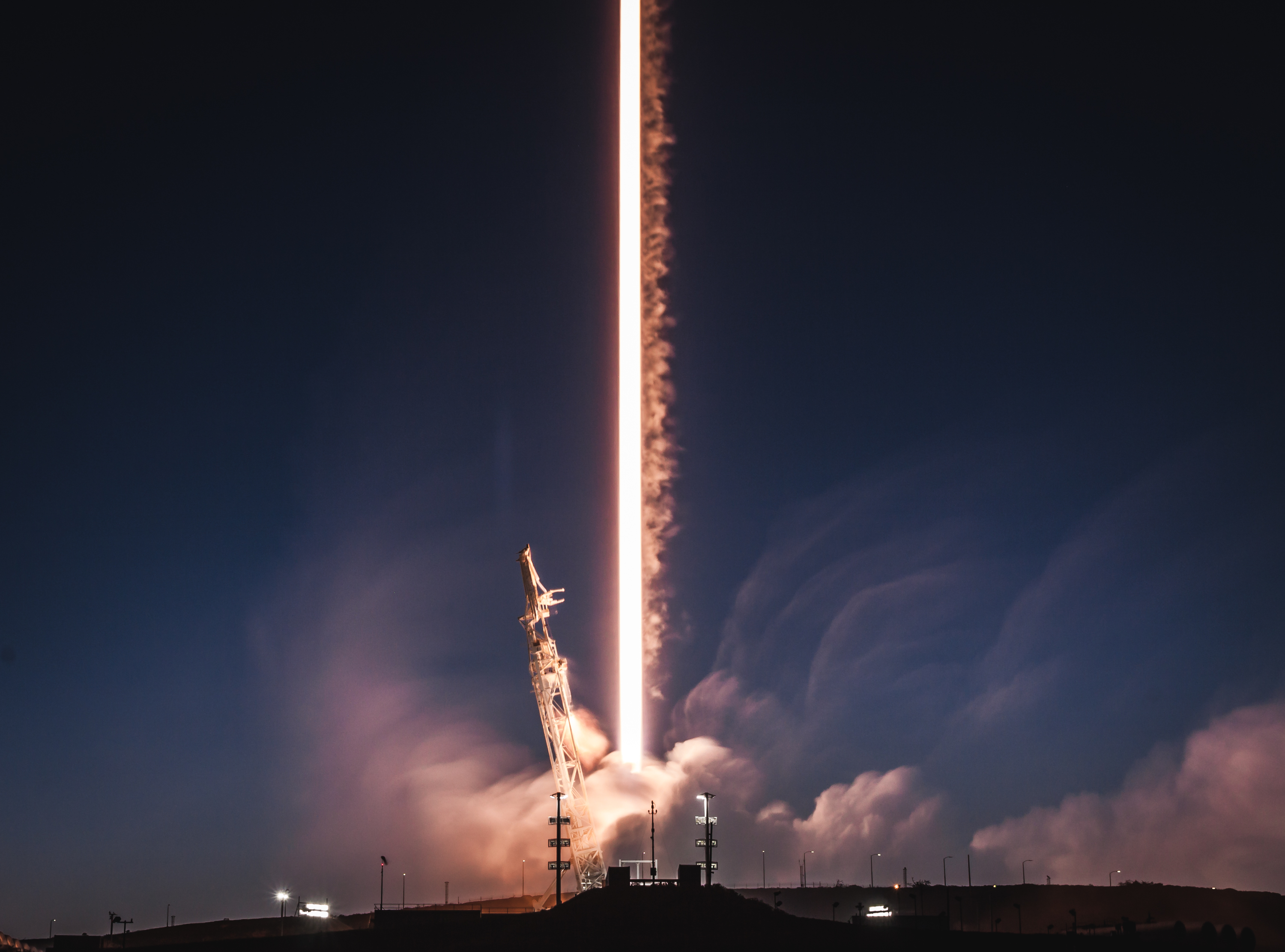
- SUCCESS
Paz / Starlink Demo
- Rocket: Falcon 9
- Launch pad: VAFB SLC 4E
- Launch date: February 22nd 2018, 2:17 pm
- First flight with fairing 2.0. Will also carry two SpaceX test satellites for the upcoming Starlink constellation.
- Media:
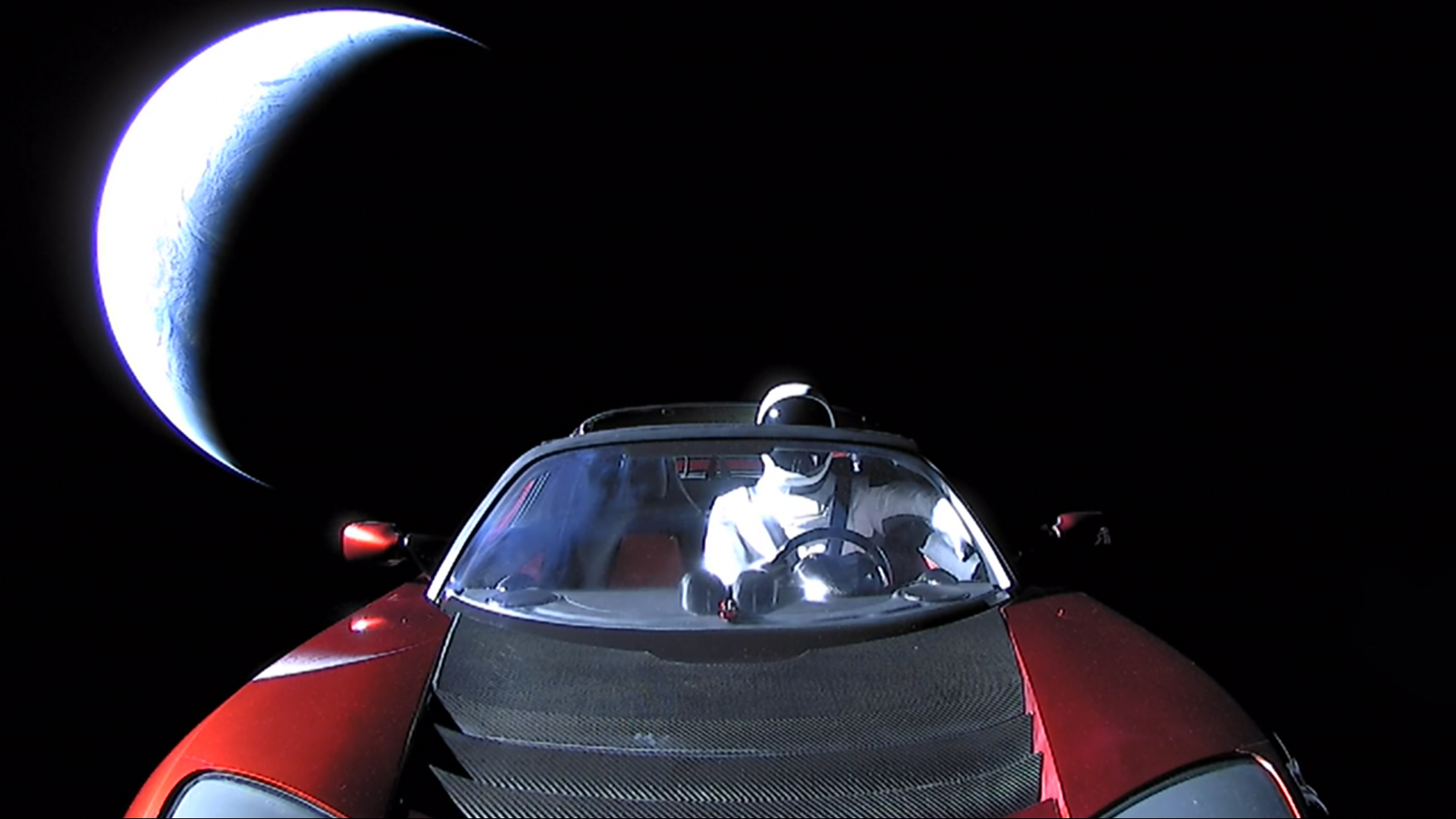
- SUCCESS
Falcon Heavy Test Flight
- Rocket: Falcon Heavy
- Launch pad: KSC LC 39A
- Launch date: February 6th 2018, 8:45 pm
- The launch was a success, and the side boosters landed simultaneously at adjacent ground pads. Drone ship landing of the central core failed. Final burn to heliocentric mars-earth orbit was successful after the second stage and payload passed through the Van Allen belts.
- Media:
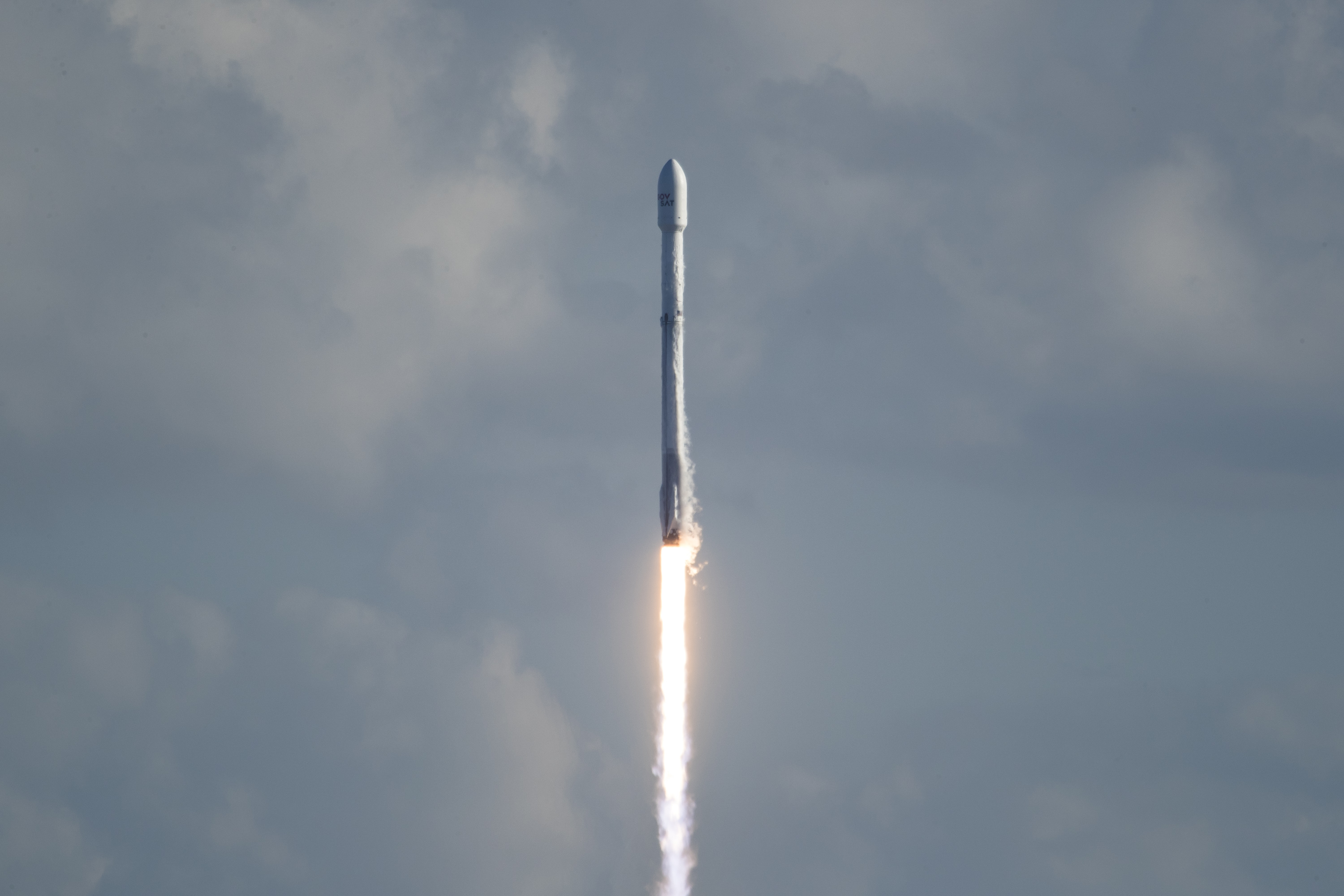
- SUCCESS
SES-16 / GovSat-1
- Rocket: Falcon 9
- Launch pad: CCSFS SLC 40
- Launch date: January 31st 2018, 9:25 pm
- Reused booster from the classified NROL-76 mission in May 2017. Following a successful experimental ocean landing that used three engines, the booster unexpectedly remained intact; Elon Musk stated in a tweet that SpaceX will attempt to tow the booster to shore.
- Media:
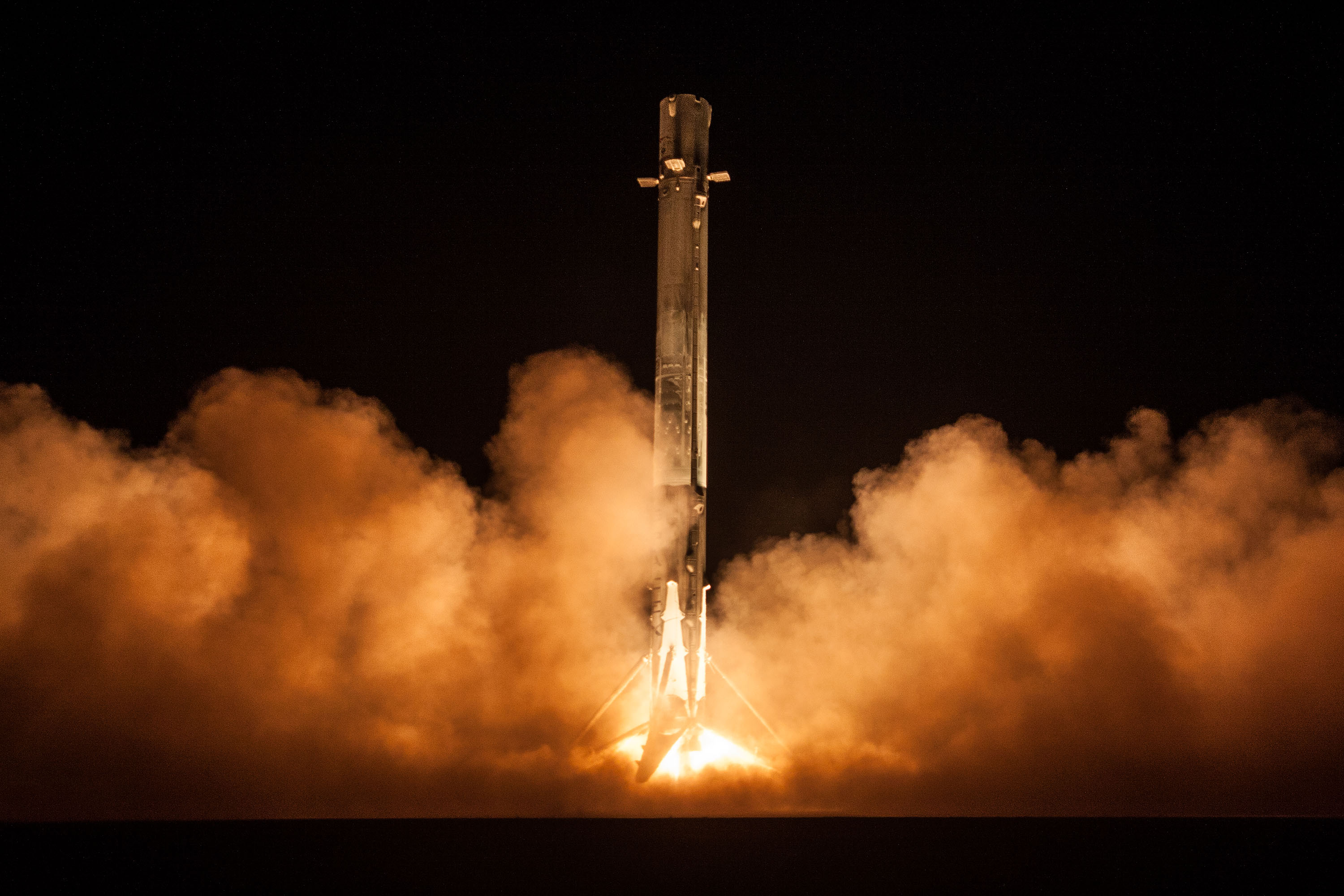
- SUCCESS
ZUMA
- Rocket: Falcon 9
- Launch pad: CCSFS SLC 40
- Launch date: January 8th 2018, 1:00 am
- Originally planned for mid-November 2017, the mission was delayed due to test results from the fairing of another customer. First-stage booster will attempt landing at LZ-1
- Media:
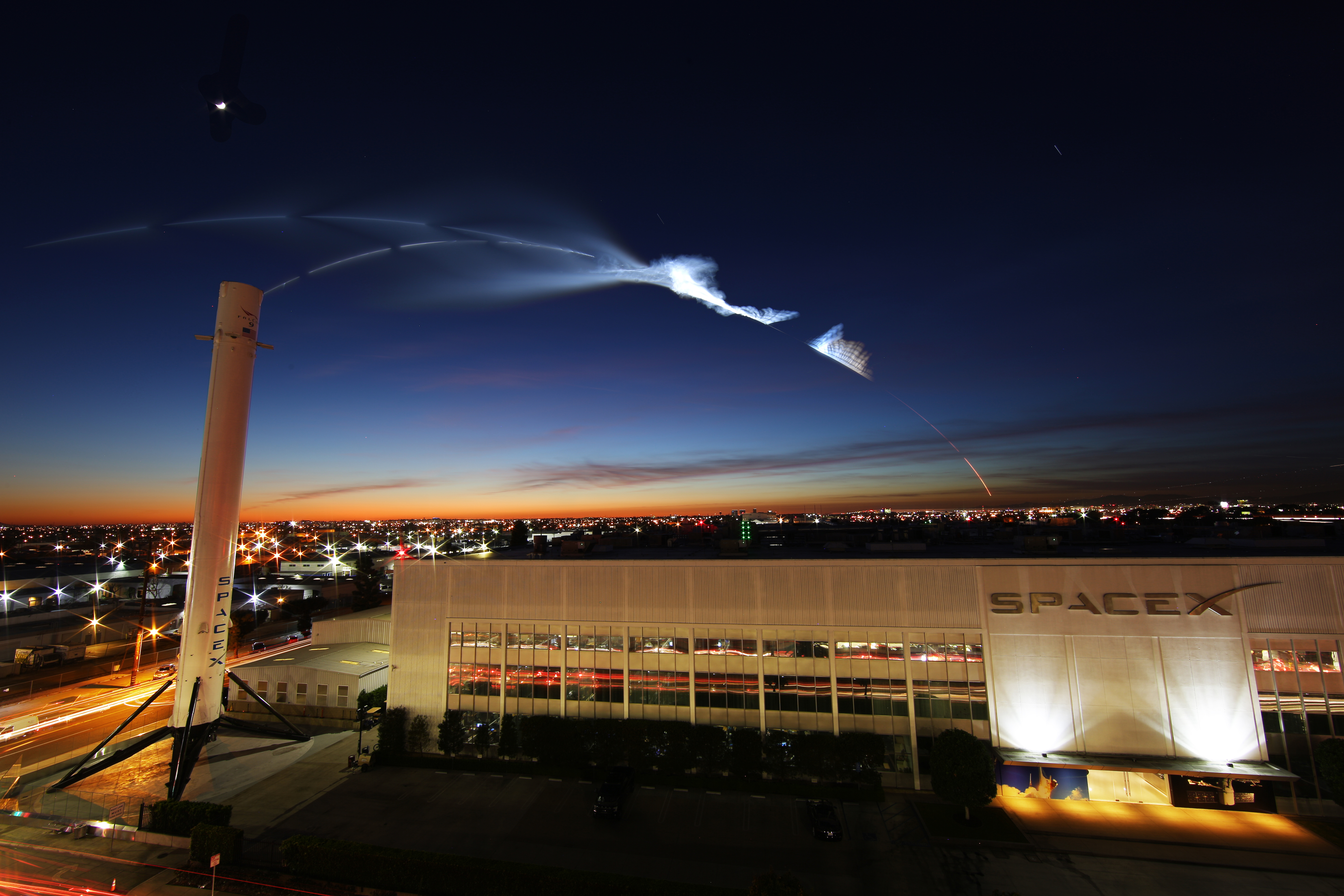
- SUCCESS
Iridium NEXT Mission 4
- Rocket: Falcon 9
- Launch pad: VAFB SLC 4E
- Launch date: December 23rd 2017, 1:27 am
- Reusing the booster first used on Iridium-2, but will be flying expendable.
- Media:
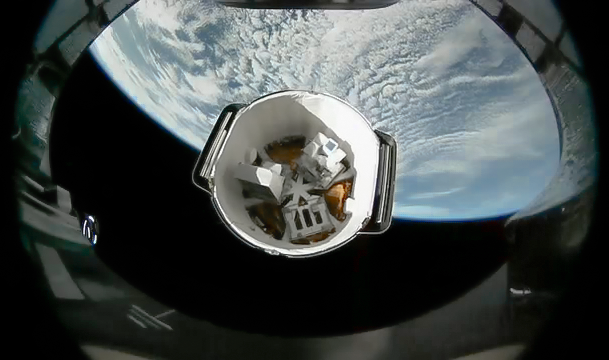
- SUCCESS
CRS-13
- Rocket: Falcon 9
- Launch pad: CCSFS SLC 40
- Launch date: December 15th 2017, 3:36 pm
- Will reuse the Dragon capsule previously flown on CRS-6 and will reuse the booster from CRS-11.
- Media:
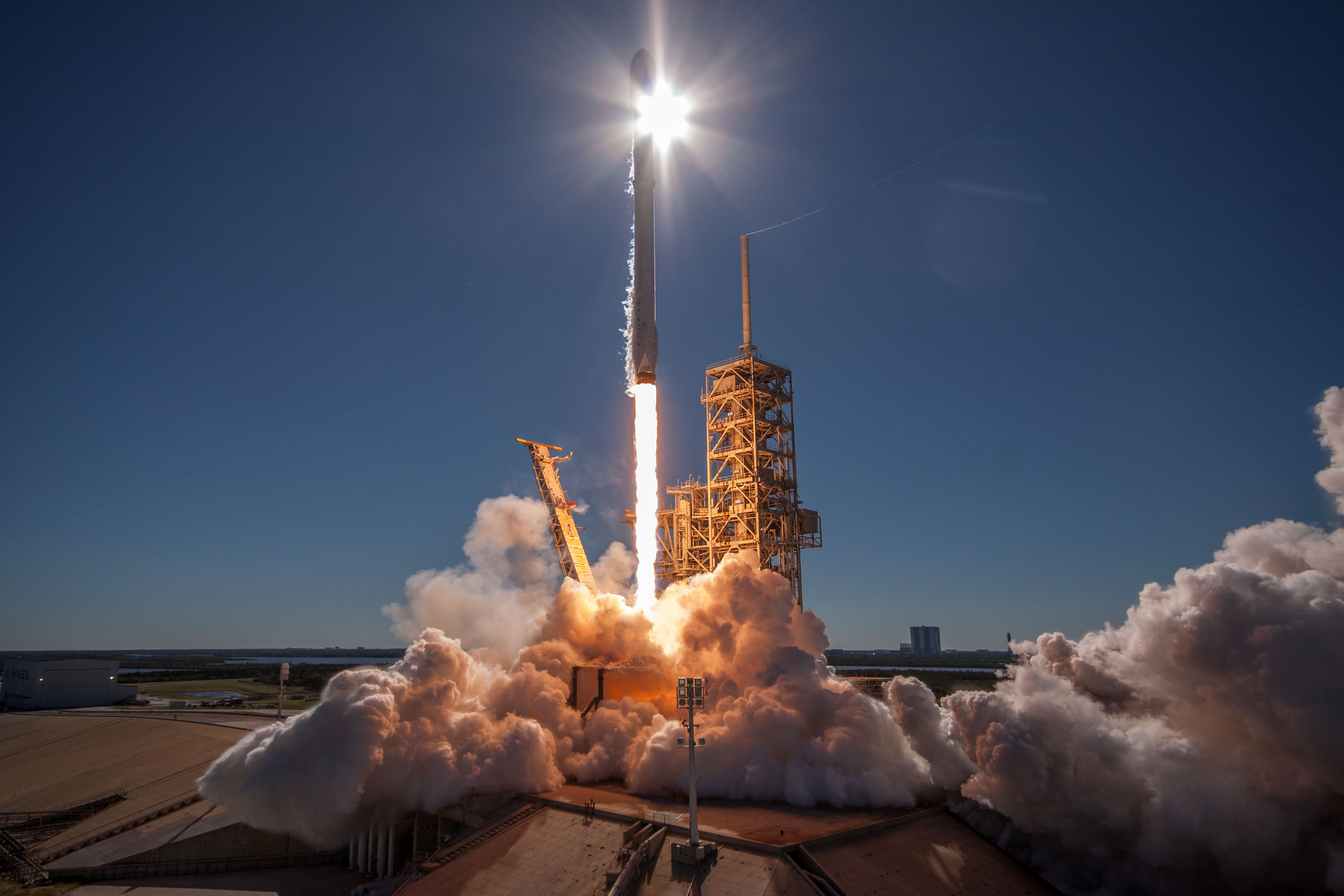
- SUCCESS
KoreaSat 5A
- Rocket: Falcon 9
- Launch pad: KSC LC 39A
- Launch date: October 30th 2017, 7:34 pm
- KoreaSat 5A is a Ku-band satellite capable of providing communication services from East Africa and Central Asia to southern India, Southeast Asia, the Philippines, Guam, Korea, and Japan. The satellite will be placed in GEO at 113° East Longitude, and will provide services ranging from broadband internet to broadcasting services and maritime communications.
- Media:
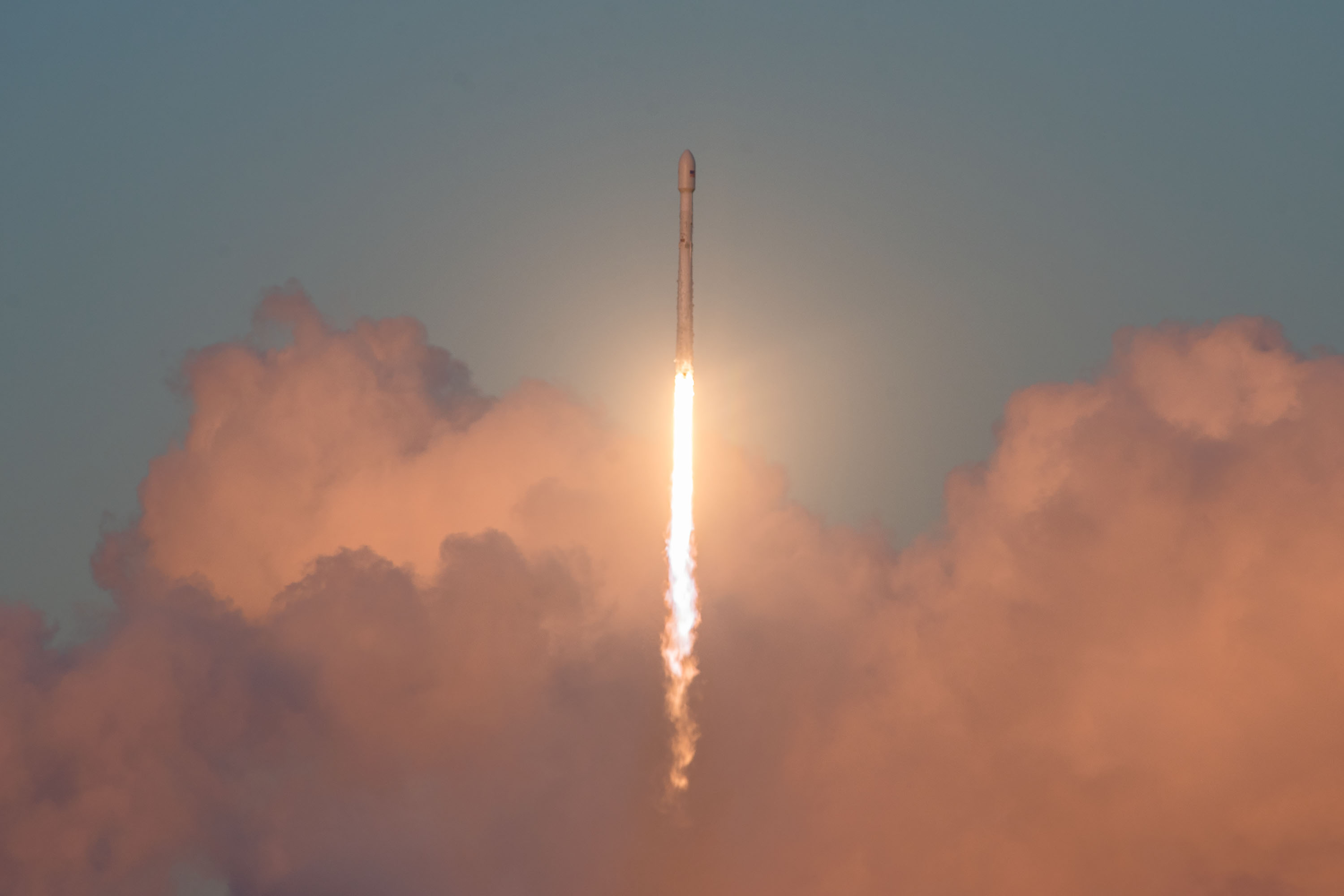
- SUCCESS
SES-11 / Echostar 105
- Rocket: Falcon 9
- Launch pad: KSC LC 39A
- Launch date: October 11th 2017, 10:53 pm
- Nineteenth comsat to GTO, also the fourth satellite launched for SES and second for Echostar. Third time a first stage booster will be reused.
- Media:
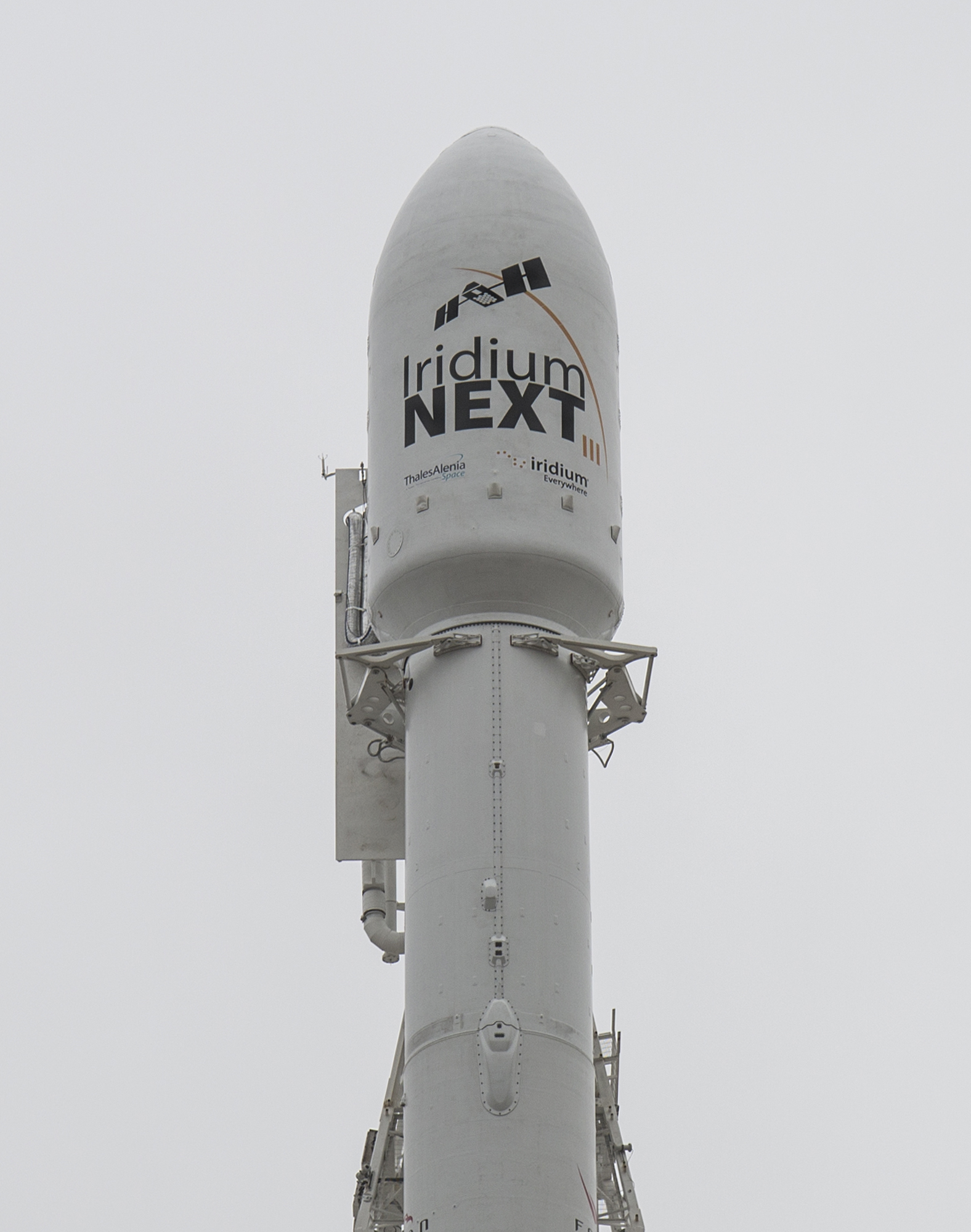
- SUCCESS
Iridium NEXT Mission 3
- Rocket: Falcon 9
- Launch pad: VAFB SLC 4E
- Launch date: October 9th 2017, 12:37 pm
- Third of eight missions to launch Iridium's second generation constellation from VAFB
- Media:
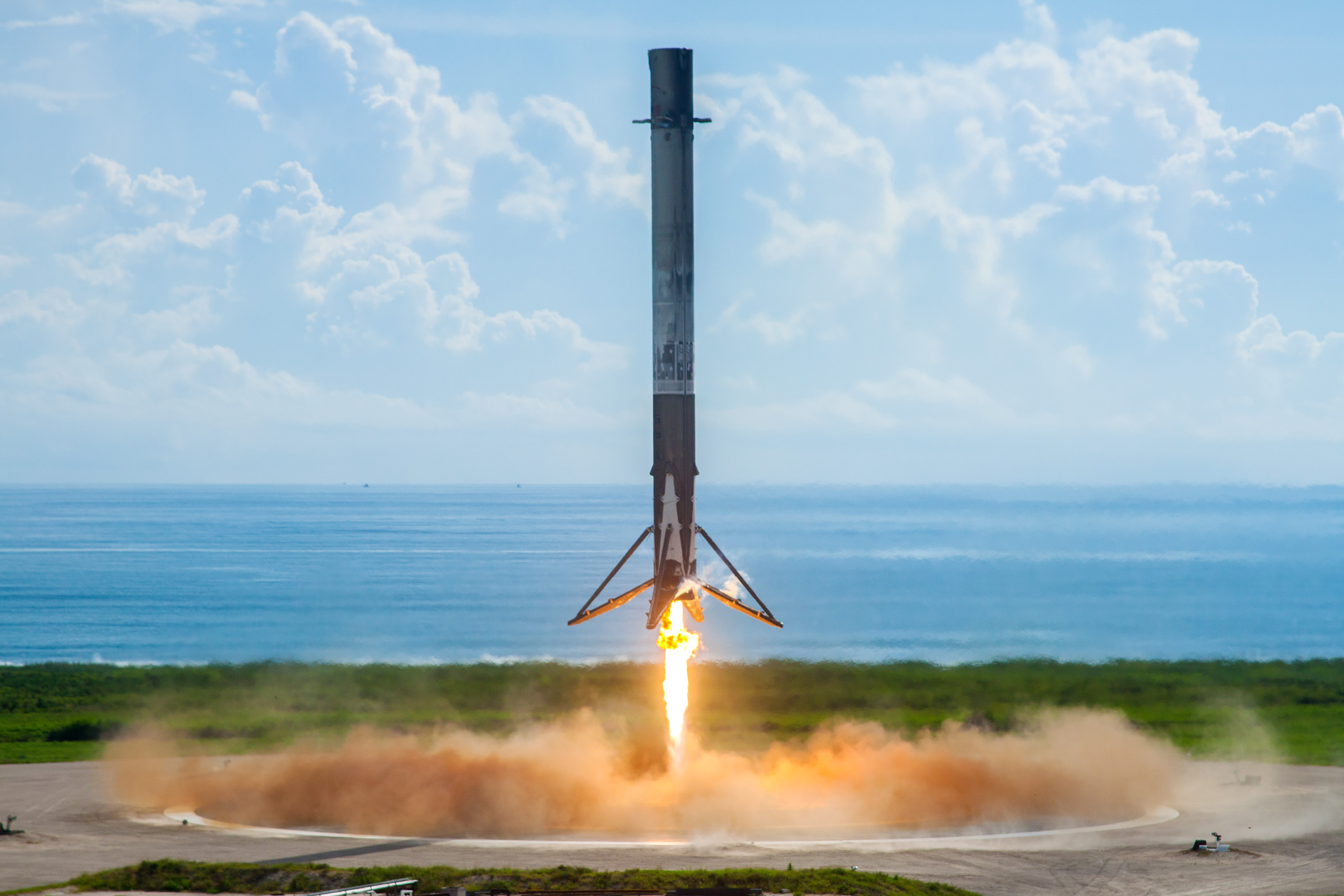
- SUCCESS
Boeing X-37B OTV-5
- Rocket: Falcon 9
- Launch pad: KSC LC 39A
- Launch date: September 7th 2017, 1:50 pm
- Notable because Boeing is the primary contractor of the X-37B, which has until now been launched by ULA, a SpaceX competitor and Boeing partnership. Second flight of the Falcon 9 Block 4 upgrade.
- Media:
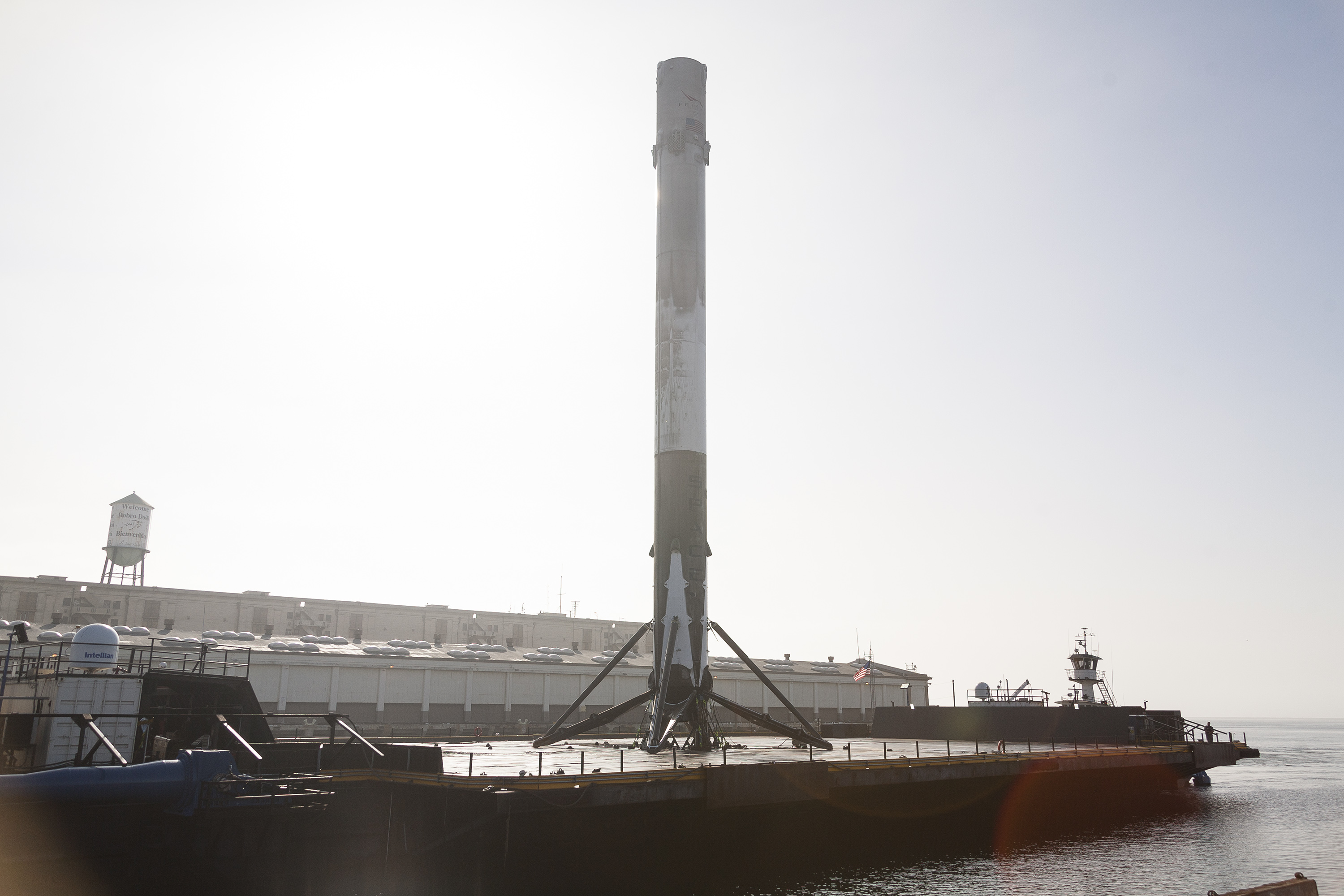
- SUCCESS
FormoSat-5
- Rocket: Falcon 9
- Launch pad: VAFB SLC 4E
- Launch date: August 24th 2017, 6:50 pm
- Formosat-5 is an Earth observation satellite of the Taiwanese space agency. The SHERPA space tug by Spaceflight Industries was removed from the cargo manifest of this mission. The satellite has a mass of only 475 kg.
- Media:
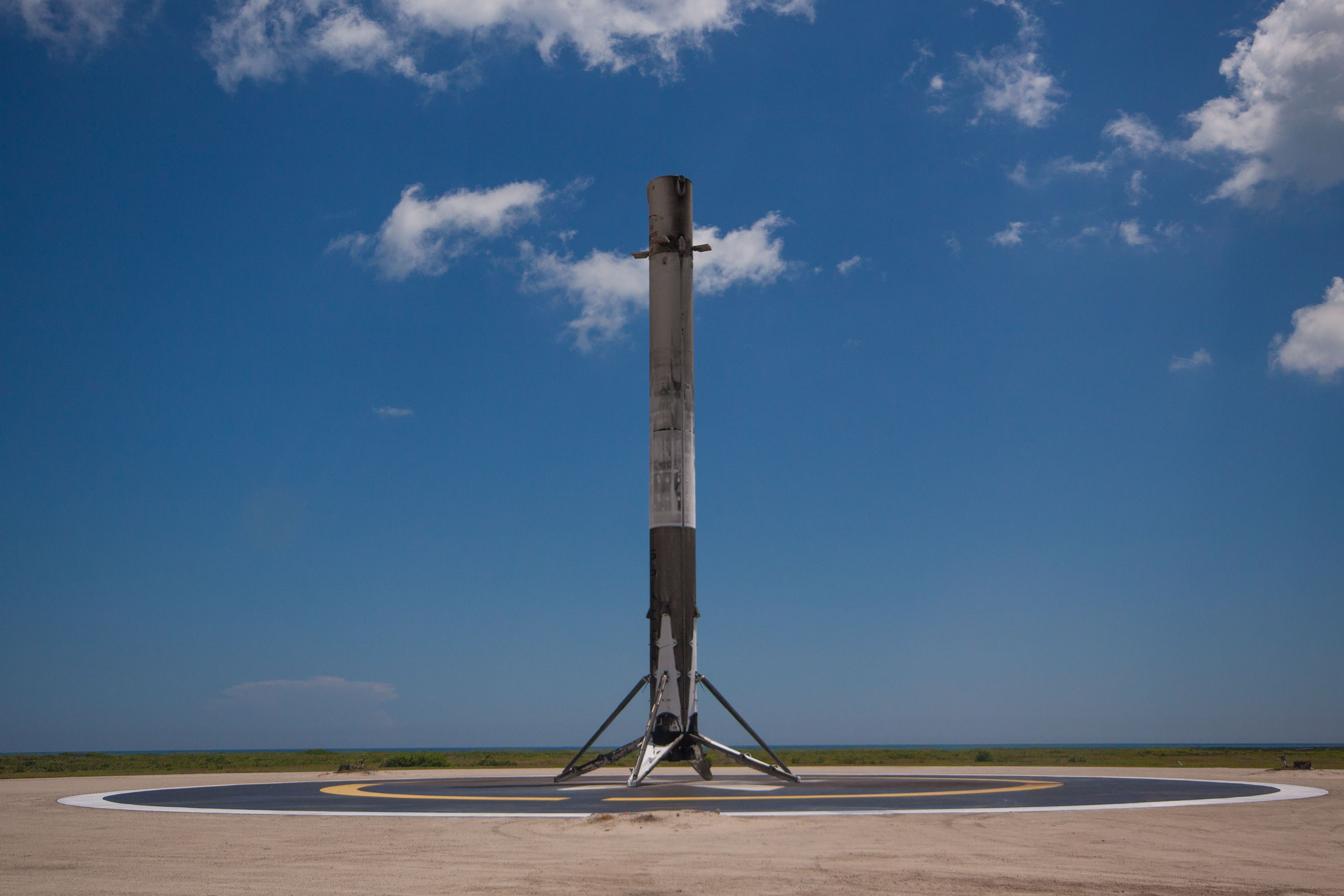
- SUCCESS
CRS-12
- Rocket: Falcon 9
- Launch pad: KSC LC 39A
- Launch date: August 14th 2017, 4:31 pm
- Dragon is expected to carry 2,349 kg (5,179 lb) of pressurized mass and 961 kg (2,119 lb) unpressurized. The external payload manifested for this flight is the CREAM cosmic-ray detector. First flight of the Falcon 9 Block 4 upgrade. Last flight of a newly-built Dragon capsule; further missions will use refurbished spacecraft.
- Media:
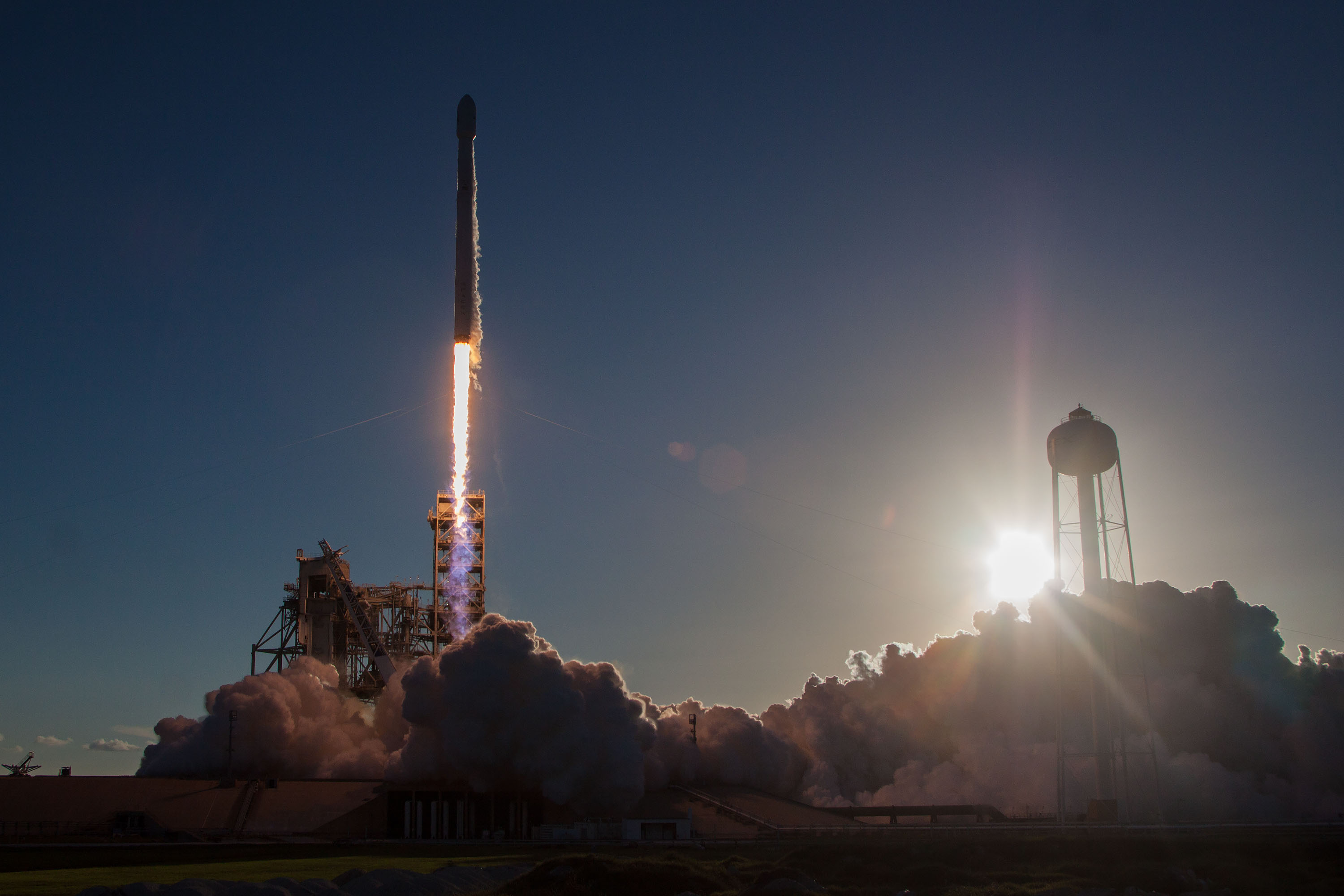
- SUCCESS
Intelsat 35e
- Rocket: Falcon 9
- Launch pad: KSC LC 39A
- Launch date: July 5th 2017, 11:35 pm
- Due to the constraints of sending a heavy satellite (~6,000 kg) to GTO, the rocket will fly in its expendable configuration and the first-stage booster will not be recovered.
- Media:
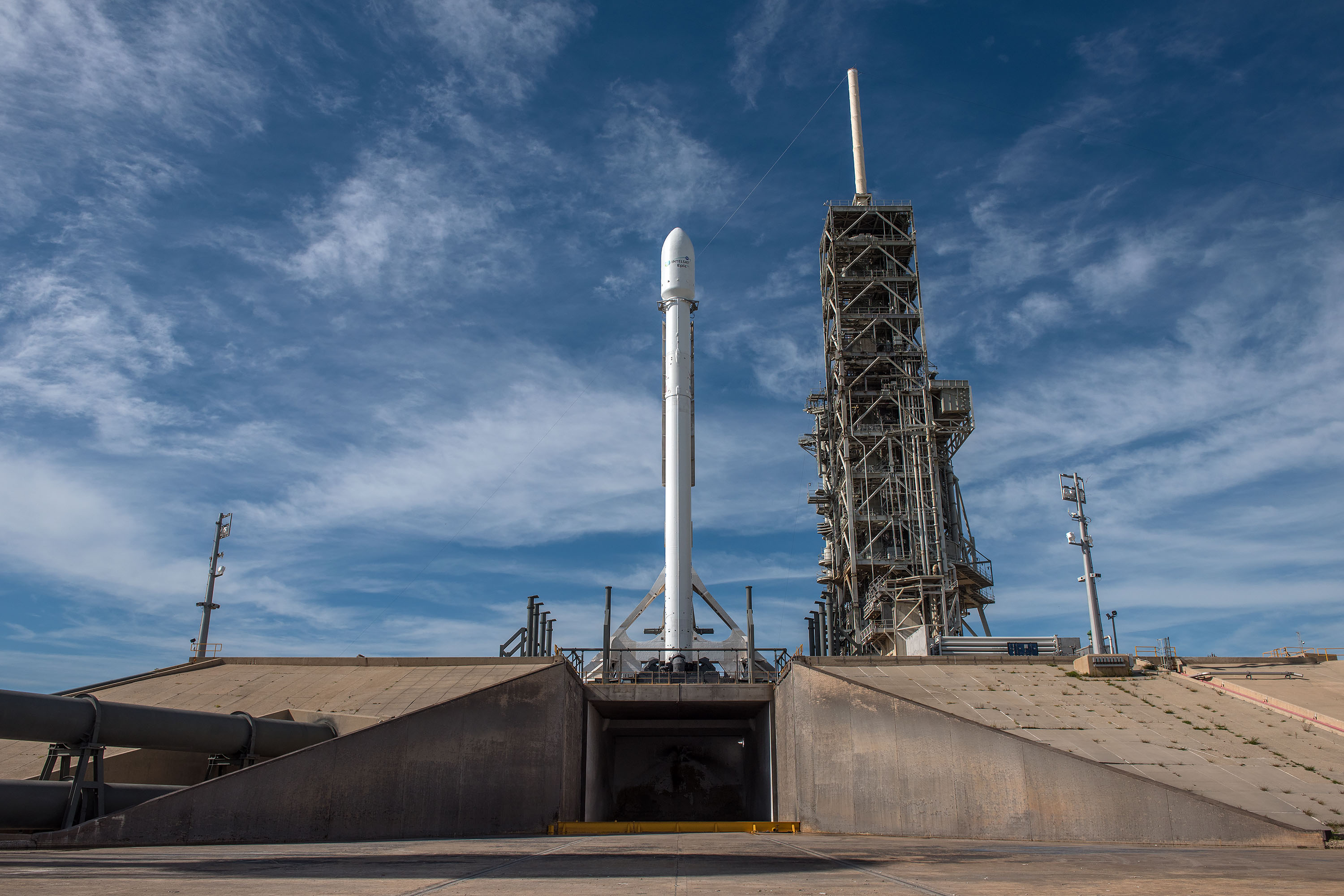
- SUCCESS
Iridium NEXT Mission 2
- Rocket: Falcon 9
- Launch pad: VAFB SLC 4E
- Launch date: June 25th 2017, 8:25 pm
- First flight with titanium grid fins to improve control authority and better cope with heat during re-entry.
- Media:
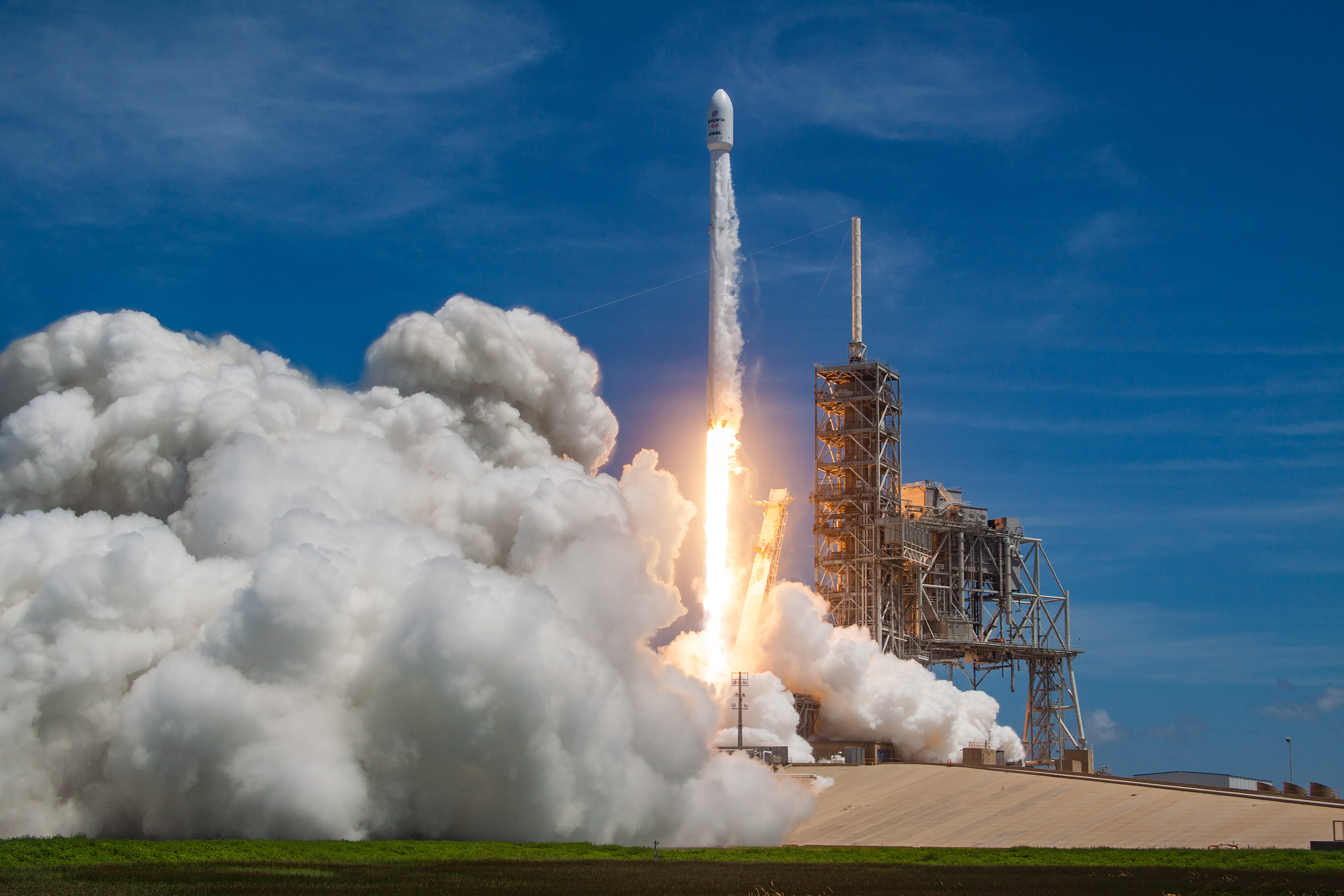
- SUCCESS
BulgariaSat-1
- Rocket: Falcon 9
- Launch pad: KSC LC 39A
- Launch date: June 23rd 2017, 7:10 pm
- Second time a booster will be reused: Second flight of B1029 after the Iridium mission of January 2017. The satellite will be the first commercial Bulgarian-owned communications satellite and it will provide television broadcasts and other communications services over southeast Europe.
- Media:
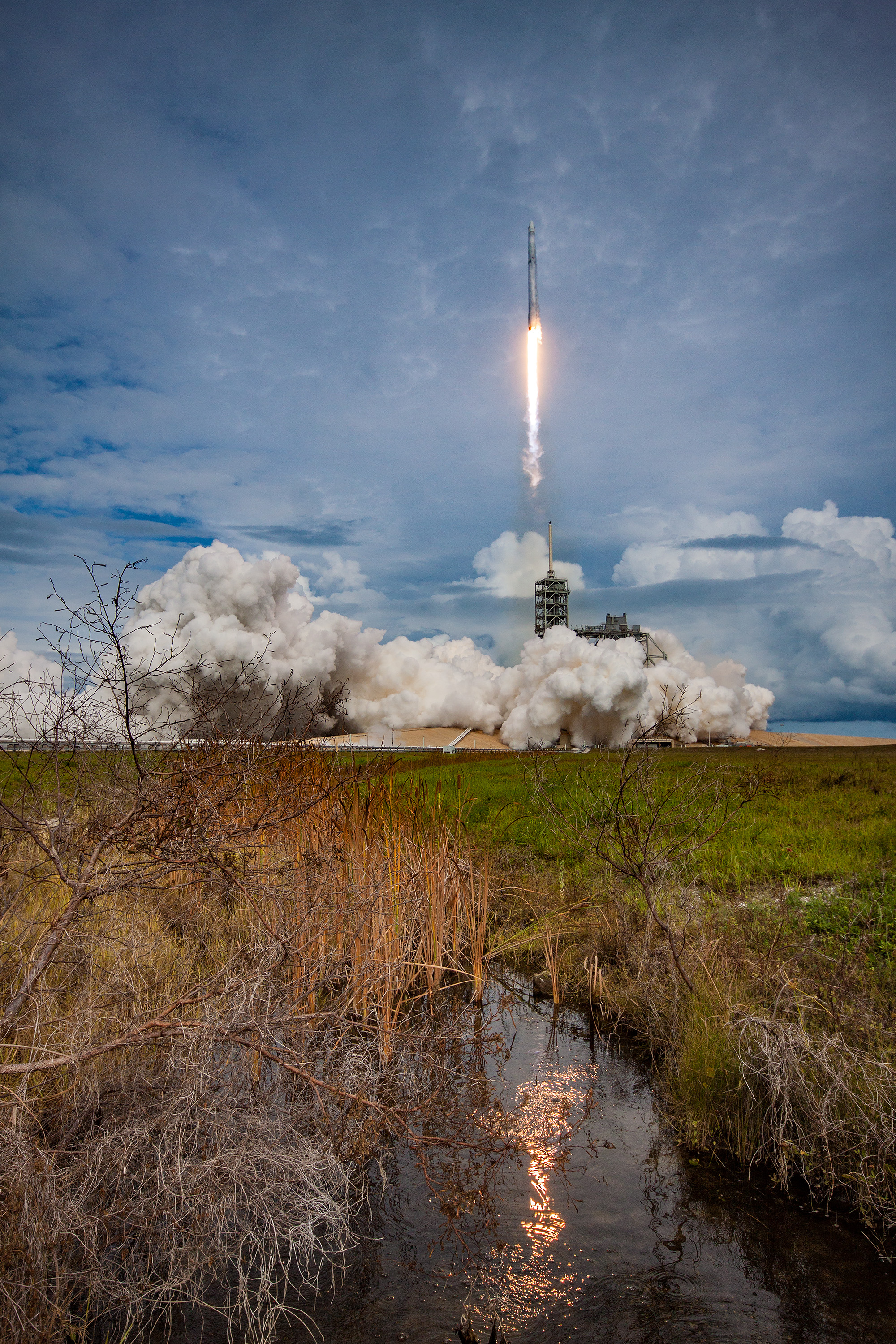
- SUCCESS
CRS-11
- Rocket: Falcon 9
- Launch pad: KSC LC 39A
- Launch date: June 3rd 2017, 9:07 pm
- This mission delivered the Neutron Star Interior Composition Explorer (NICER) to the ISS, along with the MUSES Earth imaging platform and ROSA solar array. For the first time, this mission launched a refurbished Dragon capsule, serial number C106 which first flew in September 2014 on the CRS-4 mission. Originally scheduled to launch on June 1, but was scrubbed due to inclement weather.
- Media:
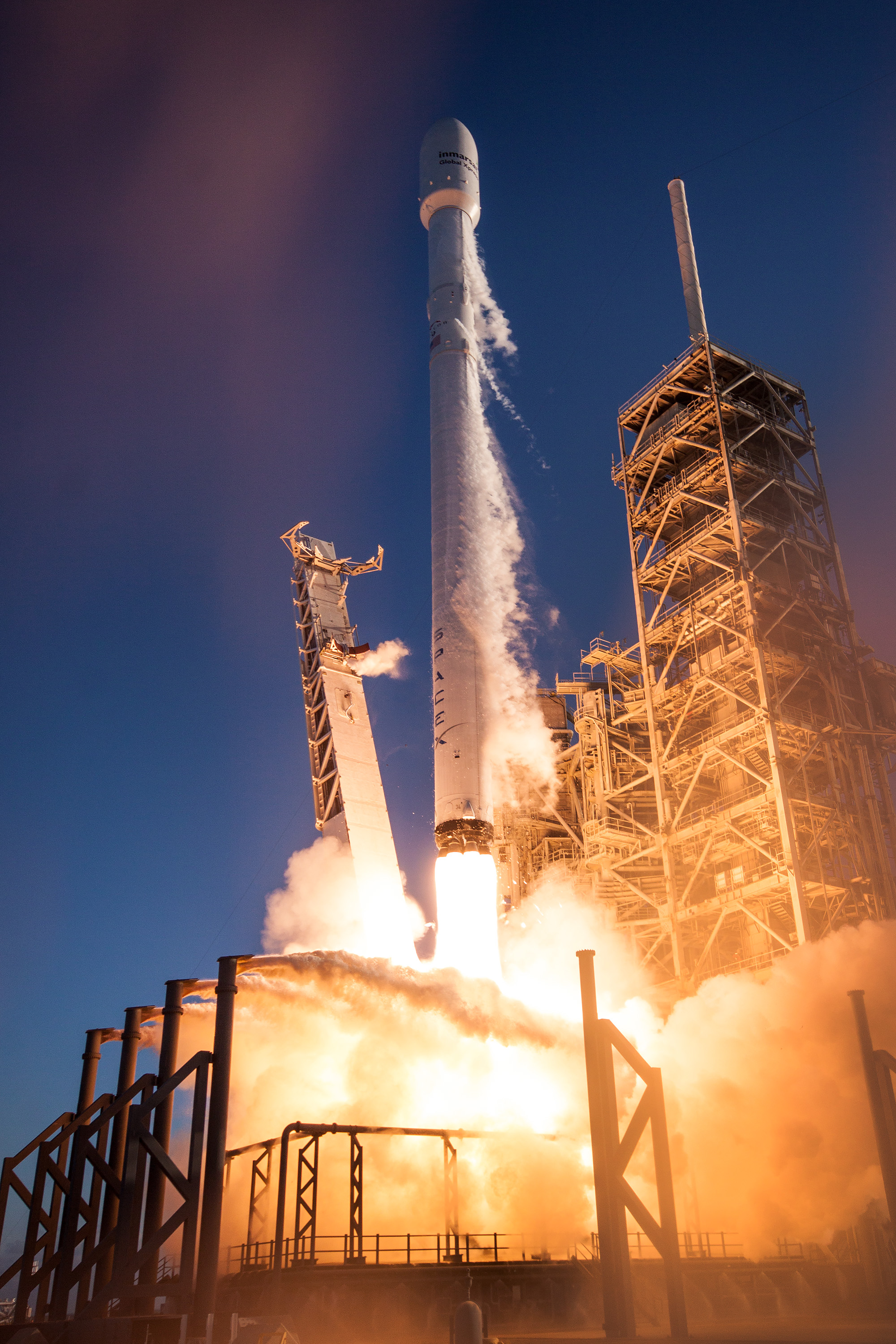
- SUCCESS
Inmarsat-5 F4
- Rocket: Falcon 9
- Launch pad: KSC LC 39A
- Launch date: May 15th 2017, 11:21 pm
- At 6,070 kg this was the heaviest payload launched to GTO by a Falcon 9 rocket. The launch was originally scheduled for the Falcon Heavy, but performance improvements allowed the mission to be carried out by an expendable Falcon 9 instead.
- Media:

- SUCCESS
NROL-76
- Rocket: Falcon 9
- Launch pad: KSC LC 39A
- Launch date: May 1st 2017, 11:15 am
- First launch under SpaceX's certification for national security space missions, which allows SpaceX to contract launch services for classified payloads. Second-stage speed and altitude telemetry were omitted from the launch webcast, which displayed first-stage telemetry instead, with continuous tracking of the booster from liftoff to landing for the first time.
- Media:
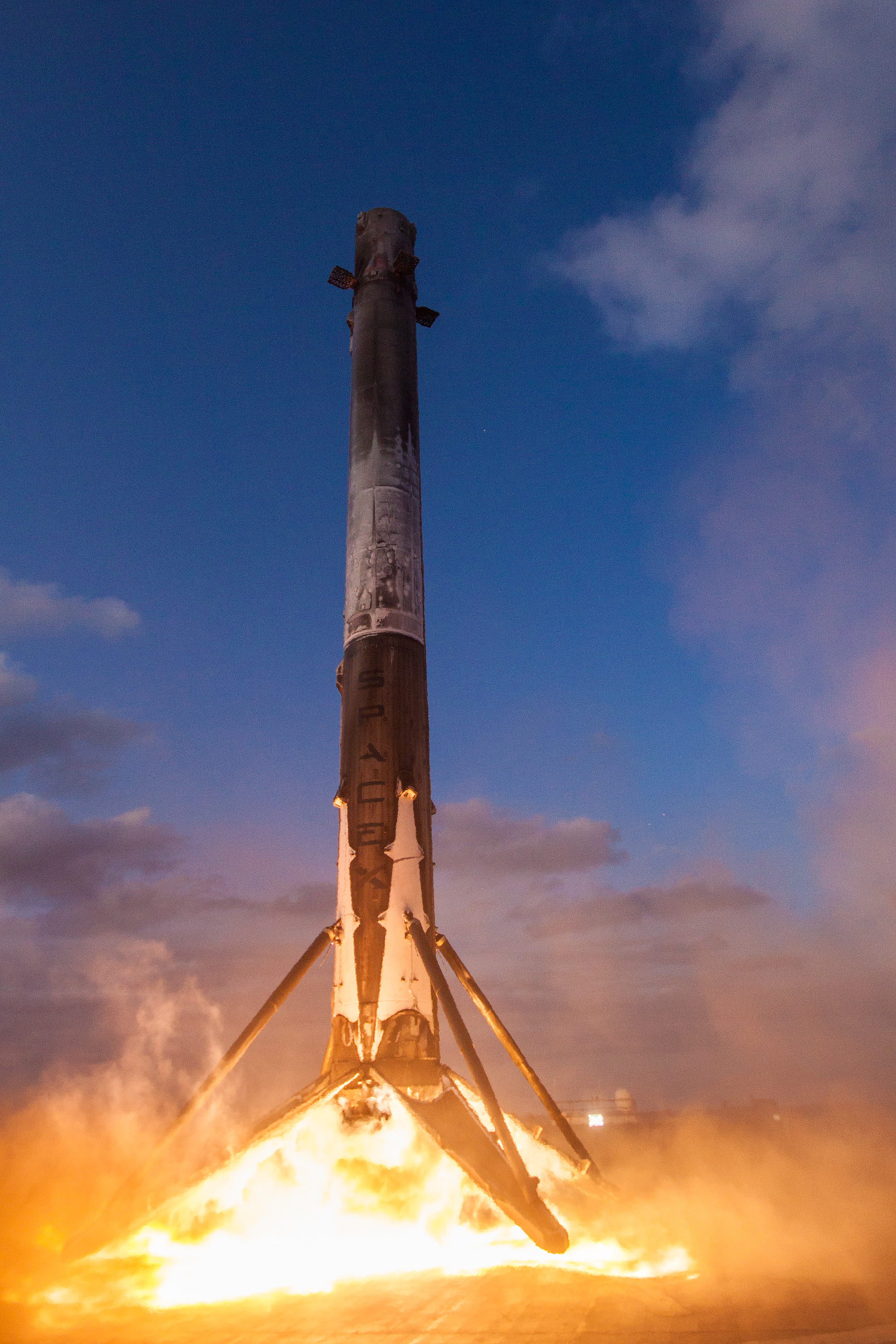
- SUCCESS
SES-10
- Rocket: Falcon 9
- Launch pad: KSC LC 39A
- Launch date: March 30th 2017, 10:27 pm
- First payload to fly on a reused first stage, B1021, previously launched with CRS-8, which also landed a second time. In what is also a first, the payload fairing remained intact after a successful splashdown achieved with thrusters and a steerable parachute.
- Media:
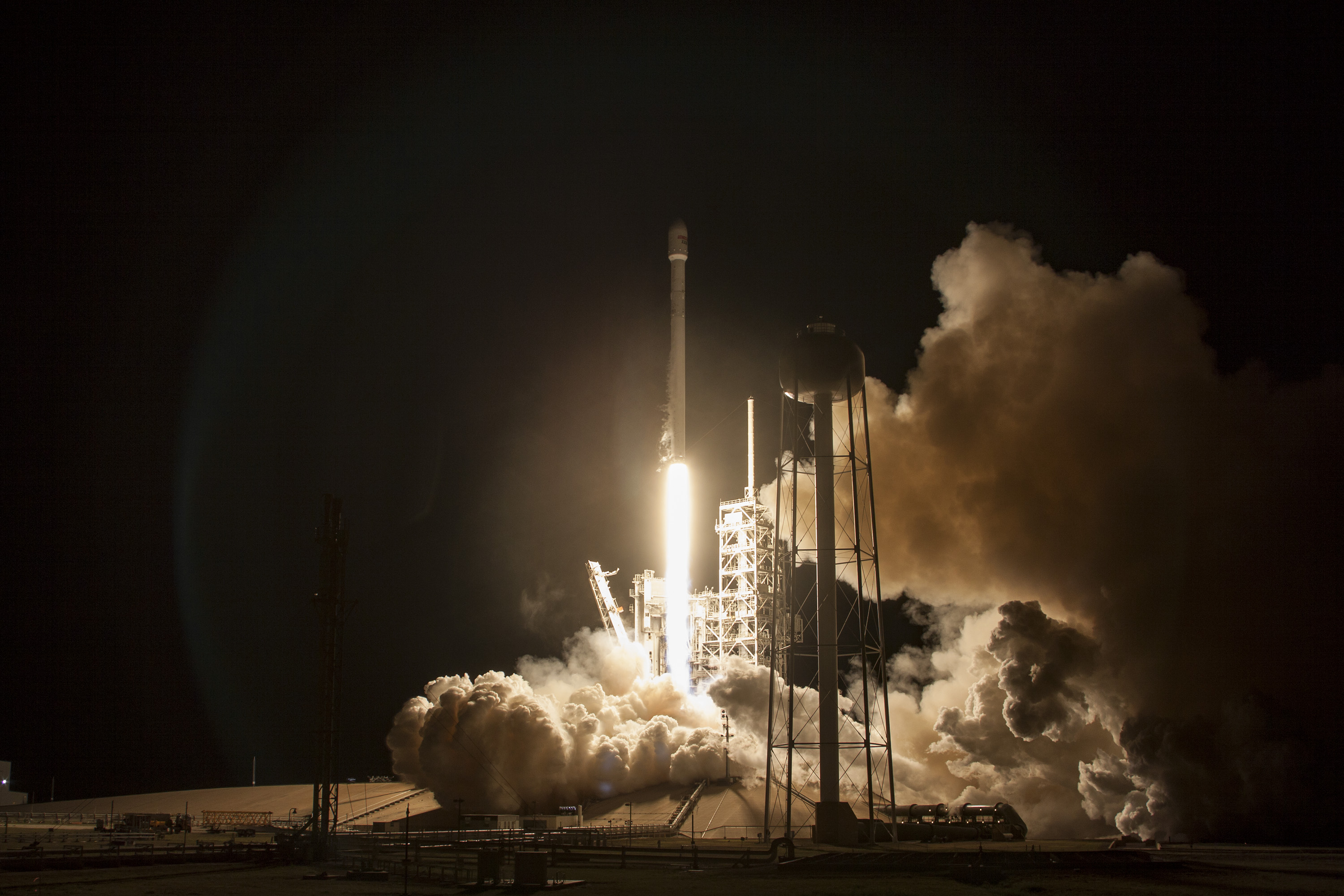
- SUCCESS
EchoStar 23
- Rocket: Falcon 9
- Launch pad: KSC LC 39A
- Launch date: March 16th 2017, 6:00 am
- Communications satellite for EchoStar Corp. EchoStar XXIII, based on a spare platform from the cancelled CMBStar 1 satellite program, will provide direct-to-home television broadcast services over Brazil. There was no attempt at a first-stage recovery so this rocket did not have landing legs or grid fins.
- Media:
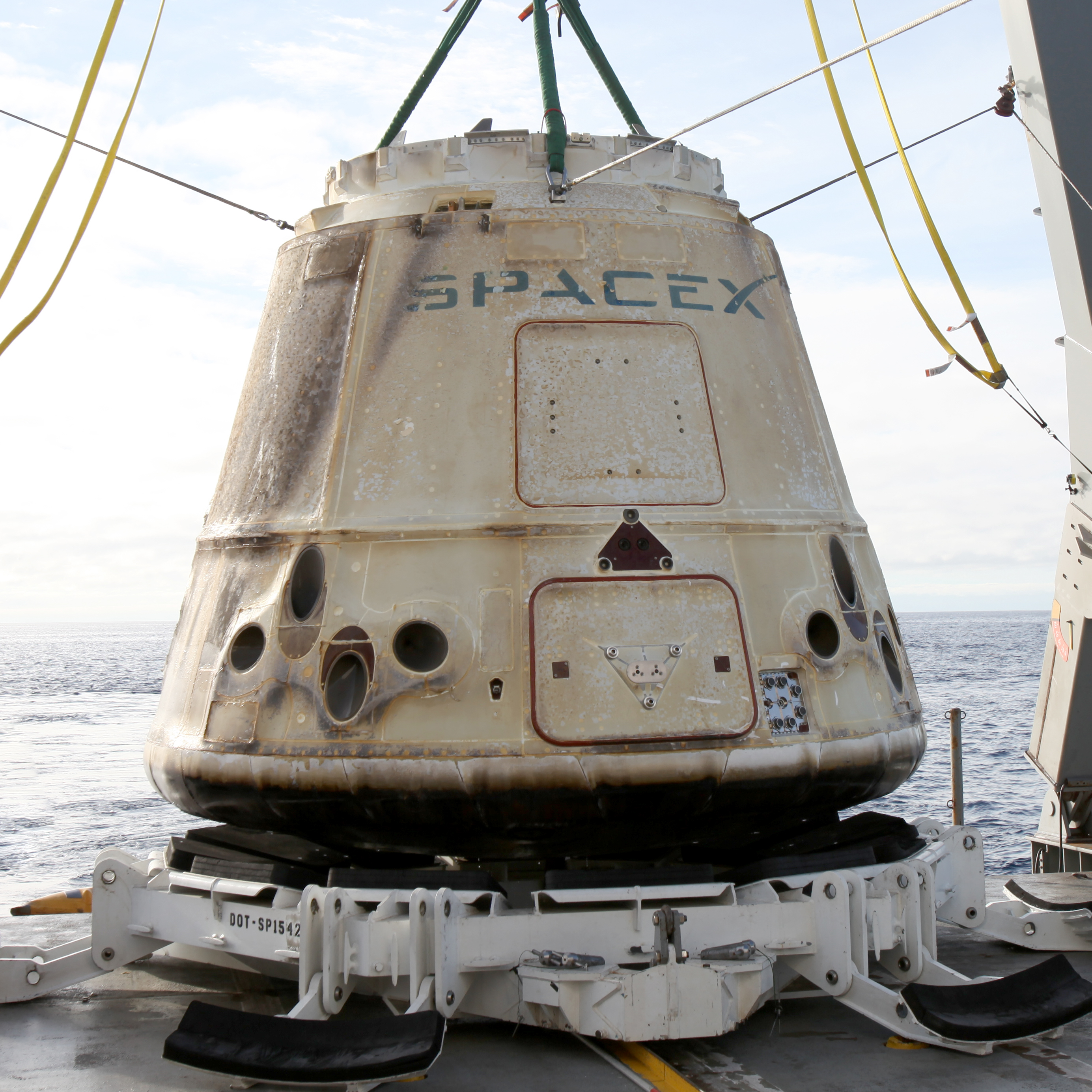
- SUCCESS
CRS-10
- Rocket: Falcon 9
- Launch pad: KSC LC 39A
- Launch date: February 19th 2017, 2:39 pm
- First Falcon 9 flight from the historic LC-39A launchpad at Kennedy Space Center, carrying supplies and materials to support dozens of science and research investigations scheduled during ISS Expeditions 50 and 51. The first stage returned to launch site and landed at LZ-1.
- Media:
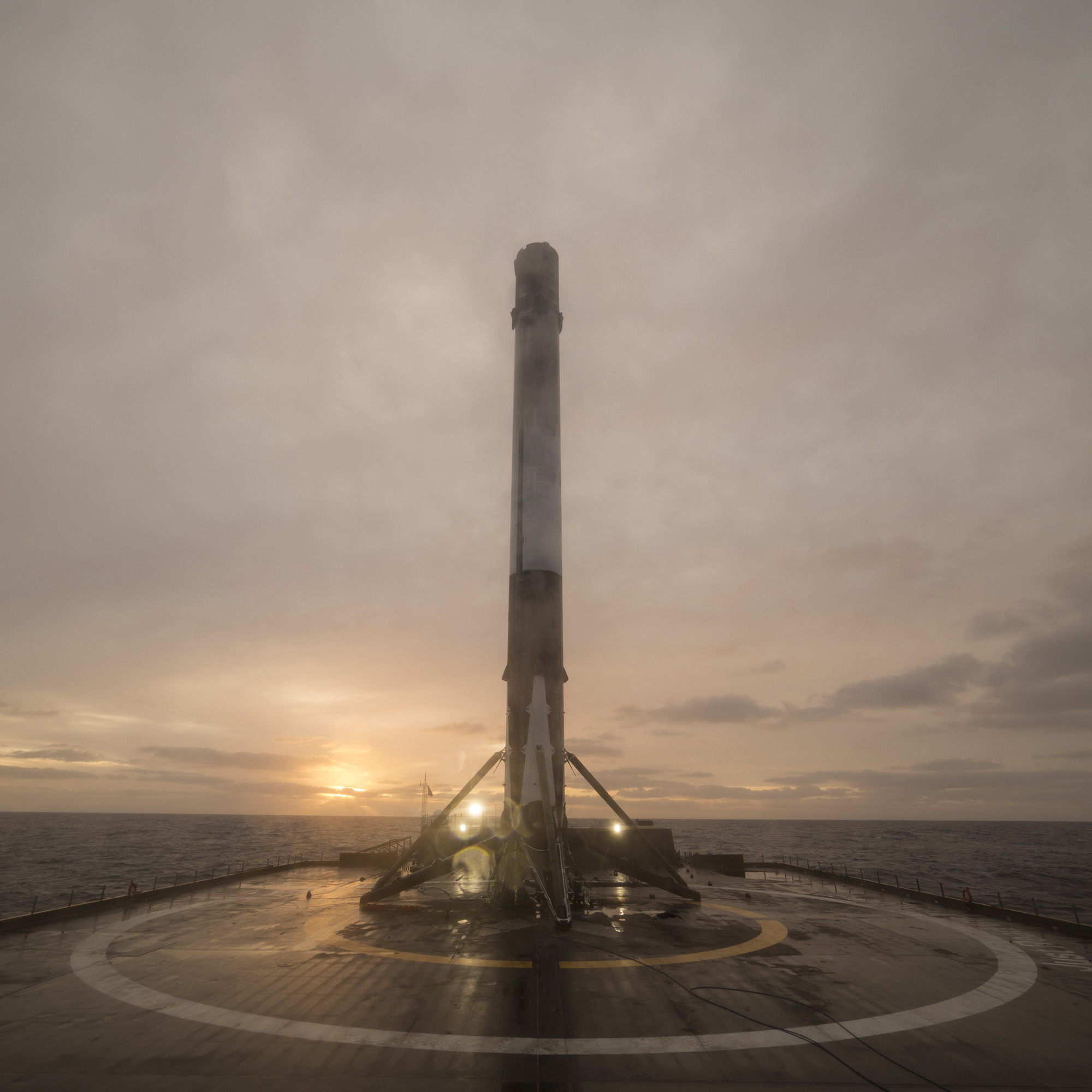
- SUCCESS
Iridium NEXT Mission 1
- Rocket: Falcon 9
- Launch pad: VAFB SLC 4E
- Launch date: January 14th 2017, 5:54 pm
- Return-to-flight mission after the loss of Amos-6 in September 2016. Iridium NEXT will replace the original Iridium constellation, launched in the late 1990s. Each Falcon mission will carry 10 satellites, with a goal to complete deployment of the 66 plus 9 spare satellite constellation by mid 2018. The first two Iridium qualification units were supposed to ride a Dnepr rocket in April 2016 but were delayed, so Iridium decided to qualify the first batch of 10 satellites instead.
- Media:

- FAILURE
Amos-6
- Rocket: Falcon 9
- Launch pad: CCSFS SLC 40
- Launch date: September 1st 2016, 1:07 pm
- The rocket and Amos-6 payload were lost in a launch pad explosion on September 1, 2016 during propellant fill prior to a static fire test. The pad was clear of personnel and there were no injuries.
- Media:
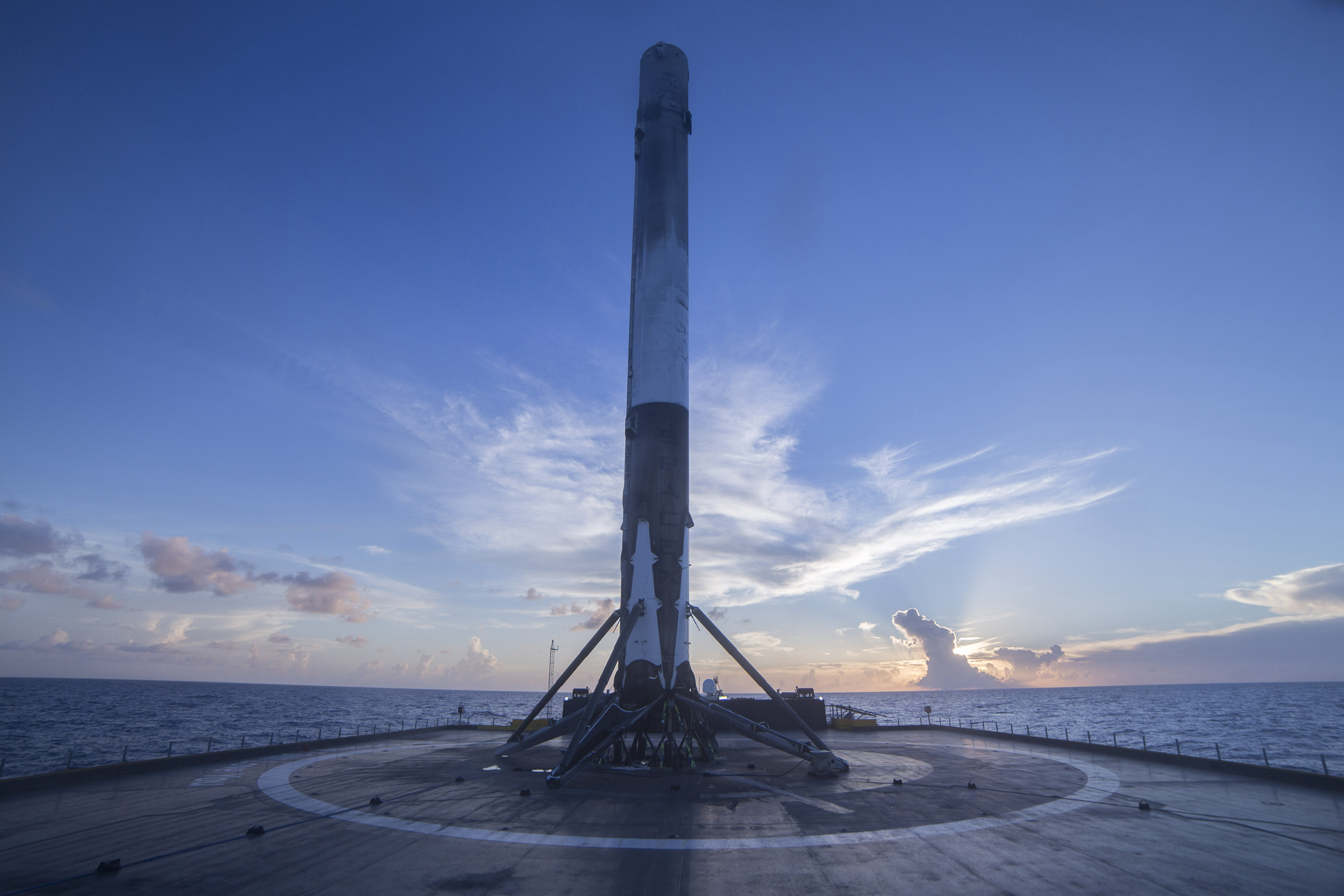
- SUCCESS
JCSAT-16
- Rocket: Falcon 9
- Launch pad: CCSFS SLC 40
- Launch date: August 14th 2016, 5:26 am
- First attempt to touch down from a ballistic trajectory using a single-engine landing burn. All previous landings from a ballistic trajectory had fired three engines on the landing-burn, which provided more braking force, but subjected the vehicle to greater structural stresses. The single-engine landing burn takes more time and fuel, but puts less stress on the vehicle.
- Media:
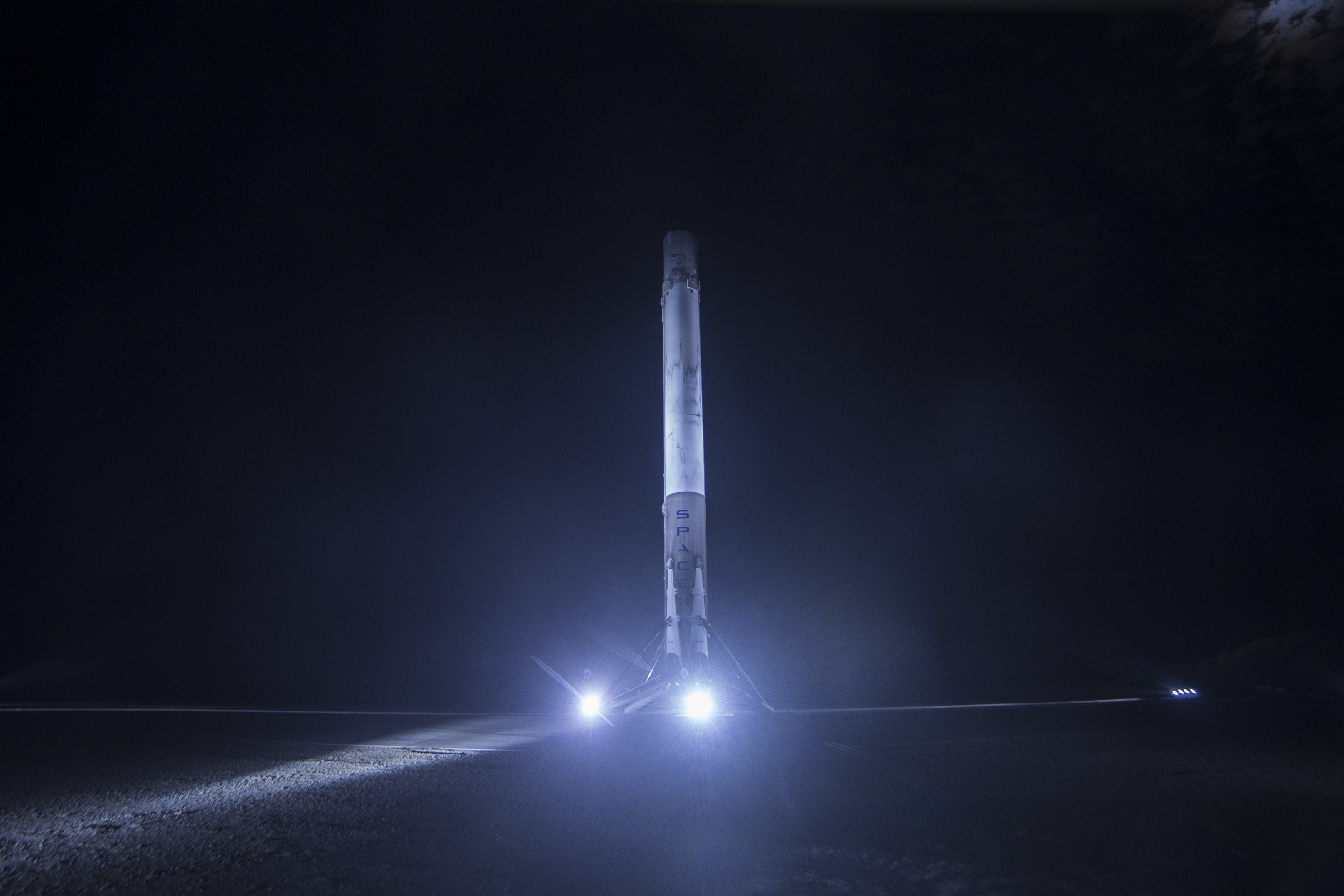
- SUCCESS
CRS-9
- Rocket: Falcon 9
- Launch pad: CCSFS SLC 40
- Launch date: July 18th 2016, 4:45 am
- Among other cargo, an International Docking Adapter (IDA-2) was carried to the ISS. This mission had a successful first-stage landing at Cape Canaveral.*Including the reusable Dragon Capsule, total payload to orbit was 6457 kg.
- Media:

- SUCCESS
ABS-2A / Eutelsat 117W B
- Rocket: Falcon 9
- Launch pad: CCSFS SLC 40
- Launch date: June 15th 2016, 2:29 pm
- One year after pioneering this technique on flight 16, Falcon again launched two Boeing 702SP gridded ion thruster satellites in a dual-stack configuration, with the two customers sharing the rocket and mission costs. First stage landing attempt on drone ship failed on landing due to low thrust on one of the three landing engines.
- Media:
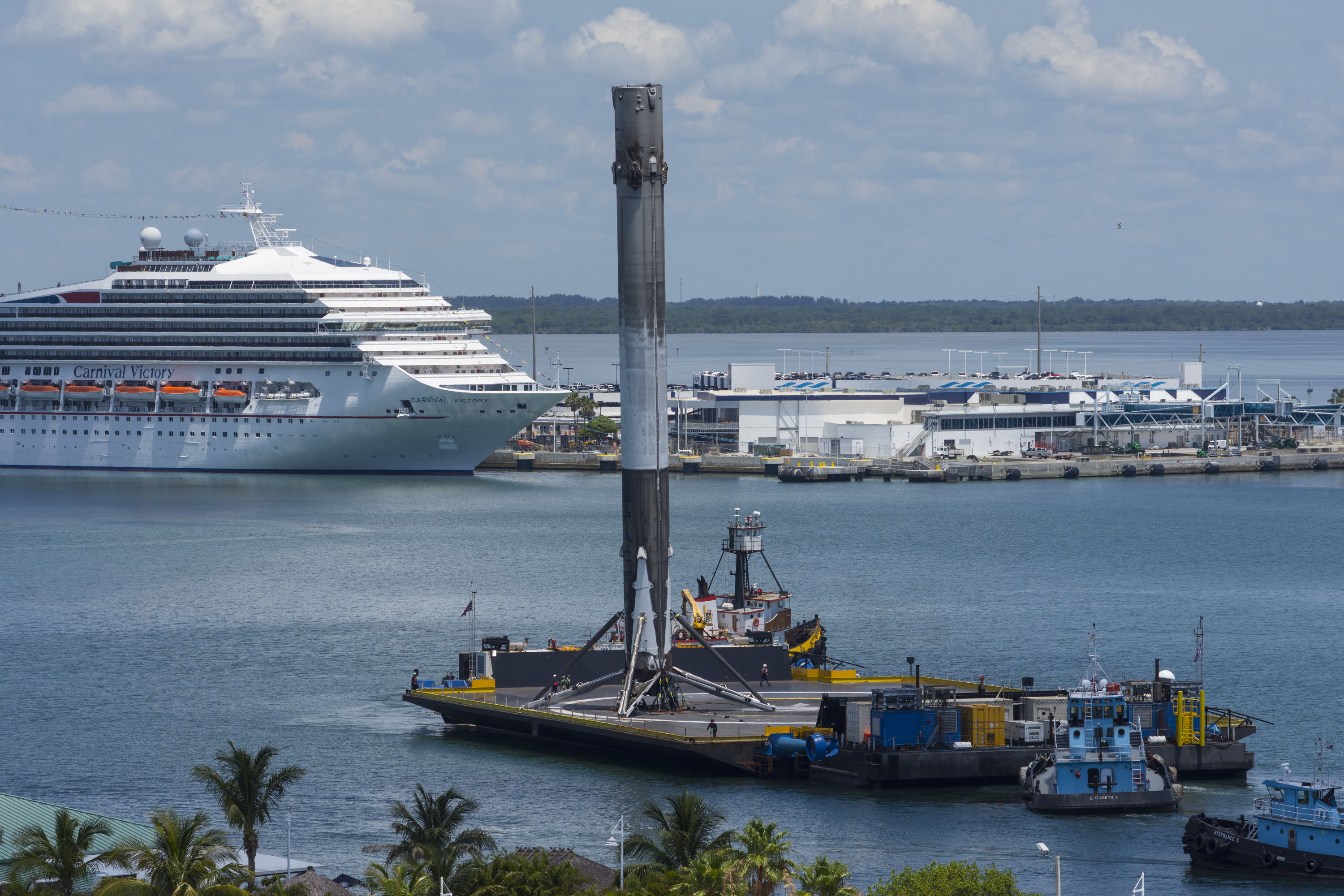
- SUCCESS
Thaicom 8
- Rocket: Falcon 9
- Launch pad: CCSFS SLC 40
- Launch date: May 27th 2016, 9:39 pm
- Manufactured by Orbital ATK, the 3,100-kilogram (6,800 lb) Thaicom 8 communications satellite will serve Thailand, India and Africa from the 78.5° East geostationary location. It is equipped with 24 active Ku-band transponders.
- Media:
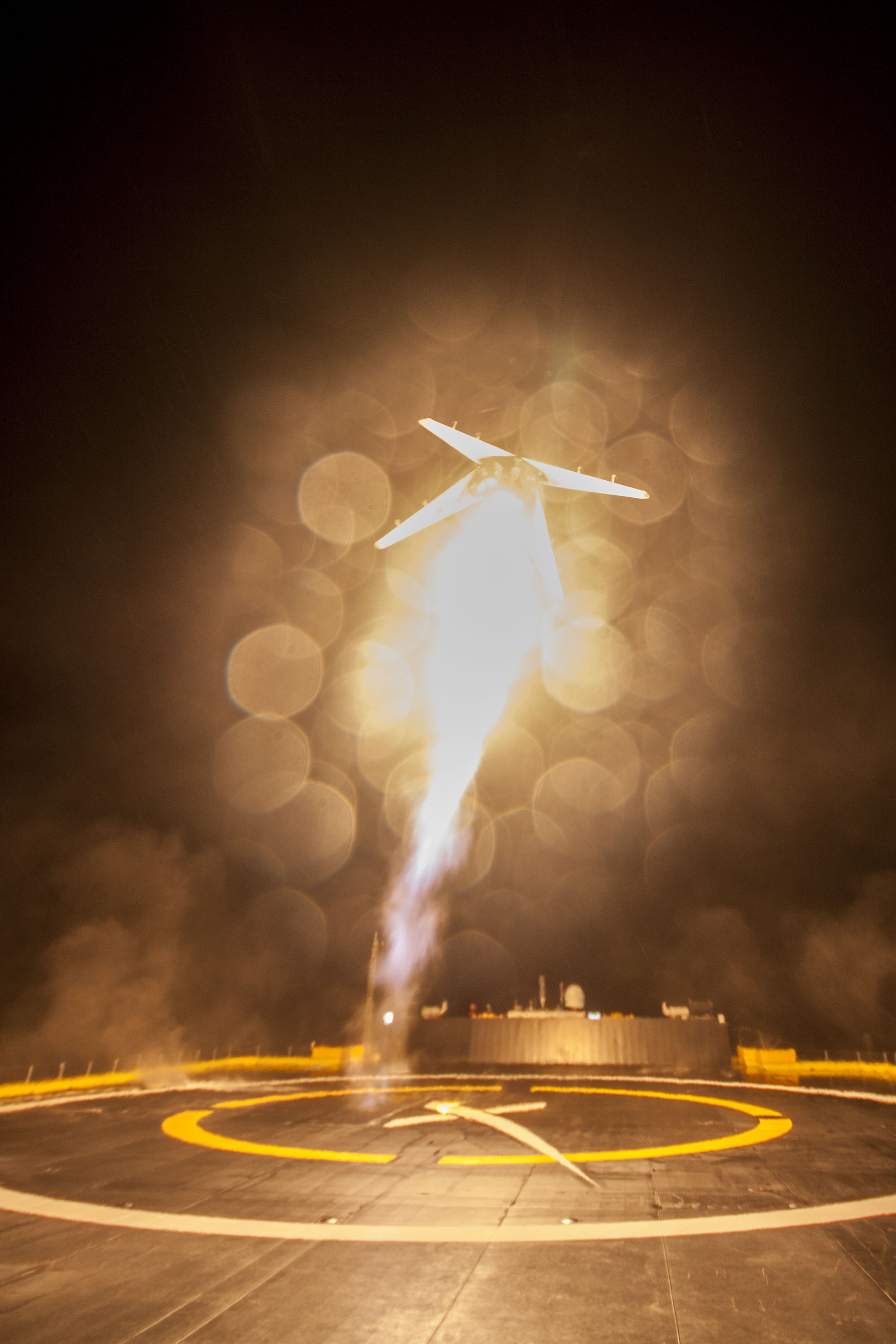
- SUCCESS
JCSAT-2B
- Rocket: Falcon 9
- Launch pad: CCSFS SLC 40
- Launch date: May 6th 2016, 5:21 am
- Launched the JCSAT 14 communications satellite for Tokyo-based SKY Perfect JSAT Corp. JCSAT 14 will support data networks, television broadcasters and mobile communications users in Japan, East Asia, Russia, Oceania, Hawaii and other Pacific islands. This was the first time a booster successfully landed after a GTO mission.
- Media:
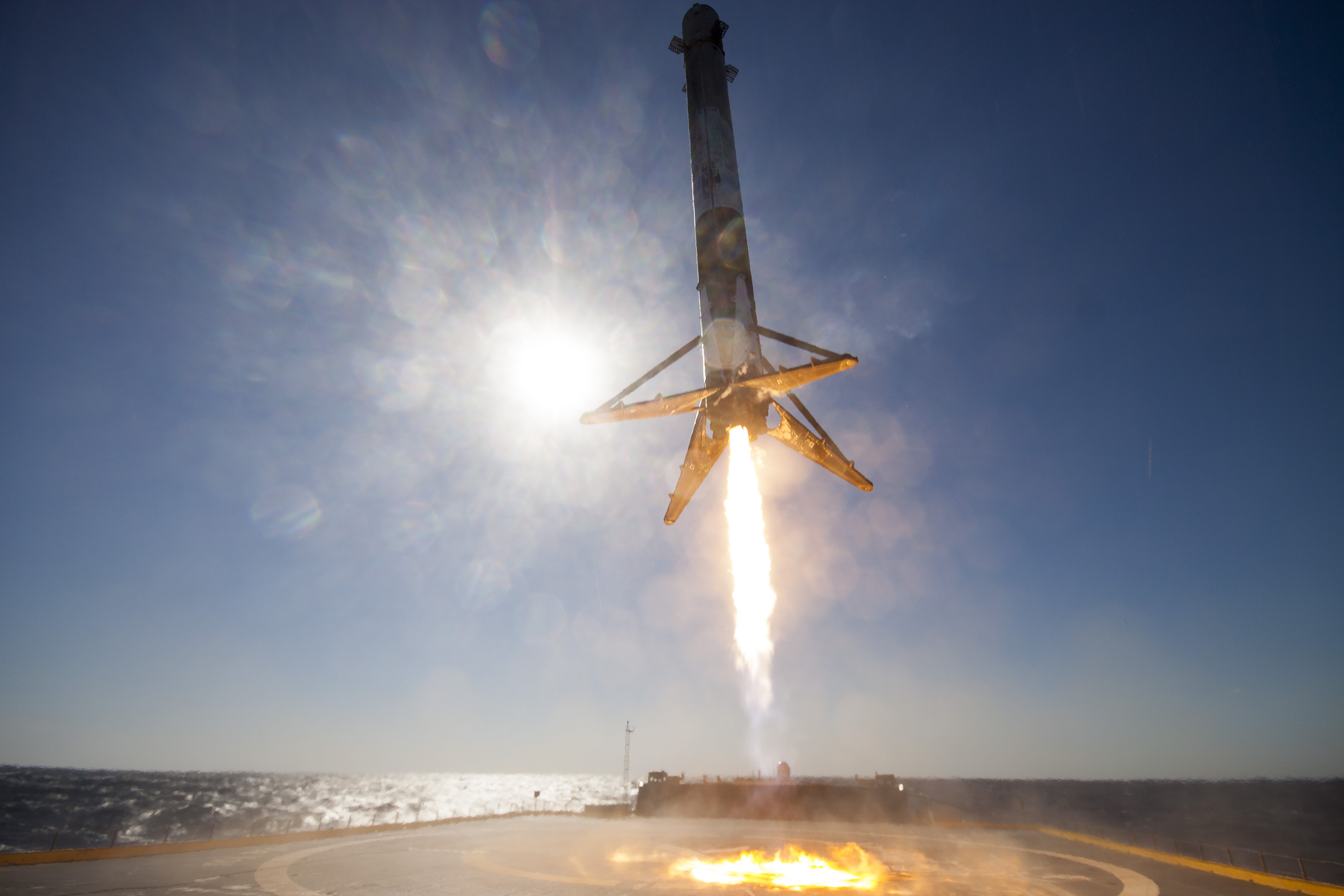
- SUCCESS
CRS-8
- Rocket: Falcon 9
- Launch pad: CCSFS SLC 40
- Launch date: April 8th 2016, 8:43 pm
- Dragon carried over 1500 kg of supplies and delivered (stowed in its trunk) the inflatable Bigelow Expandable Activity Module (BEAM) to the ISS for two years of in-orbit tests. The rocket's first stage landed smoothly on SpaceX's autonomous spaceport drone ship 9 minutes after liftoff, making this the first ever successful landing of a rocket booster on a ship at sea as part of an orbital launch. The first stage B1021 was later also the first orbital booster to be used again, when launching SES-10 on March 30, 2017.
- Media:
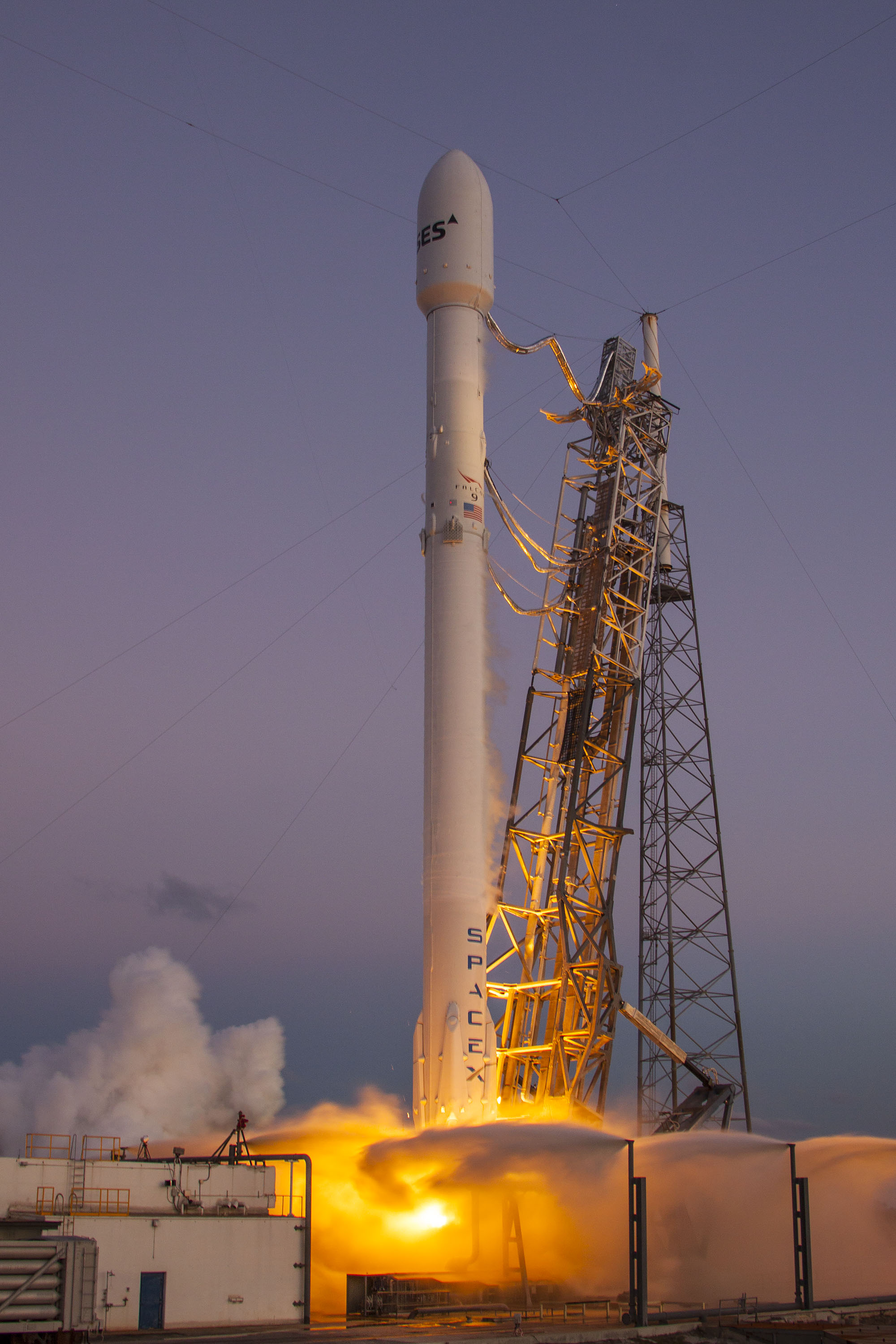
- SUCCESS
SES-9
- Rocket: Falcon 9
- Launch pad: CCSFS SLC 40
- Launch date: March 4th 2016, 11:35 pm
- Second launch of the enhanced Falcon 9 Full Thrust launch vehicle. Following the launch, SpaceX attempted an experimental landing test to a drone ship, although a successful landing was not expected because launch mass exceeded previously indicated limit for a GTO there was little fuel left. As predicted, booster recovery failed: the spent first stage "landed hard", but the controlled-descent, atmospheric re-entry and navigation to the drone ship were successful and returned significant test data on bringing back high-energy Falcon 9s.
- Media:
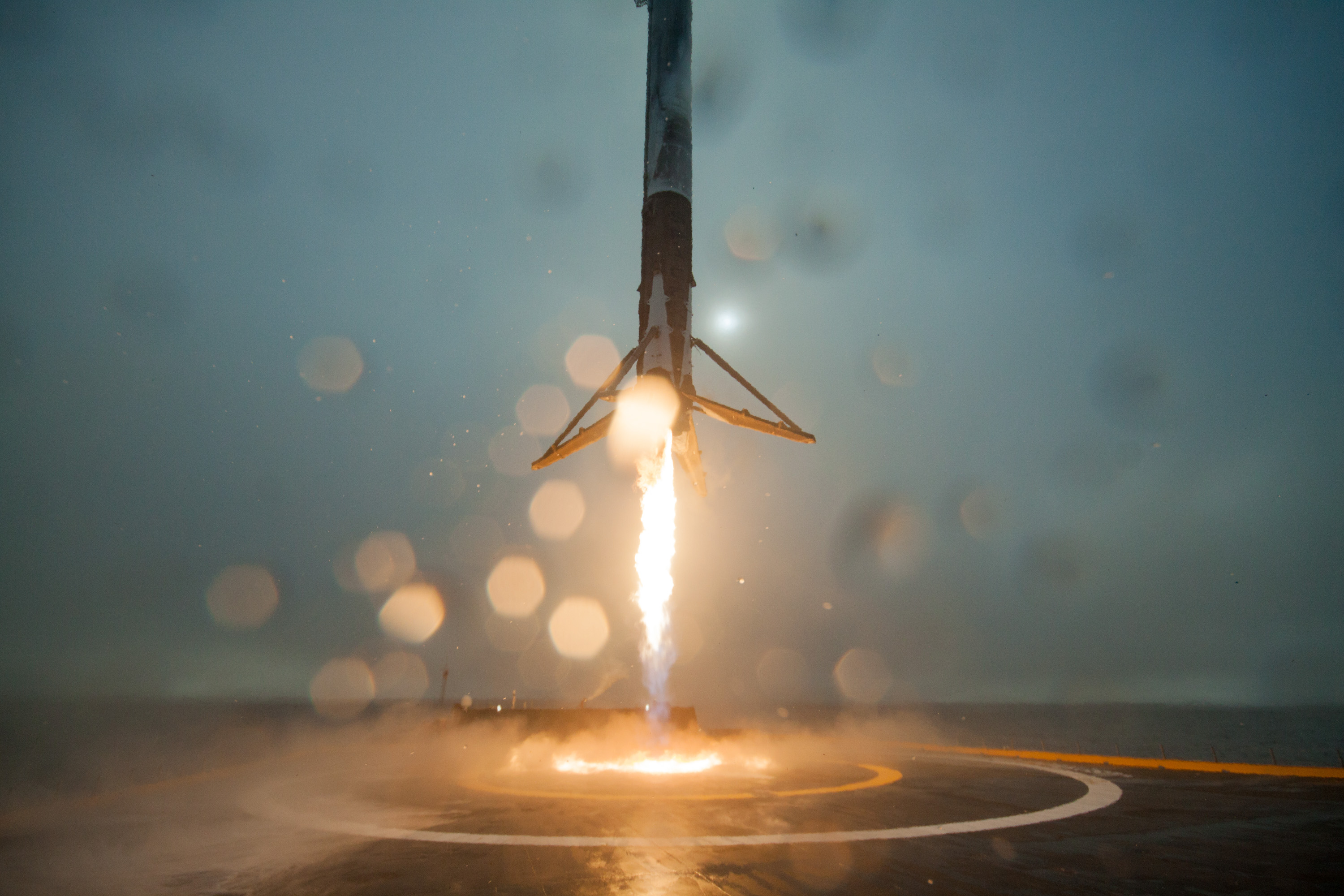
- SUCCESS
Jason 3
- Rocket: Falcon 9
- Launch pad: VAFB SLC 4E
- Launch date: January 17th 2016, 3:42 pm
- First launch of NASA and NOAA joint science mission under the NLS II launch contract (not related to NASA CRS or USAF OSP3 contracts). Last launch of the original Falcon 9 v1.1 launch vehicle. The Jason-3 satellite was successfully deployed to target orbit. SpaceX again attempted a recovery of the first stage booster by landing on an autonomous drone ship; this time located in the Pacific Ocean. The first stage did achieve a soft-landing on the ship, but a lockout on one of the landing legs failed to latch, so that the booster fell over and exploded.
- Media:
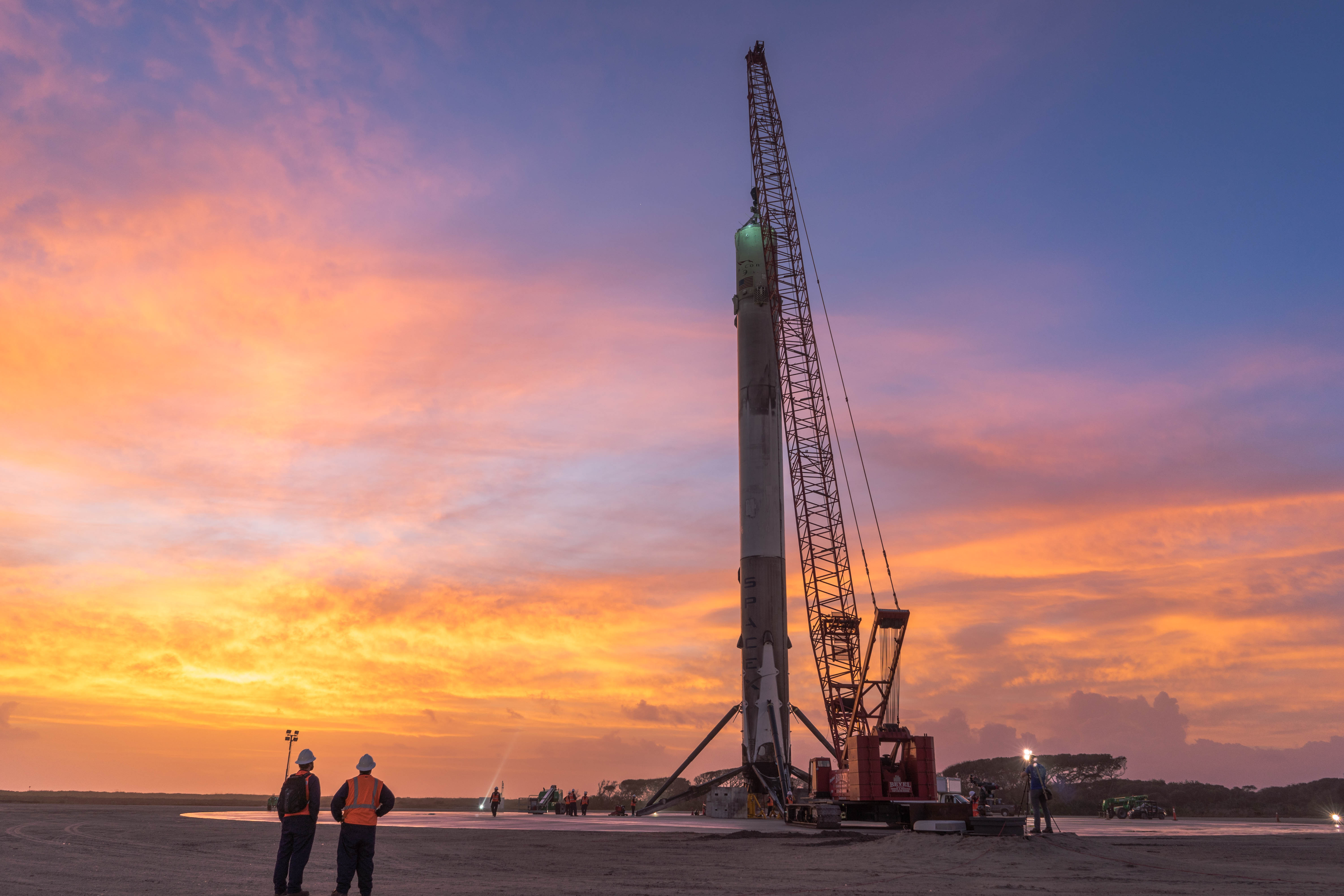
- SUCCESS
OG-2 Mission 2
- Rocket: Falcon 9
- Launch pad: CCSFS SLC 40
- Launch date: December 22nd 2015, 1:29 am
- Total payload mass was 2,034 kg (4,484 lb) : 11 satellites weighing 172 kg each, plus a 142-kg mass simulator. This was the first launch of the upgraded v1.1 variant (later called Falcon 9 Full Thrust), with a 30 percent power increase. Orbcomm had originally agreed to be the third flight of the enhanced-thrust rocket, but the change to the maiden flight position was announced in October 2015. SpaceX received a permit from the FAA to land the booster on solid ground at Cape Canaveral, and succeeded.
- Media:
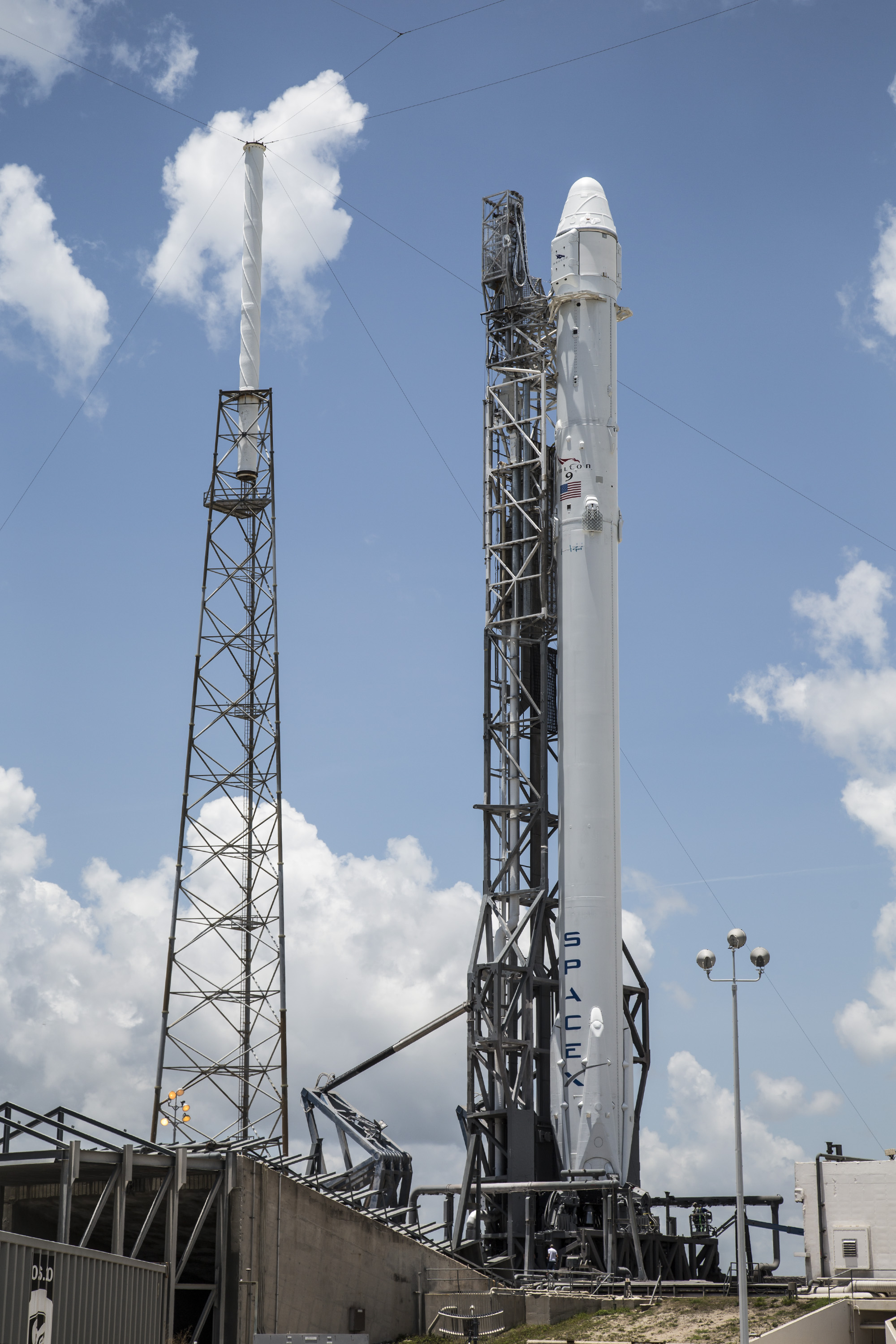
- FAILURE
CRS-7
- Rocket: Falcon 9
- Launch pad: CCSFS SLC 40
- Launch date: June 28th 2015, 2:21 pm
- Launch performance was nominal until an overpressure incident in the second-stage LOX tank, leading to vehicle breakup at T+150 seconds. The Dragon capsule survived the explosion but was lost upon splashdown because its software did not contain provisions for parachute deployment on launch vehicle failure.
- Media:
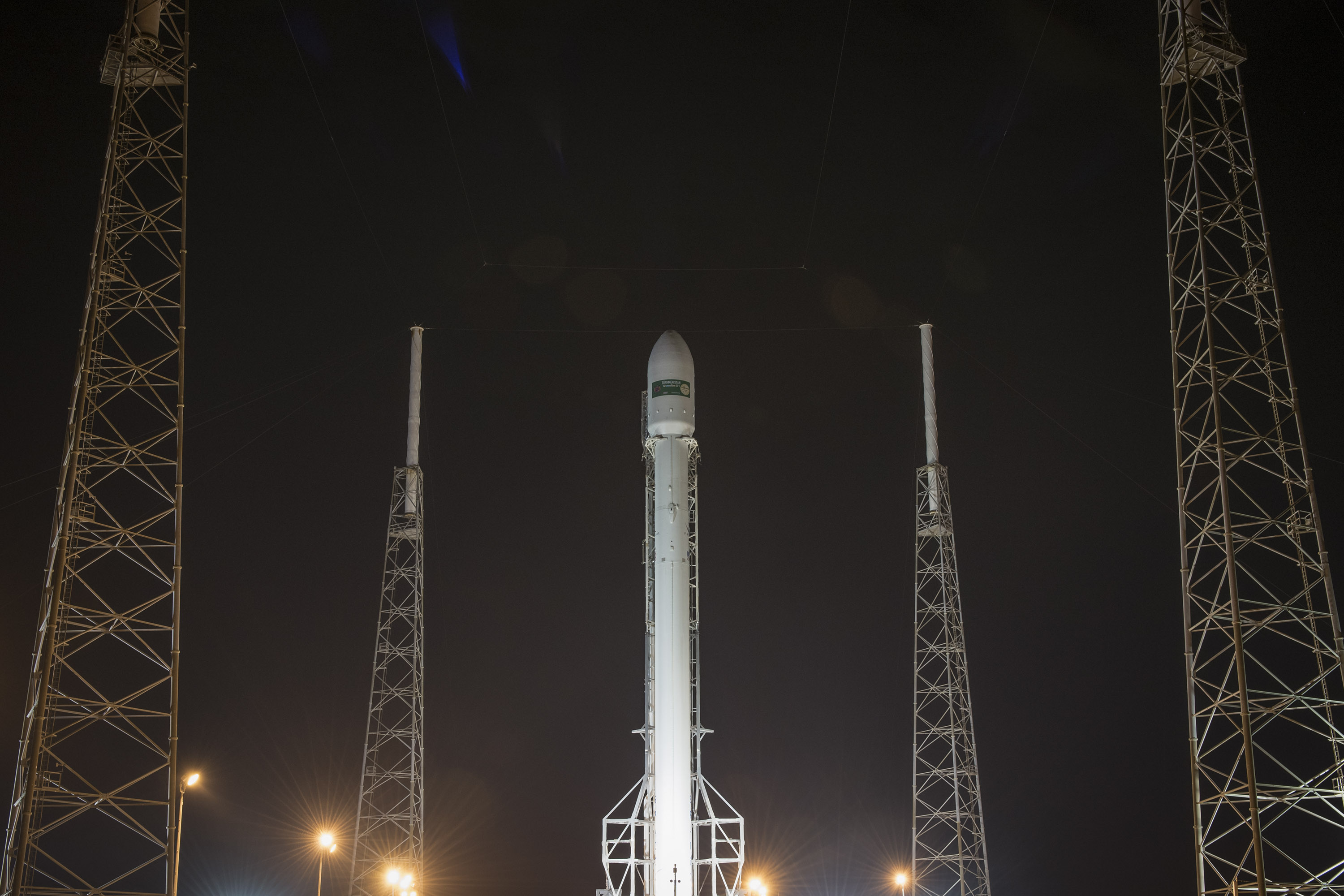
- SUCCESS
TürkmenÄlem 52°E / MonacoSAT
- Rocket: Falcon 9
- Launch pad: CCSFS SLC 40
- Launch date: April 27th 2015, 11:03 pm
- Media:
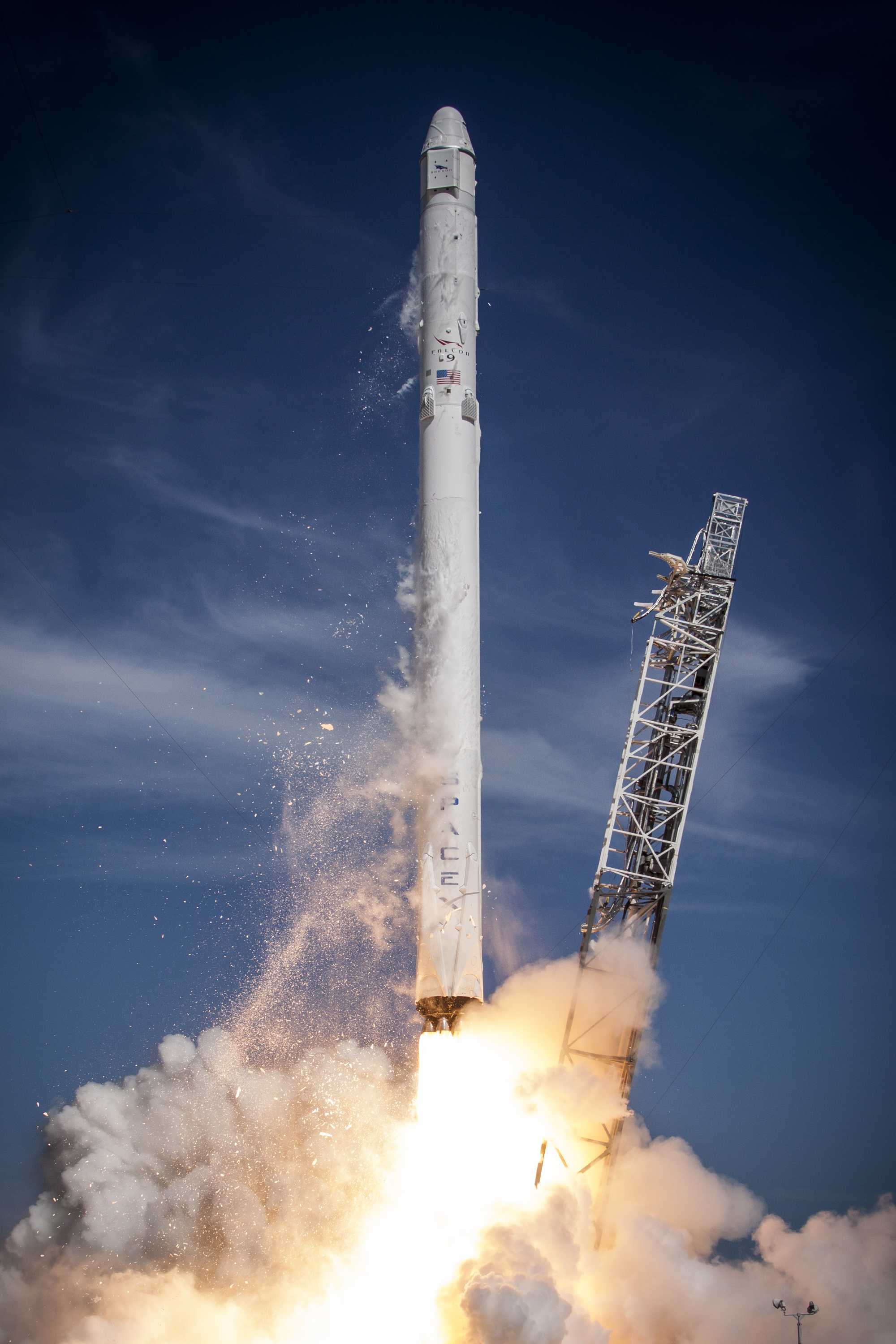
- SUCCESS
CRS-6
- Rocket: Falcon 9
- Launch pad: CCSFS SLC 40
- Launch date: April 14th 2015, 8:10 pm
- Following the first-stage boost, SpaceX attempted a controlled-descent test of the first stage. The first stage contacted the ship, but soon tipped over due to excess lateral velocity caused by a stuck throttle valve resulting in a later-than-intended downthrottle.
- Media:
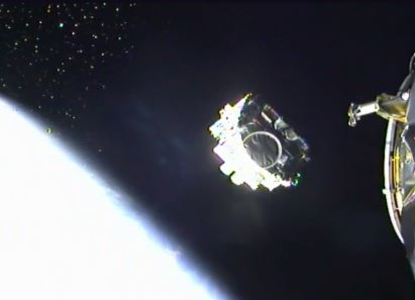
- SUCCESS
ABS-3A / Eutelsat 115W B
- Rocket: Falcon 9
- Launch pad: CCSFS SLC 40
- Launch date: March 2nd 2015, 3:50 am
- The launch was Boeing's first-ever conjoined launch of a lighter-weight dual-commsat stack that was specifically designed to take advantage of the lower-cost SpaceX Falcon 9 launch vehicle. Per satellite, launch costs were less than $30 million. The ABS satellite reached its final destination ahead of schedule and started operations on September 10.
- Media:
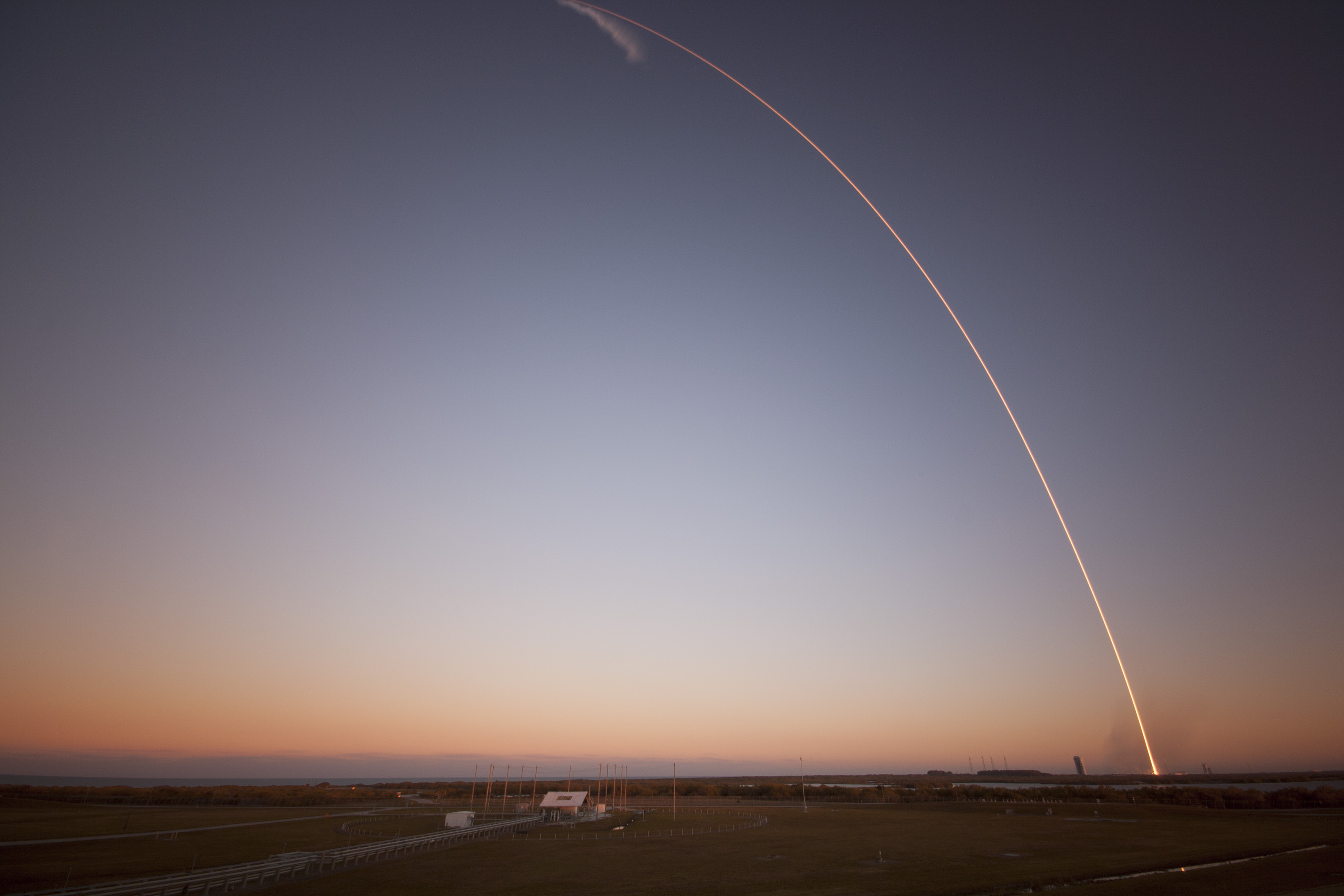
- SUCCESS
DSCOVR
- Rocket: Falcon 9
- Launch pad: CCSFS SLC 40
- Launch date: February 11th 2015, 11:03 pm
- First launch under USAF's OSP 3 launch contract. First SpaceX launch to put a satellite to an orbit with an orbital altitude many times the distance to the Moon: Sun-Earth libration point L1. The first stage made a test flight descent to an over-ocean landing within 10 m (33 ft) of its intended target.
- Media:
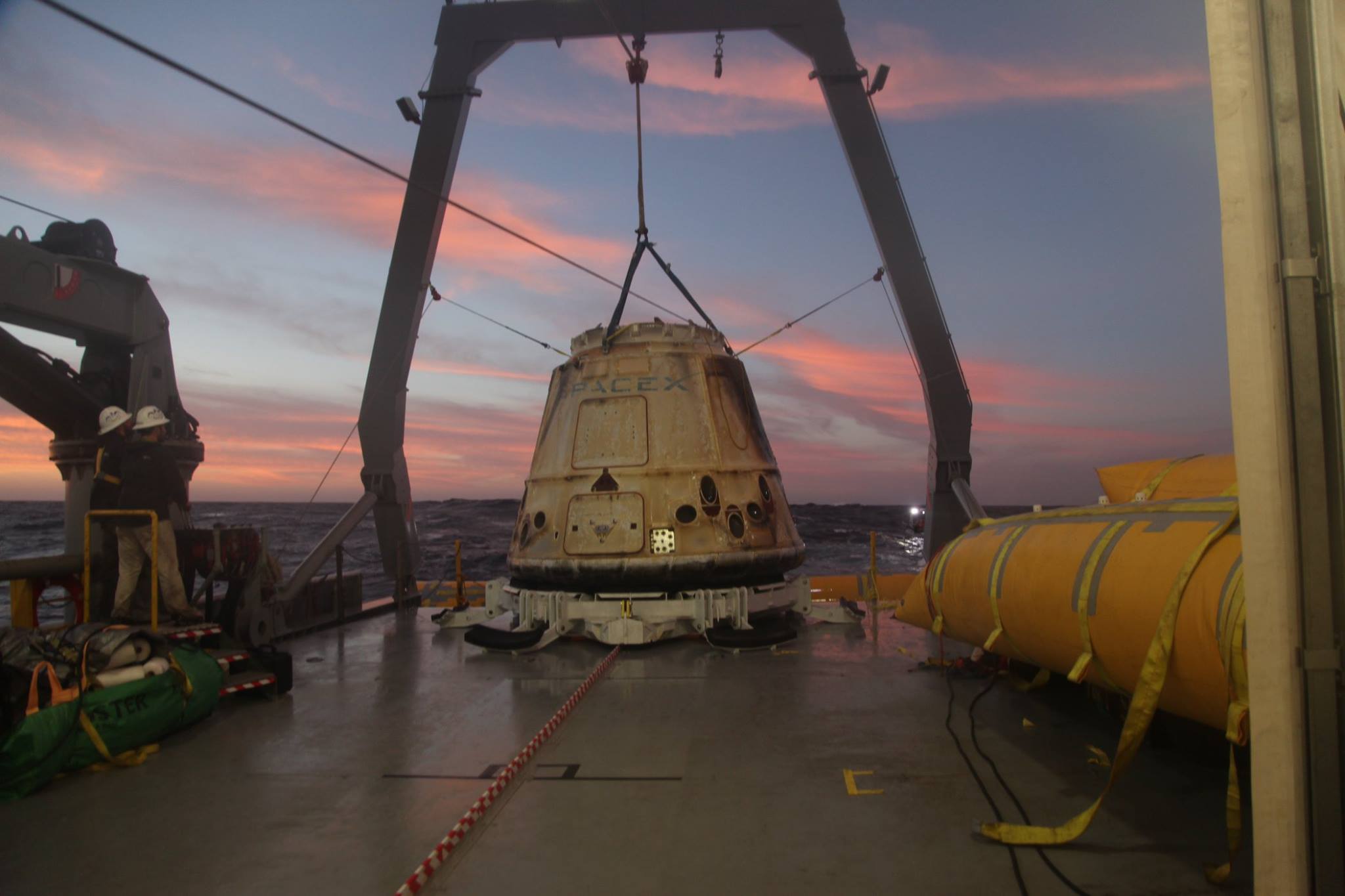
- SUCCESS
CRS-5
- Rocket: Falcon 9
- Launch pad: CCSFS SLC 40
- Launch date: January 10th 2015, 9:47 am
- Following second stage separation, SpaceX performed a test flight which attempted to return the first stage of the Falcon 9 through the atmosphere and land it on an approximately 90-by-50-meter (300 ft x 160 ft) floating platform-called the autonomous spaceport drone ship. Many of the test objectives were achieved, including precision control of the rocket's descent to land on the platform at a specific point in the Atlantic ocean, and a large amount of test data was obtained from the first use of grid fin control surfaces used for more precise reentry positioning. The grid fin control system ran out of hydraulic fluid a minute before landing and the landing itself resulted in a crash.
- Media:
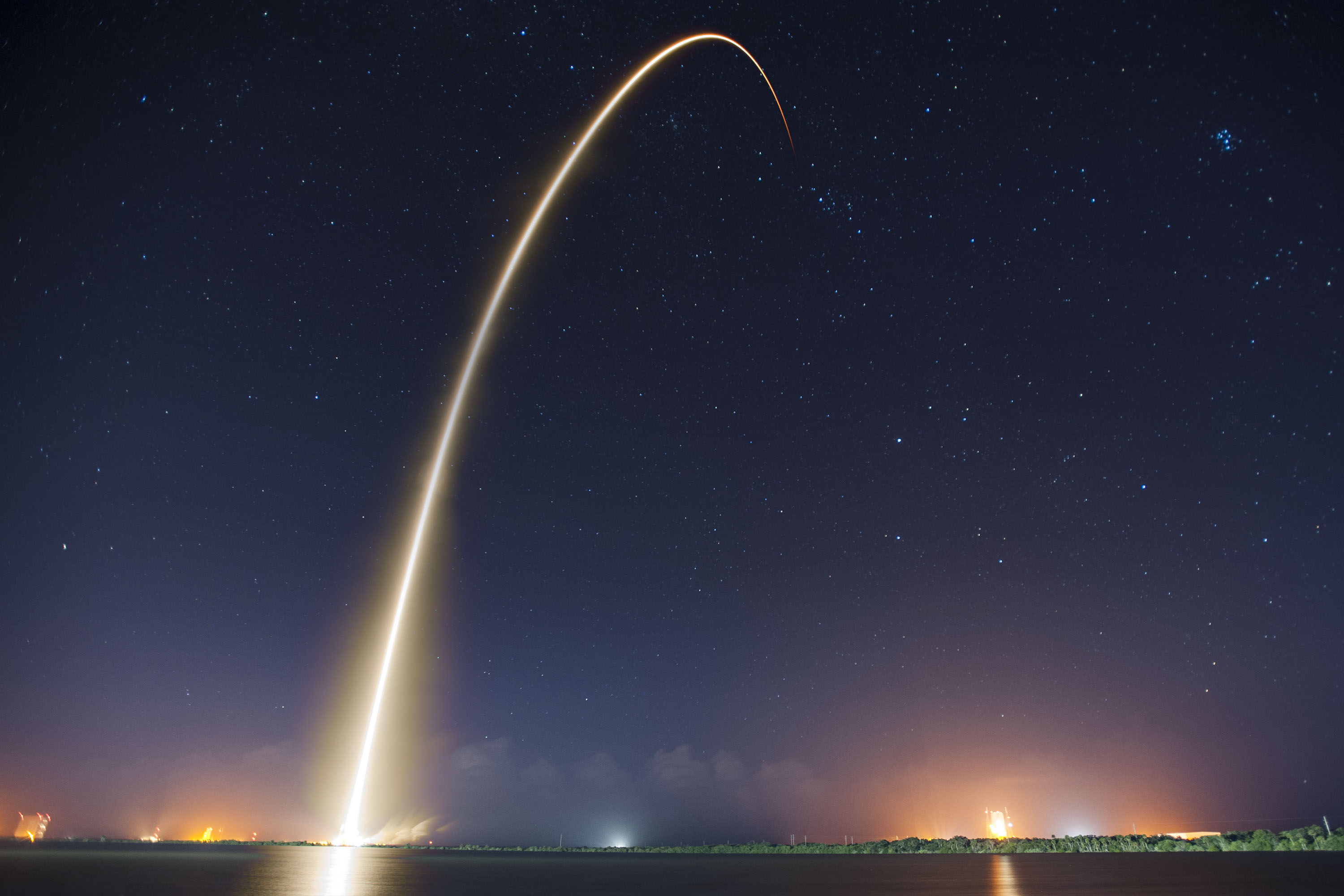
- SUCCESS
CRS-4
- Rocket: Falcon 9
- Launch pad: CCSFS SLC 40
- Launch date: September 21st 2014, 5:52 am
- Media:
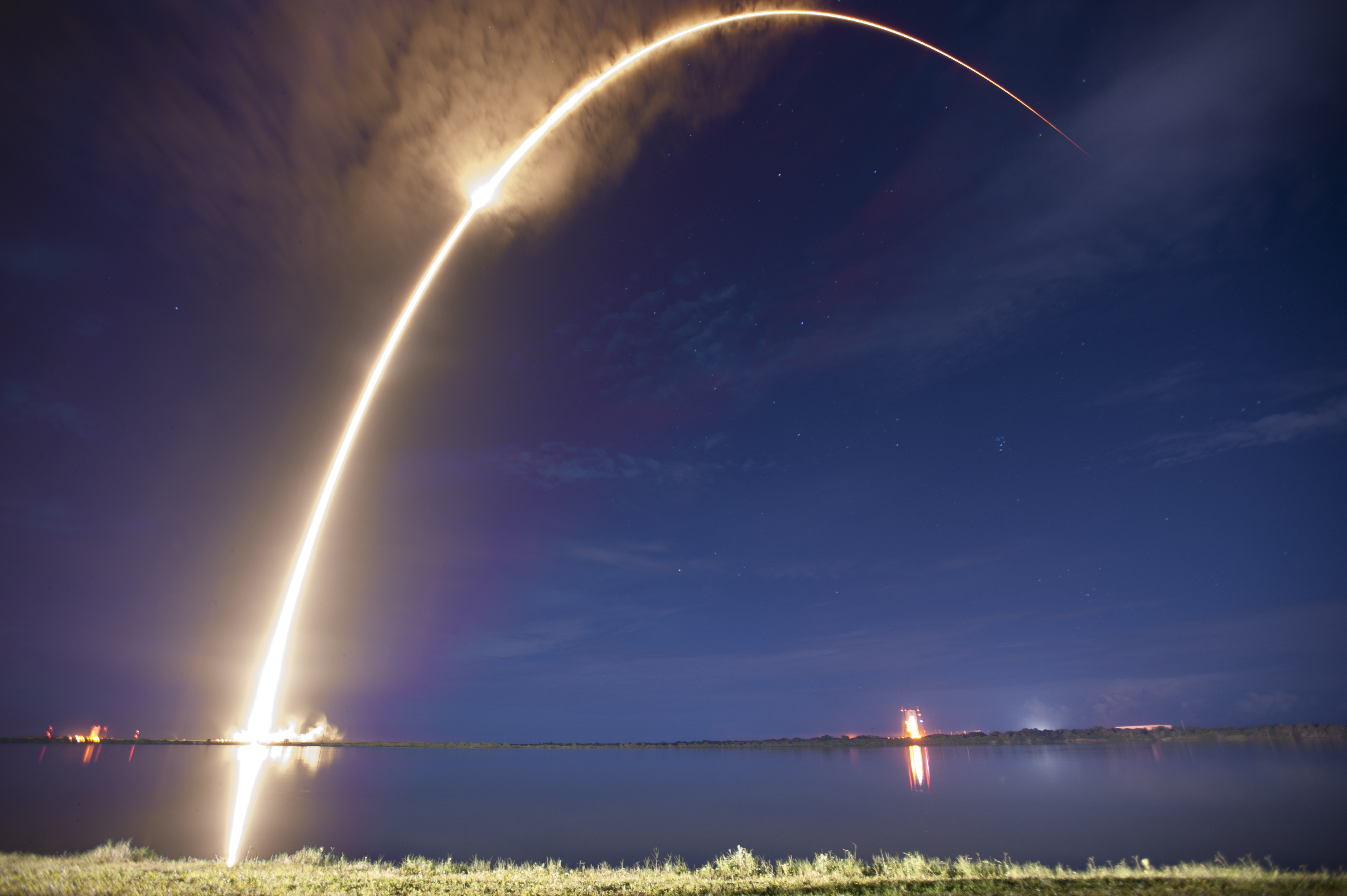
- SUCCESS
AsiaSat 6
- Rocket: Falcon 9
- Launch pad: CCSFS SLC 40
- Launch date: September 7th 2014, 5:00 am
- Media:
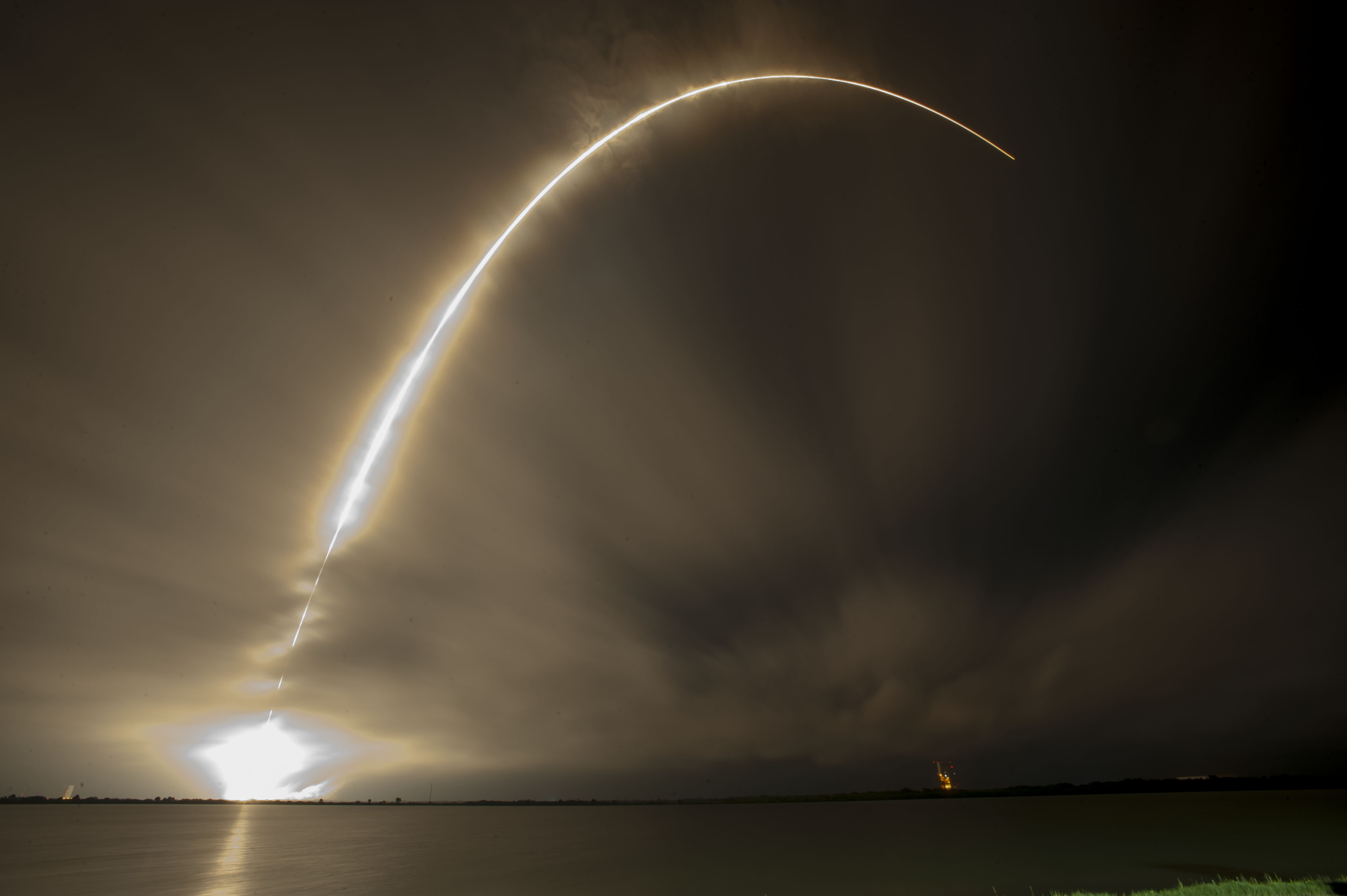
- SUCCESS
AsiaSat 8
- Rocket: Falcon 9
- Launch pad: CCSFS SLC 40
- Launch date: August 5th 2014, 8:00 am
- Media:

- SUCCESS
OG-2 Mission 1
- Rocket: Falcon 9
- Launch pad: CCSFS SLC 40
- Launch date: July 14th 2014, 3:15 pm
- Total payload mass was 1,316 kg (2,901 lb) : 6 satellites weighing 172 kg each, plus two 142-kg mass simulators. This was the second Falcon 9 booster equipped with landing legs. Following second-stage separation, SpaceX conducted a controlled-descent test of the first stage, which successfully decelerated from hypersonic velocity in the upper atmosphere, made reentry and landing burns, deployed its legs and touched down on the ocean surface. As with the previous mission, the first stage then tipped over as expected and was not recovered.
- Media:
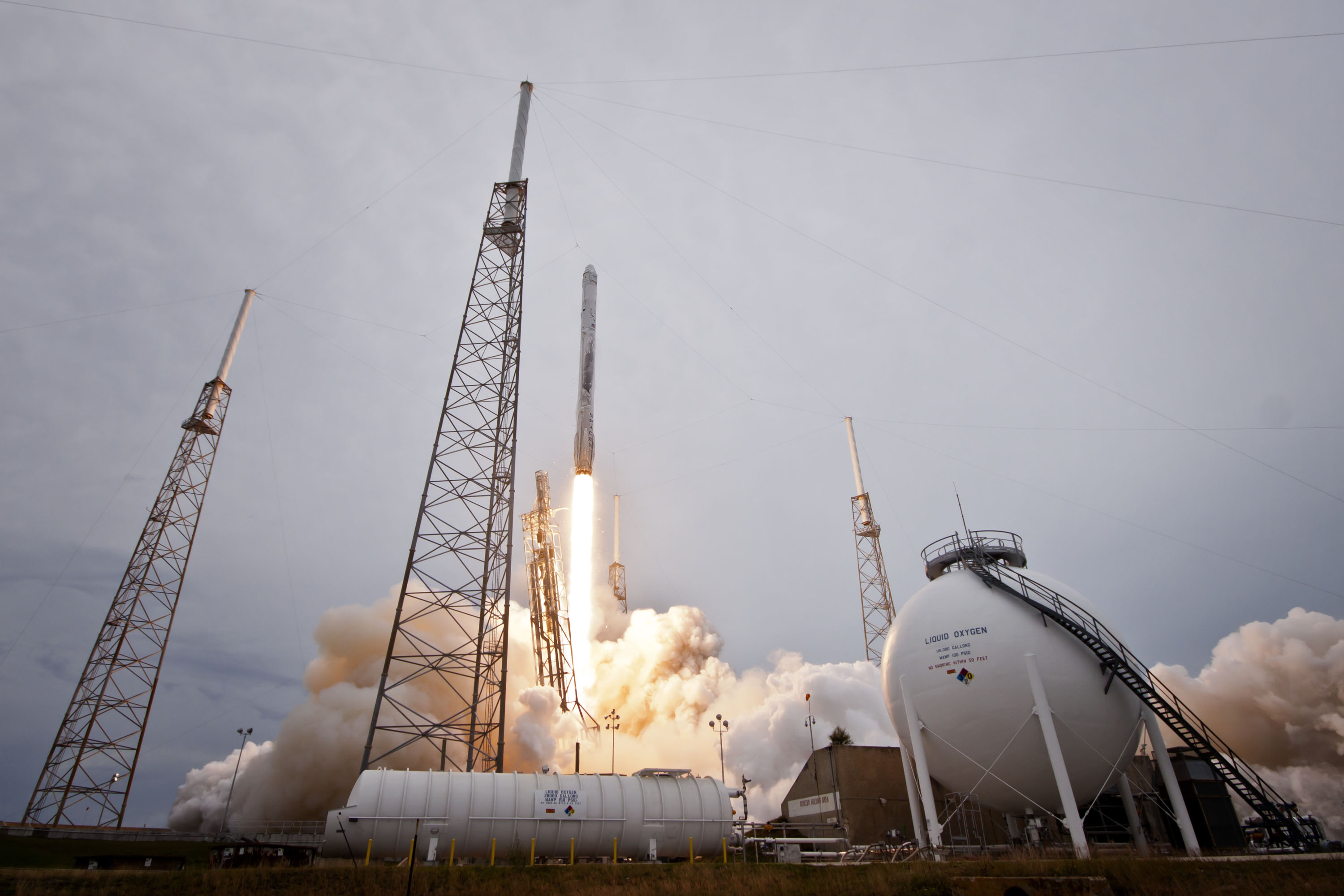
- SUCCESS
CRS-3
- Rocket: Falcon 9
- Launch pad: CCSFS SLC 40
- Launch date: April 18th 2014, 7:25 pm
- Following second-stage separation, SpaceX conducted a second controlled-descent test of the discarded booster vehicle and achieved the first successful controlled ocean touchdown of a liquid-rocket-engine orbital booster. Following touchdown the first stage tipped over as expected and was destroyed. This was the first Falcon 9 booster to fly with extensible landing legs and the first Dragon mission with the Falcon 9 v1.1 launch vehicle.
- Media:
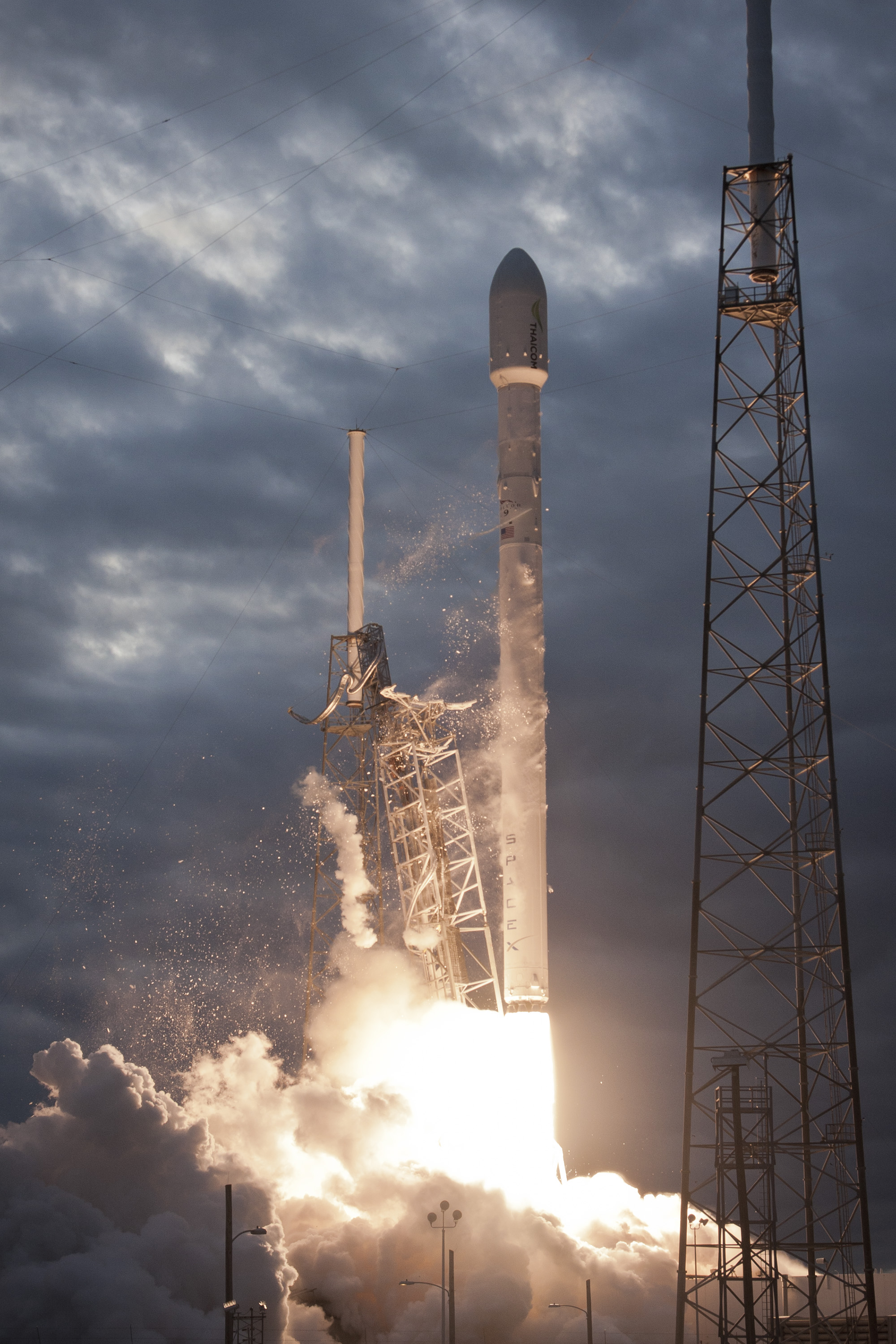
- SUCCESS
Thaicom 6
- Rocket: Falcon 9
- Launch pad: CCSFS SLC 40
- Launch date: January 6th 2014, 6:06 pm
- Second GTO launch for Falcon 9. The USAF evaluated launch data from this flight as part of a separate certification program for SpaceX to qualify to fly U.S. military payloads and found that the Thaicom 6 launch had "unacceptable fuel reserves at engine cutoff of the stage 2 second burnoff"
- Media:

- SUCCESS
SES-8
- Rocket: Falcon 9
- Launch pad: CCSFS SLC 40
- Launch date: December 3rd 2013, 10:41 pm
- First GTO launch for Falcon 9
- Media:

- SUCCESS
CASSIOPE
- Rocket: Falcon 9
- Launch pad: VAFB SLC 4E
- Launch date: September 29th 2013, 4:00 pm
- Commercial mission and first Falcon 9 v1.1 flight, with improved 13-tonne to LEO capacity. Following second-stage separation from the first stage, an attempt was made to perform an ocean touchdown test of the discarded booster vehicle. The test provided good test data on the experiment-its primary objective-but as the booster neared the ocean, aerodynamic forces caused an uncontrollable roll. The center engine, depleted of fuel by centrifugal force, shut down resulting in the impact and destruction of the vehicle.
- Media:

- SUCCESS
CRS-2
- Rocket: Falcon 9
- Launch pad: CCSFS SLC 40
- Launch date: March 1st 2013, 7:10 pm
- Last launch of the original Falcon 9 v1.0 launch vehicle
- Media:

- SUCCESS
CRS-1
- Rocket: Falcon 9
- Launch pad: CCSFS SLC 40
- Launch date: October 8th 2012, 12:35 am
- CRS-1 successful, but the secondary payload was inserted into abnormally low orbit and lost due to Falcon 9 boost stage engine failure, ISS visiting vehicle safety rules, and the primary payload owner's contractual right to decline a second ignition of the second stage under some conditions.
- Media:

- SUCCESS
COTS 2
- Rocket: Falcon 9
- Launch pad: CCSFS SLC 40
- Launch date: May 22nd 2012, 7:44 am
- Launch was scrubbed on first attempt, second launch attempt was successful
- Media:

- SUCCESS
COTS 1
- Rocket: Falcon 9
- Launch pad: CCSFS SLC 40
- Launch date: December 8th 2010, 3:43 pm
- Media:

- SUCCESS
Falcon 9 Test Flight
- Rocket: Falcon 9
- Launch pad: CCSFS SLC 40
- Launch date: June 4th 2010, 6:45 pm
- Media:

- SUCCESS
RazakSat
- Rocket: Falcon 1
- Launch pad: Kwajalein Atoll
- Launch date: July 13th 2009, 3:35 am
- Media:

- SUCCESS
RatSat
- Rocket: Falcon 1
- Launch pad: Kwajalein Atoll
- Launch date: September 28th 2008, 11:15 pm
- Ratsat was carried to orbit on the first successful orbital launch of any privately funded and developed, liquid-propelled carrier rocket, the SpaceX Falcon 1
- Media:

- FAILURE
Trailblazer
- Rocket: Falcon 1
- Launch pad: Kwajalein Atoll
- Launch date: August 3rd 2008, 3:34 am
- Residual stage 1 thrust led to collision between stage 1 and stage 2
- Media:

- FAILURE
DemoSat
- Rocket: Falcon 1
- Launch pad: Kwajalein Atoll
- Launch date: March 21st 2007, 1:10 am
- Successful first stage burn and transition to second stage, maximum altitude 289 km, Premature engine shutdown at T+7 min 30 s, Failed to reach orbit, Failed to recover first stage
- Media:

- FAILURE
FalconSat
- Rocket: Falcon 1
- Launch pad: Kwajalein Atoll
- Launch date: March 24th 2006, 10:30 pm
- Engine failure at 33 seconds and loss of vehicle
- Media:





















































































































































